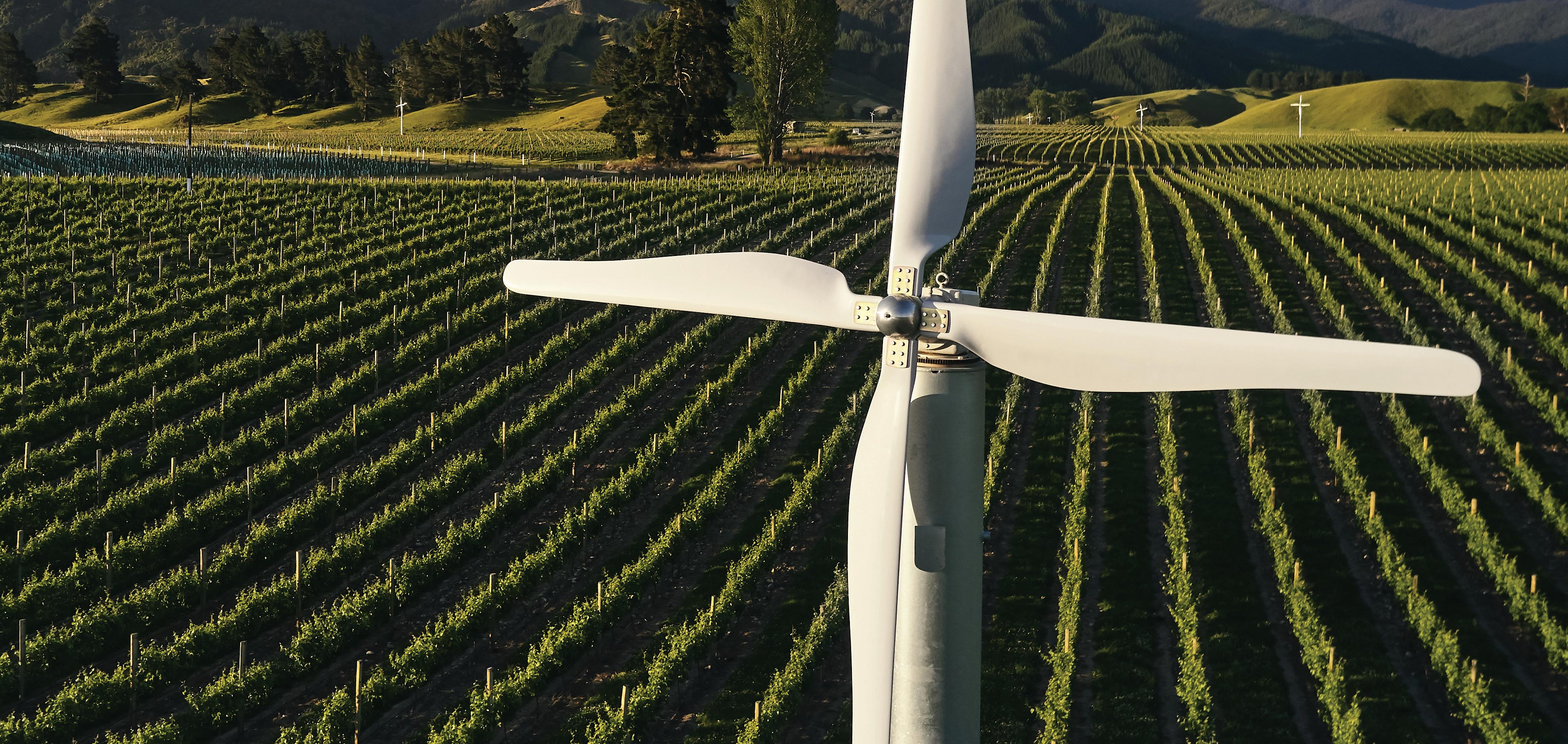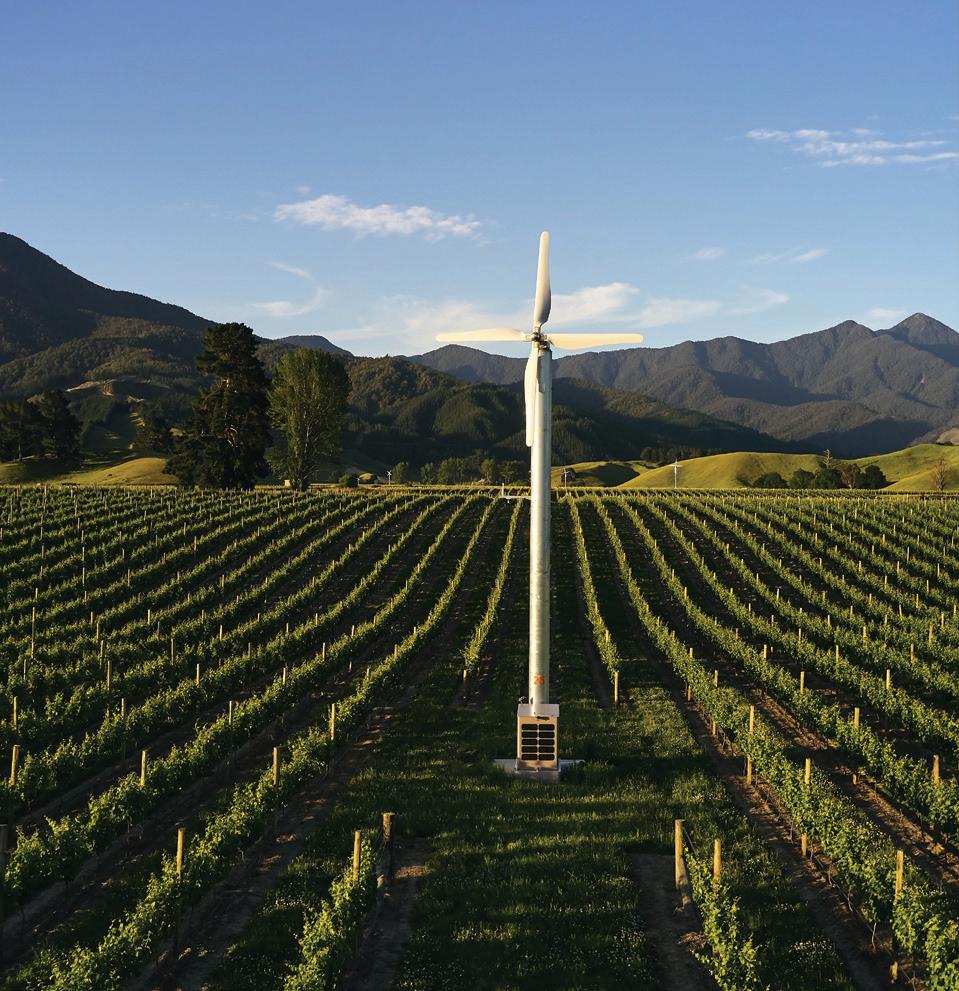














Editorial Sophie Preece
From the CEO
Gregan
Vintage Nina Downer
Profile
Dicey
in Wine Belinda Jackson
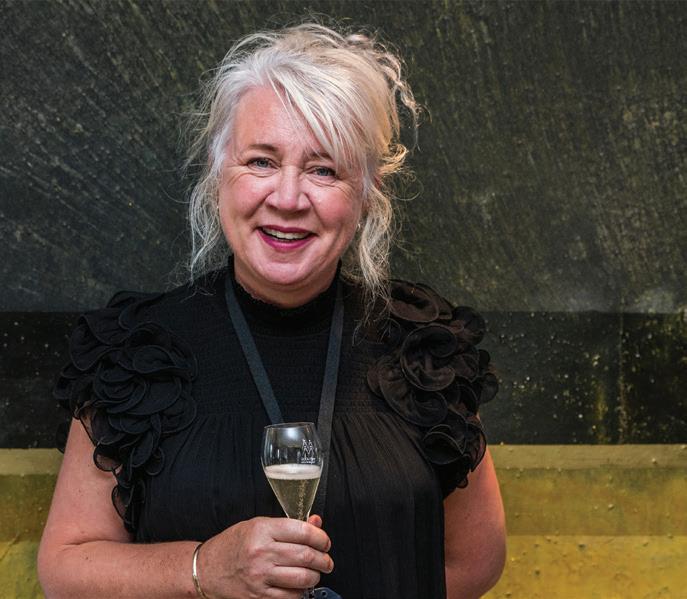
Creasy
Point of View Sue Blackmore
Weather
Morrison
safety
Vineyard Ecosystems
The multi-faceted and globally significant Vineyard Ecosystems Programme is offering a better understanding of the myriad relationships between microorganisms, water, cover crops, vines, pests and diseases.


The 2022 Corteva Young Viticulturist of the Year believes his urban upbringing gives him a fresh perspective on the science and art of his trade. “I don’t have any preconceived ideas of what it should be,” says Tahryn Mason.
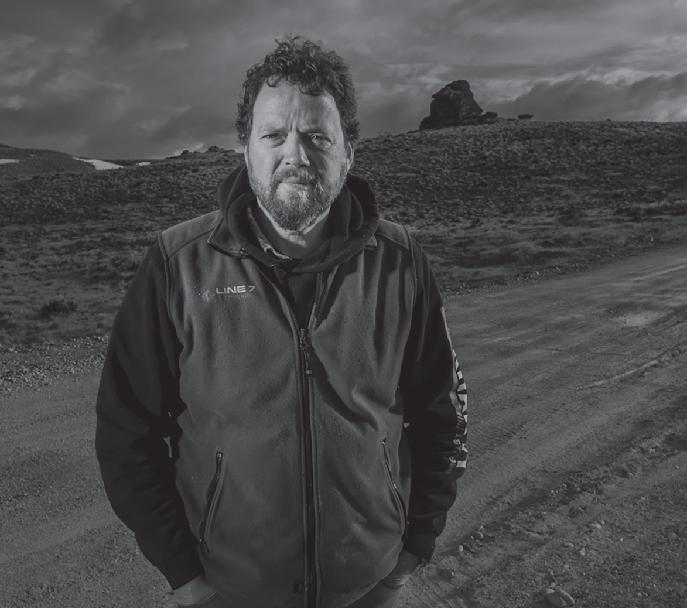
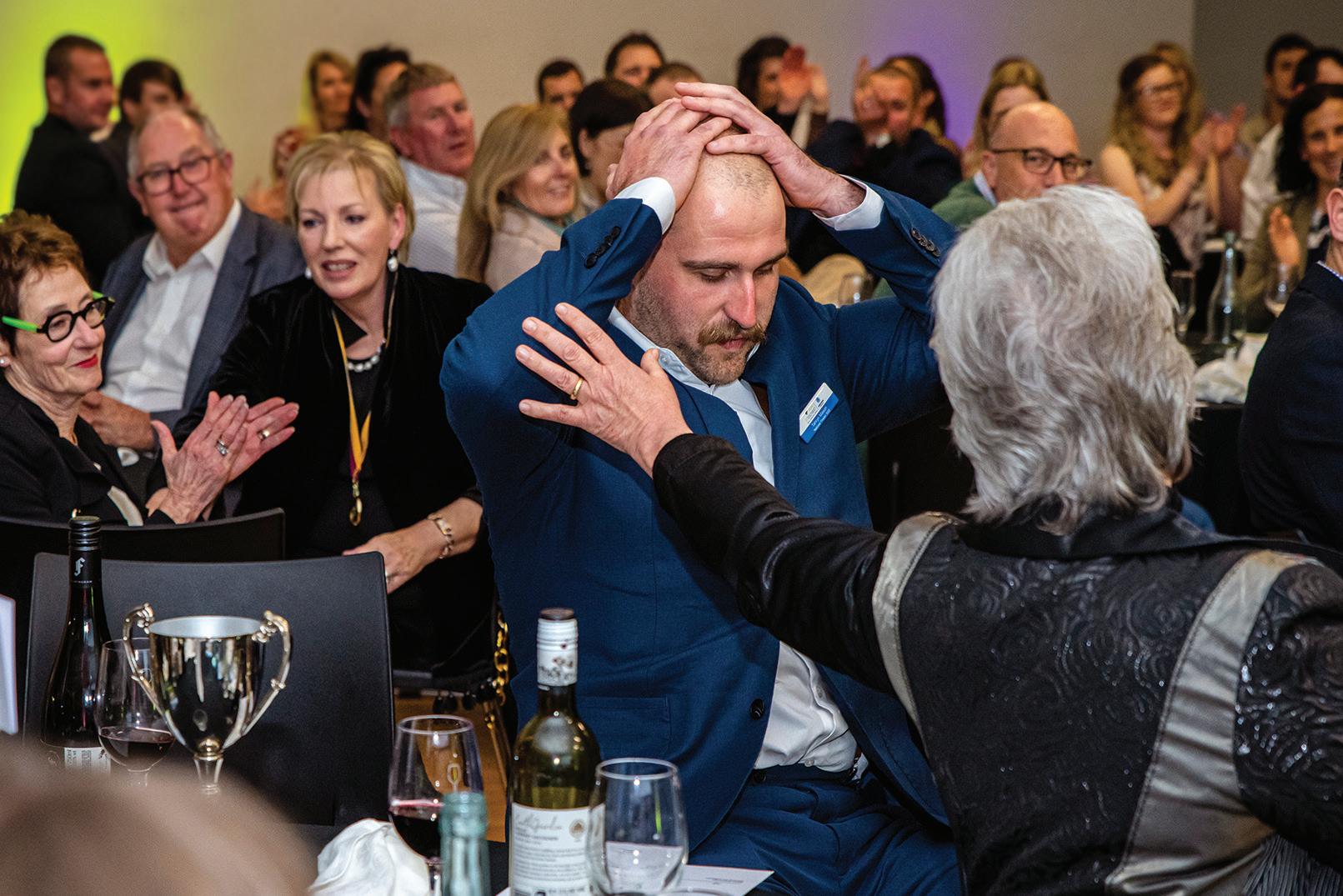
As government undertakes
review of the Recognised Seasonal Employer scheme, Brendon Burns visits Poutasi village in Samoa to hear from the workers.
EDITOR Sophie Preece sophie@sophiepreece.co.nz
Wellington Wine Country: Joelle Thomson mailme@joellethomson.com
Hawkes Bay: Olly Styles oliverstyles@hotmail.com
Central Otago: Jean Grierson Canterbury: Jo Burzynska jo@joburzynska.com
Upper North Island: Stephen Pollard stephenp@ruralnews.co.nz
Ph: 021 963 166
Central North Island: Lisa Wise lisaw@ruralnews.co.nz Ph: 027 369 9218
Lower North Island: Ron Mackay ronm@ruralnews.co.nz Ph: 021 453 914
South Island: Kaye Sutherland kayes@ruralnews.co.nz Ph: 021 221 1994
Jodi Blair jodi.blair@nzwine.com
Ph: 09 303 3527, ext 0 Fax: 09 302 2969
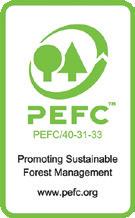

Mobile: 027 700 2371 New Zealand Winegrowers PO Box 90 276, Auckland Mail Centre, New Zealand
PUBLISHING & PRE-PRESS Rural News Group PO Box 331100, Takapuna, Auckland 0740 Ph: 09 307 0399
Location: Top Floor, 29 Northcroft Street, Takapuna, Auckland 0622
Publisher: Brian Hight
Managing Editor: Adam Fricker Production: David Ferguson, Rebecca Williams

Published by Rural News Group Ltd under authority of New Zealand Winegrowers Inc. Unless directly attributed, opinions expressed in the magazine are not necessarily those of Rural News Group and/or its directors or management, New Zealand Winegrowers Inc. or its constituent organisations. Published every second month. One free copy is mailed to every member of the New Zealand Winegrowers Inc, the New Zealand Society of Viticulture & Oenology and the New Zealand Vine Improvement Group, and to such other persons or organisations as directed by the owners, with provision for additional copies and other recipients to be on a subscription
ISSN 1174-5223
New Zealand’s wine industry has been built on the endeavours of its history makers; men and women who’ve invested decades of time, knowledge and passion into our vines, wines, research and markets. This year six of those industry stalwarts have been recognised as New Zealand Winegrowers (NZW) Fellows, in an accolade that celebrates the service and dedication of industry icons.
This editions profiles Jim and Rose Delegat, the siblings who’ve driven a 75-year-old family business to international success, and have been named Fellows for services to exporting and industry organisations. Wine writer, advisor and educator Joelle Thomson talks to Clive Paton and Phyll Pattie about their passion for Pinot Noir and obsession for tree planting, while Lorraine Carryer talks to Dominic Pecchenino, whose drive to grow the science behind our vines has changed the face of New Zealand’s wine and grape industry research. And, finally, this edition profiles Hawke’s Bay grower Chris Howell, who has been named a Fellow for his tireless services to industry organisations and education
“The Roll of Fellows honours the modern pioneers of the New Zealand wine industry,” says NZW Chair Clive Jones. “We wholeheartedly thank Dominic, Jim, Rose, Clive, Phyll and Chris for their years of service, and their role in shaping the New Zealand wine industry to be what it is today.”
This edition of Winegrower Magazine also delves into the outcomes of the seven-year Vineyard Ecosystems Programme, as well as the rich reservoir of data that remains untapped, available for future research. “With such a massive and rich data set we are going to be pulling interesting things out of this for years,” says Dr Sarah Knight on page 38.
Sophie Preece EDITORJoelle - a writer, published author and wine lover, who also works as a wine adviser - talks to NZW Fellows Phyll Pattie and Clive Paton.

Go to page 20
Technology writer
Tony reports on the
Toitü & Technology conference held as part of the Corteva Young Viticulturist of the Year competition.
Go to page 40
Stephanie McIntyre
Stephanie, a certified sommelier and communications expert, talks to Jane Skilton, MW, about the wine educator’s huge contribution to New Zealand wine.

Go to page 60
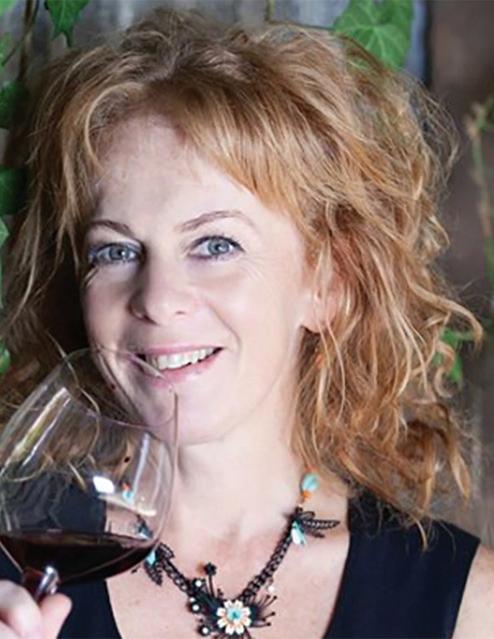
With over 20 years’ experience working with the wine industry throughout the New Zealand Pacific region, we understand what it takes to enhance productivity and decrease costs for your winery. We can help you make your vintage a success by:

Controlling fermentation
Providing temporary cooling for cellars or other critical functions



Providing additional power when needed
We are on call 24 hours a day, seven days a week to serve you.
Reputation, as everybody knows, is a hugely valuable asset – hard to earn and easy to lose.
For New Zealand Winegrowers (NZW) one of our primary goals is to protect and enhance the reputation of New Zealand wine. We don’t do this by ourselves of course, as every grower and winery is a vital contributor to that reputation, as are all the regional winegrowing bodies.
As such it was disturbing to see allegations in a recent Sunday programme about the treatment of Recognised Seasonal Employer (RSE) scheme workers in our industry. This was not a clear representation of the way we as an industry care for our people, and reflected badly on us all. At the time of writing the outcome of the investigation into the allegations is not known, so I will not dwell on the specific issues raised in the programme, but rather it is timely to reflect on the importance of reputation.
During the past 30 or so years, our industry has gone from a relatively small domestically focused industry with about 6,000 hectares under vine, to an industry directly employing over 7,000 Kiwis (and many more indirectly) with more than 40,000ha of producing vines, earning nearly $2 billion in export receipts, and generating about $500 million in domestic sales. That growth and success is due to our reputation for quality, for sustainability, for premium products, which supports the decisions of consumers in New Zealand and overseas each and every time they buy a New Zealand wine. It is a reputation that sees, on average, consumers pay more for New Zealand wine than they do for wines from other countries. And it is that reputation that hopefully will see tourists returning to New Zealand to visit our wineries now that the borders are fully open once again.

In short, with a positive reputation, our industry has grown and added a lot of value to New Zealand and its regions. Curated
well, that reputation will underpin future success and growth of our industry over the next generation and beyond. On the other hand, lose that reputation, or bring it into question, and that would put everything that has been achieved at risk.
Protecting and enhancing the New Zealand wine brand reputation is the responsibility of every grower, winery, contractor and employee in the industry. Both small things and big things all have the potential to add to, or diminish, the reputation of New Zealand wines.
the Bragato Research Industry research programme, and is intrinsic to the New Zealand wine brand story we talk about in-market. From an advocacy perspective, protecting and enhancing the reputation of our industry is fundamental, from legislation such as the Wine Act, to the Geographical Indications legislation - these underpin the industry. We also produce a range of guides for industry members, all of which are aimed at protecting the reputation of the industry (from the Spray Schedule to our International Winemaking
“The very high standards set by the vast majority of our industry members are the reason our wines and our industry have developed such a positive global reputation. The ongoing success of New Zealand’s wine industry depends strongly on our reputation for the quality of our wine, respecting the land, and above all else, respecting and nurturing our people.” Philip Gregan
From a big picture perspective, that means the industry needs to be seen to be committed to sustainability – to be looking after the land, water and air that is the source of the grapes we grow. It means striving to produce high quality grapes and wine that distinctly reflect their origins in Aotearoa and our regions and subregions. And it means looking after the people who grow the grapes and make and sell our wines.
From a NZW perspective, social license to operate is a key driving force behind the Sustainable Winegrowing New Zealand (SWNZ) programme. Building our reputation for quality underpins
and Labelling guides to our Code of Conduct for Our People). You can find these resources on nzwine.com/members.
The very high standards set by the vast majority of our industry members are the reason our wines and our industry have developed such a positive global reputation. The ongoing success of New Zealand’s wine industry depends strongly on our reputation for the quality of our wine, respecting the land, and above all else, respecting and nurturing our people. Ensuring that good work continues in the future has to be a priority for each grower and winery, for NZW and for all regional associations.
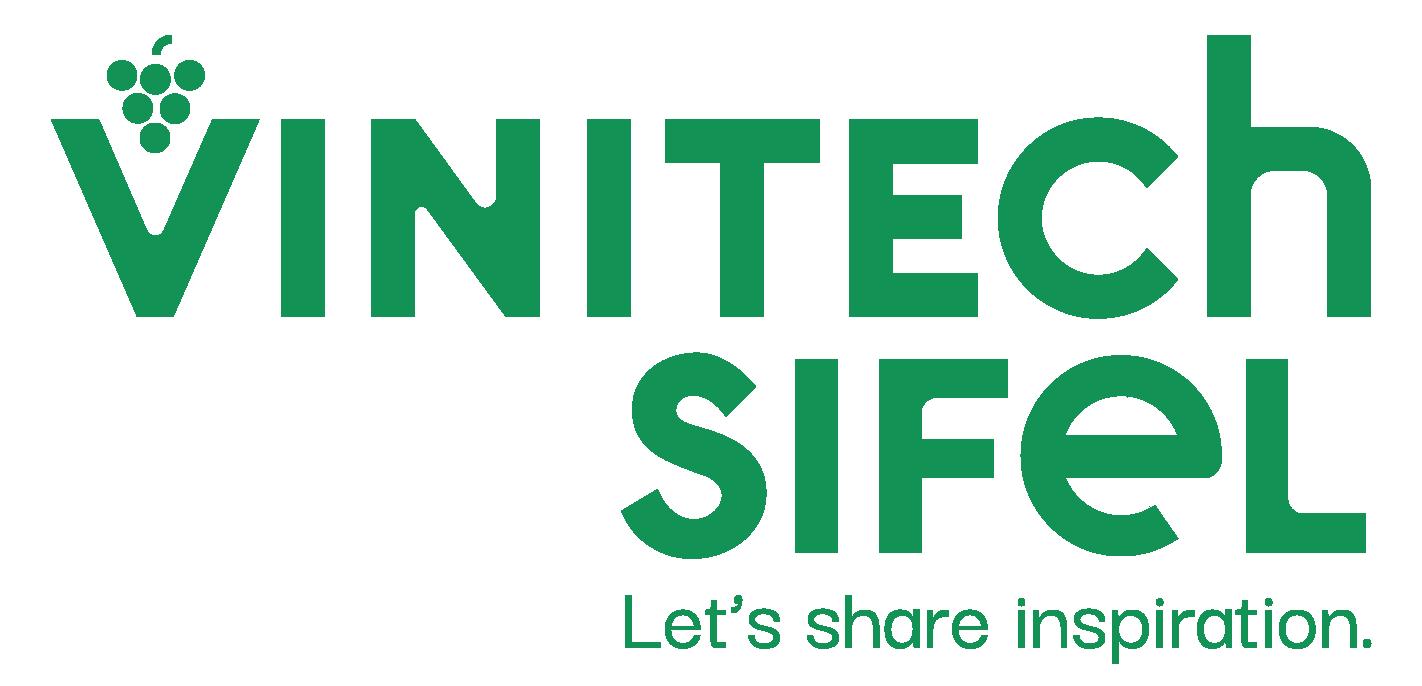
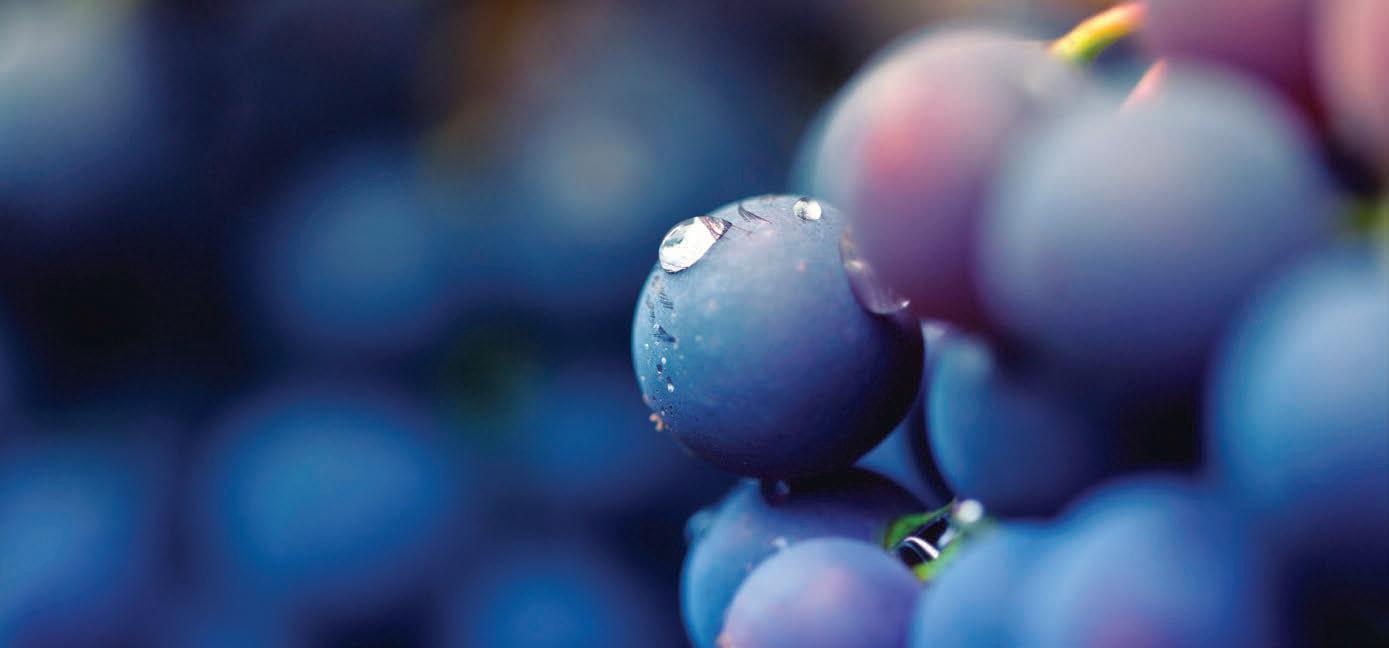
The New Zealand Winegrowers (NZW) Go You! workshops are running again in 2022. The workshops aim to help boost morale, reignite enthusiasm, enhance mental wellbeing, and provide tools and resources to support this. The aim is for attendees to feel re-energised, back in control of their wellbeing and future, and ultimately ready to take positive action. Workshops will take place throughout October in Marlborough, Hawke’s Bay, Auckland and Central Otago. Workshops in other regions can also be arranged upon request. Find out more information and book your tickets at nzwine.com/en/events/go-you-workshops/.
WorkSafe has information on mentally healthy work at worksafe.govt.nz/topic-and-industry/work-related-health/mentalhealth/mentally-healthy-work.
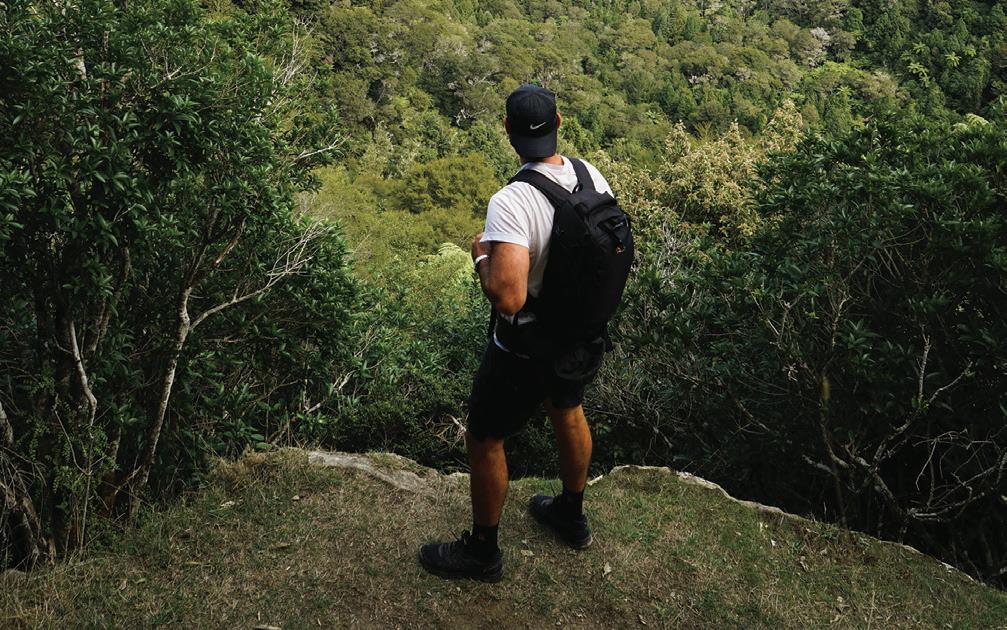
Read more on NZW health and safety initiatives on page 80

New Zealand grape growers and wineries are looking to the future with renewed certainty and confidence, according to the NZW Annual Report. An improved harvest, accessible markets, and consumers demanding more New Zealand wine than ever, are huge benefits for the sector, says the report. “This positive environment provides the opportunity to push ahead, ensuring we are positioned well for the future.” Tempering this confidence are significant challenges, including inflation and cost increases, bringing into question the reinvestment critical to long term growth, it adds. Labour availability continues to be a key challenge, along with domestic and international supply chain uncertainty. “In this environment, growers and wineries are focusing on the core fundamentals that drive the success of our sector – supplying our customers across the globe with highly distinctive, premium, sustainable wines that can only be sourced from Aotearoa New Zealand.”
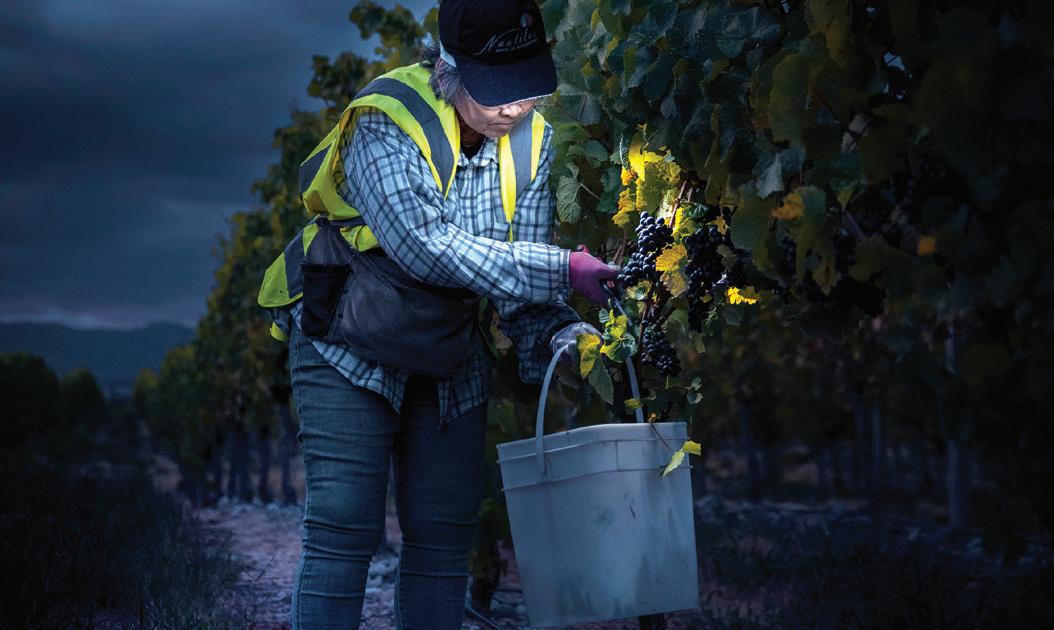
Read the report on the News & Media pages of nzwine.com
NZW is assisting Horticulture New Zealand with an ACC funded project looking at ways to improve health and safety across horticulture and viticulture. This is an ongoing project aimed at strengthening system capability by creating resources designed specifically for the industry. Contact anna.cameron@nzwine.com to hear more about the project and ways to be involved.
on NZW health and safety
The New Zealand Society for Viticulture and Oenology (NZSVO) is to host its third International Cool Climate Wine Symposium (ICCWS) in January 2026. “It is quite the coup that the NZSVO has secured another opportunity to host the ICCWS,” says Philip Gregan, Chief Executive of NZW. “It will be such a pleasure to share the New Zealand wine story with our industry peers and reveal how far we’ve come since New Zealand last hosted the ICCWS 20 years ago.”
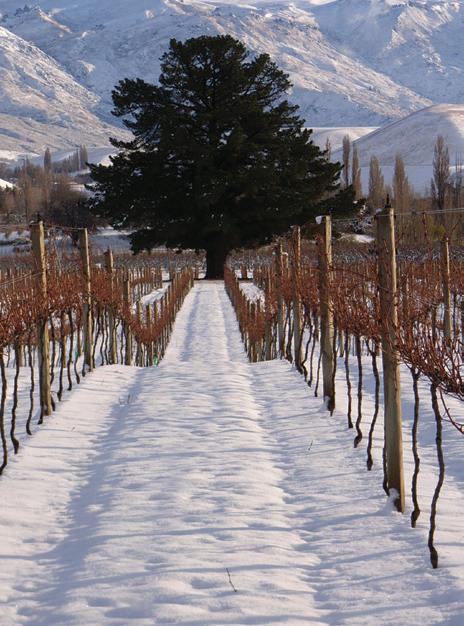
NZSVO Chair Jeff Sinnott says the organisation is “beyond excited” to host a third ICCWS. “New Zealand has grown so much since we last hosted and this past experience puts us in a unique position to create an immersive and engaging event.” Its committee is embracing the opportunity to extend their skill sets to drive the design of a three day ‘Pure Innovation’ conference programme. “There are some very exciting research projects and industry trials happening at the moment and we hope to bring them to light in four years’ time,” says Jeff.
The conference will take place at Te Pae Christchurch Convention Centre and include pre and post touring options of the country’s world class wine growing regions, delivering an estimated $1.1m to New Zealand’s economy.
Tourism New Zealand General Manager New Zealand and Business Events, Bjoern Spreitzer, says the conference will provide positive benefits to the sector, the tourism industry and the country. “This event is where international research and business partnerships in one of our leading export sectors can literally begin over a glass of wine.”
Bragato Research Institute (BRI) has boosted its extension team, with the addition of Dr Carmo Vasconcelos, Paul Epee and Chris Ireland. The extension team’s role is to communicate research findings to the industry, ensuring information and tools delivered by research programmes can be adopted and applied by members to make better-informed decisions for their businesses. As well as transferring New Zealand research, the scientists translate knowledge from elsewhere to meet New Zealand conditions.
Carmo is an Extension Specialist with global experience in wine science. She has a PhD in grapevine physiology as well as a post-doctorate on sustainable viticulture, and another on grapevine cold hardiness. She was an Associate Professor and Extension Specialist of Viticulture at Oregon State University from 1994 to 2006, where her own research continued in grapevine physiology, particularly carbon assimilation and allocation, water relations, and the impact of rootstock on scion physiology. From 2013 to 2017, Carmo was an Associate Professor of Viticulture at Eastern Institute of Technology in Napier, where she taught grapevine physiology and researched viticulture issues relevant to the New Zealand winegrowing industry.
Paul is a Research and Extension Specialist and his role will be split between helping to shape and deliver BRI’s applied viticulture research programme, enhancing and delivering the extension program and supporting industry’s technical needs. Paul is in the final stages of completing a PhD in
agronomy and viticulture with Lincoln University, and has more than a decade of experience in research management, extension and agronomy experience working with multiple crops in Australia and his home country of Cameroon in Central Africa. Work for his PhD has focused on winter pruning in grapes and the effect on growth, yield and grape quality.
Chris is a Viticulture Technical Specialist, focused on establishing BRI’s
After a two year pause on the Central Otago Burgundy Exchange, six stagiaires (interns), have set off for France, in the largest contingent since the exchange was established in 2006. Central Otago Winegrowers’ Association (COWA) General Manager Jake Tipler says there were a lot of applications from members this year, with winegrowers keen to get travelling again. “Experiencing a vintage in another wine growing region is a fantastic educational and cultural experience and they will bring this
newfound knowledge back to their roles in Central Otago.”

Promote Dunstan (using proceeds donated from the Clyde Wine and Food Festival) and French cooperage Tonnellerie Cadus provided funding to assist with travel costs to Burgundy. Rochelle Young from Prophet’s Rock is one of this year’s stagiaires:
“A compelling part of the winemaking journey is connecting with the local community, discovering mentors along the way and in turn passing on knowledge, skills
new commercial viticulture field trial unit. Chris will lead client and industry funded projects mainly centred on the evaluation of crop protection products, with responsibility for pricing, trial establishment and delivery through to reporting. Chris has more than 30 years’ experience in New Zealand’s wine industry, a science degree in viticulture from Charles Stuart University, and runs his own viticulture consultancy business.
and enthusiasm for our craft,” she says. “I am looking forward to cultivating a greater understanding of and appreciation for the culture, history and traditions of Burgundy and bringing back different perspectives, philosophies and bottles to share.”
Rochelle will be joined on the exchange by Rosa Cockburn from Lapis Lazuli Vineyard, Tiffany Da Silva from Peregrine Wines, James Dobbs from Rippon, Molly Hermann from Felton Road, and Ben Leen from Amisfield.
Weekend of Wine
centralotagowine.co/upcoming-events
8-9 October
The Central Otago Wine Experience will be held in the Mt Difficulty Wines Barrel Hall in Bannockburn from 11am to 2pm on 9 October, as part of Eat.Taste.Central and the Central Otago Weekend of Wine. The unique wine tasting will feature a select group of world class wineries from across the region showcasing their range of wines. The Weekend of Wine also includes the MiNDFOOD Long Lunch at Carrick on 8 October, with Master Sommelier Cameron Douglas.
4-13 November
fawc.co.nz/
Hawke’s Bay’s F.A.W.C (Food and Wine Classic) returns in fantastic fashion with a spectacular programme of 50 tasty treats to kick off summer. The programme includes a delicious line up of wonderful wine events, including some of the region’s iconic producers.
Wine & Food Festival
11 February marlboroughwinefestival.com
New Zealand’s longest running food and wine event will be held in the heart of wine country next year, with a shift to the Renwick Domain. Showcasing the region’s best wine along with delicious food, world class entertainment, chefs, competitions and masterclasses, the Marlborough Wine & Food Festival is a fantastic way to soak up the people and produce of New Zealand’s biggest winegrowing region.
North CanterburyWine & Food Festival
5 March ncwineandfood.co.nz

3 November
nzwine.com/events
The 2022 Tonnellerie de Mercurey Young Winemaker of the Year national final is on 3 November at Kim Crawford Winery in Marlborough, with the awards dinner to be held at Wither Hills that evening. The eighth Young Winemaker competition will bring together top talent from across New Zealand’s wine regions, battling for the title. Over the years there have been four winners from Marlborough, and one winner apiece from Hawke’s Bay, Central Otago and Wairarapa. Last year’s winner was Ben McNab (pictured) from Palliser Estate in the Wairarapa.
20 November toastmartinborough.co.nz
Toast Martinborough promises to be the ‘Best Sunday Ever’, thanks to its unique oneday multi-site event, with each vineyard site offering fine wine, gourmet food and talented musicians.

Bridge Pa Wine Festival
21 January 2023 Eventbrite.co.nz
The wineries of the Bridge Pa Triangle Wine District will run a collective annual wine festival on Saturday 21 January. All wineries will be connected by Hop On/ Hop Off Buses throughout the day, allowing guests to visit multiple wineries and enjoy a multitude of wine experiences.
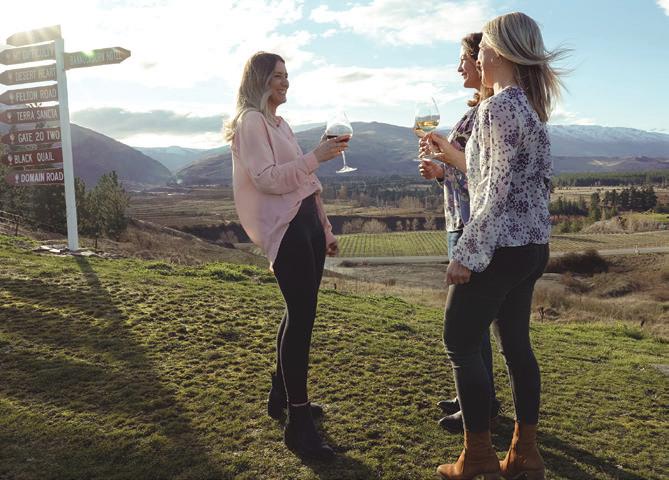
The coolest little wine festival is back in business after a tough couple of Covidcancelled years. All tickets from 2021 and 2022 can be used this year, so disappointed festival lovers can gather under the oaks in Glenmark Domain, along with 70 stallholders, including the region’s beloved wine producers.



Variety is the spice of life, and this year’s New Zealand Society for Viticulture & Oenology workshop will delve deep into Alternative Varietals. The technical workshop will run for a full day in Marlborough on 18 October, with five sessions led by industry practitioners, researchers and leaders in viticulture, winemaking and marketing.
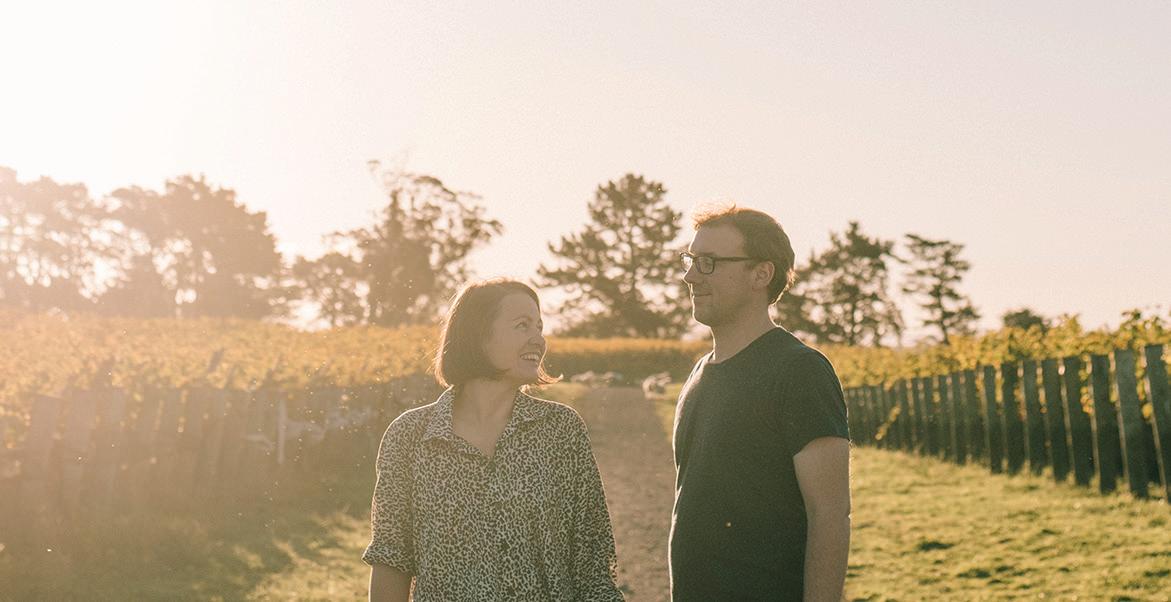
We bring your label vision to life and take your foil design to another level. Contact us.

Defining the essence of the New Zealand wine brand, and what makes it truly unique and distinctive on the world stage, has been a key focus for the New Zealand Winegrowers (NZW) marketing team this year. In the next couple of months, we look forward to travelling to our wine regions to share with our members how this refreshed brand story will be the foundation cornerstone on which our regional and member winery stories are built. This alignment is critical to maximise the impact of our messaging. A focused approach is also essential. This branding work has been informed by global research that helps us pinpoint high value markets and consumers for New Zealand wine, so we can be more targeted and gain a better return on our marketing investment. This ‘marketing reset’ has given us some real energy and enthusiasm for what we can achieve together, and how we can convey the sense of purity, care and innovation that makes New Zealand wine ‘Altogether Unique’. Read more on page 14.
Ngā mihi Charlotte Charlotte Read is General Manager Marketing at NZW
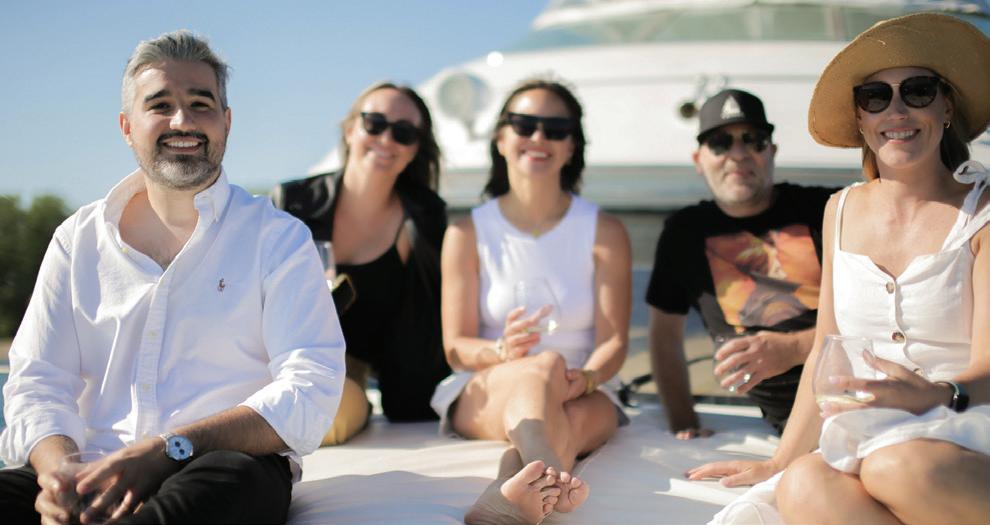
NZW recently collaborated with Tourism New Zealand in Canada to celebrate the reopening of New Zealand’s borders, by recreating a Marlborough Sounds experience on Lake Ontario, with an evening yacht cruise. Twenty of Toronto’s top travel, lifestyle and wine media were shown the diversity of New Zealand wine styles and varietals, with 12 wines paired with some of New Zealand’s culinary delights, including Greenshell mussels, New Zealand lamb, and fruit pavlova. Well known wine writers John Szabo and Sara D’Amato from Wine Align attended, as well as Toronto Life, Good Food Revolution and other high-profile titles.

To celebrate New Zealand’s top exported red variety, NZW ran a public relations and social media campaign to mark Pinot Noir Day on 18 August, in conjunction with the provision of a toolkit for use by members, wider trade and media. NZW worked with media to tell the New Zealand Pinot Noir story by sharing a media kit with a series of stories, including facts about New Zealand Pinot Noir, Pinot personalities, and imagery. On social media, members were encouraged to use the toolkit along with hashtags #lovenzpinot and #nzwine to engage with their consumers. Results from the campaign were strong, with 1,400 toolkit downloads, 8,600 social media post engagements, and a combined social media and PR reach of 160,000.
With China still experiencing pandemic restrictions, it was wonderful to have 38 qualified China-based wine professionals and media come together for two days of intensive tasting and tutoring on New Zealand wine, in the Advanced Certification Programme. Fongyee Walker MW presented the content, and a selection of 24 wines across regions, varieties and styles were tasted. The programme has been running in China for 10 years, with more than 220 graduates. This is the seventh year NZW has organised the programme, with attendees who pass the exam awarded the New Zealand Advanced Wine Certificate – the highest level of industry and government-backed New Zealand wine certification available in China.

fungicide gives New Zealand growers complete

the control of powdery
in grapes.
a new global standard for DMI’s, Belanty is able to control pathogen strains that old DMI’s are struggling to control. Belanty is the breakthrough you’ve been waiting for.
a new level of confidence in DMI’s

New Zealand Winegrowers is embarking on a timely brand refresh, to discover the ‘essence’ of the New Zealand Wine brand and create a powerful platform for members telling their own brand stories. Mike O’Sullivan, Creative Director from Many Minds, has been involved in the New Zealand Trade and Enterprise (NZTE) Made with Care food and beverage campaign, and worked with the New Zealand Story Group. Mike explains the New Zealand Winegrowers (NZW) project in more depth here.
There are varying definitions of a brand essence, but I believe it to be the core truth of a brand. It’s a simple, authentic expression that defines what makes a brand unique. Defining the essence involved really drilling down and finding what makes New Zealand wine special. We’re very happy with where we have landed for New Zealand Wine. The combination of our location, people and climate is simply magic. There is nothing else like it on earth.
Why is now the right time for a refresh?
Much of the work we do at Many Minds is based around the New Zealand Story Perception Research. This is an ongoing research platform that informs New Zealand’s offshore-facing communities (known as ‘New Zealand Inc’) about what the world knows and thinks of us, market by market. For example, we are known globally for our natural beauty, yet our sophisticated food and wine culture is less known. With global activity returning to ‘normal’, it’s more competitive than ever to have the New Zealand Wine voice heard, and a clear premium brand message is essential. For our wine to remain competitive and relevant, we need to have this ‘outside looking in’ point of view incorporating the latest consumer insights.
That way we can tell a unique brand story for New Zealand wine that stands out in the global wine world.
Tell us about the journey so far.
We have a three-stage process – Discovery, Design, Deliver. In March, NZW briefed us on the project background, and we began
further build and differentiate their brand stories from. We will deliver a toolkit of creative and design elements for the new brand, so we can share the refreshed New Zealand Wine brand essence and assets with our membership, the wine industry, and wider New Zealand Inc stakeholders. We will share this with our wider global trade and media audiences so that all our key stakeholders are aligned with our new messaging that New Zealand Wine is ‘Altogether Unique’.
The NZW marketing team’s global collaborative campaign New Zealand Wine Week will be held the end of January 2023, and this will be the first time the refreshed New Zealand Wine brand will be widely used. This will be followed by the design and build of the New Zealand Pavilion at Prowein in Dusseldorf in March 2023.
preparation with briefings and current research, and insights from the key markets, stakeholders, and partners. In May we held a collaborative brand workshop with a group of NZW staff and members and came up with the direction we thought the New Zealand Wine brand should take. Once we had defined brand territories that the group endorsed, we tested proposed concepts with consumers in NZW’s key markets of the United States and the United Kingdom.
Currently, we are developing the creative concept, the story itself that will act as the foundation for the industry to use and
Why is this important now? Creating a compelling brand positioning for New Zealand Wine is important as we need to engage and motivate younger, highvalue wine drinkers. Research shows that the wine drinker of 10 to 15 years ago is no longer the same wine drinker of today, and it’s important to find new ways to speak to a younger premium audience. It’s important to understand the various elements of the New Zealand Wine brand, such as “What does New Zealand wine stand for?”; “What makes New Zealand wine unique and special?”; “How should New Zealand wine make you feel?”
What did your research show? Building a ‘country of origin’ story for New
“With global activity returning to ‘normal’, it’s more competitive than ever to have the New Zealand Wine voice heard, and a clear premium brand message is essential.”
Mike O’Sullivan
Zealand is worthwhile and is a shortcut to understanding. In its simplest form, it helps consumers feel like they’ll get a consistent experience, explains a taste profile, or gives them a reason why something was special and made it stand out. It helps consumers navigate their choices more confidently in a crowded market.
The consumers we interviewed unfortunately weren’t aware of a consistent country of origin story for wine from New Zealand, outside of ‘we make good Sauvignon Blanc’. It’s time to elevate how New Zealand Wine is presented to change and build on that perception.
There were key words that came back from the insights, like our people, nature, and purity. Which are really great truths. We thought long and hard about the word ‘purity’ as there has been much discussion in New Zealand about its veracity in terms of the environment. However, on reflection we realised this was a classic example of our own perceptions versus global perceptions.
Nathan Farmer from One Picture, who conducts the Global Perception Research, says New Zealand and ‘purity’ are very closely linked. This association is for all the positive reasons that we want our

country brand to represent – a land with beautiful landscapes, oceans, air, and people; we are seen as pure of heart, and of place. We would anticipate a word like pure, depending on the context, to sit more naturally with wine than, for instance, dairy. We have some great sustainability stories with New Zealand wine.
First and foremost, this brand essence work will be of value to the NZW

membership and form the foundation and substantiation for their own brand stories. Second to that, we want those who can help promote the New Zealand Wine brand (such as international media and trade) to tell our story consistently, and NZW wants to provide the relevant tools to assist them in this storytelling. Additionally, the refreshed brand narrative has the potential to enhance NZW’s ongoing conversations with other New Zealand entities with aligned objectives, such as Tourism New Zealand and New Zealand Trade and Enterprise.
In turn, this will help our wine industry widen its reach to desirable consumer audiences around the globe.
A refreshed brand essence helps tell the unique New Zealand wine story and ensure New Zealand wine is clearly defined amongst consumers and wine influencers in the moment, now, in 2022. Then, individual wine brands can build on this story with their own brand narratives and positionings, while still being part of the strong collective New Zealand Wine story.
Lightweight
Heavy duty mulching discs incorporating blades within the barrel.
Unique visionic
/ Pellenc Disco Pre Pruner
Mechanical pruning using Pellenc’s specially designed boron steel pruning discs which never need sharpening.
This machine is available in a range of configurations to suit many different vineyard styles.
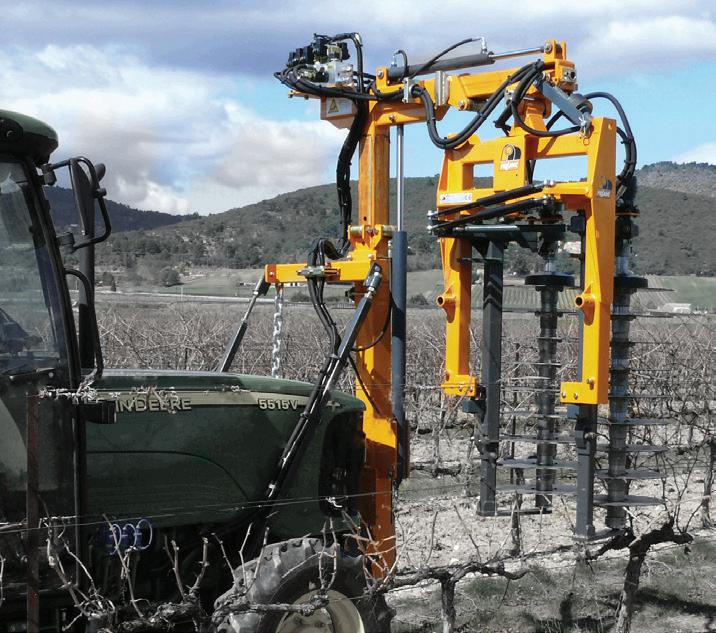
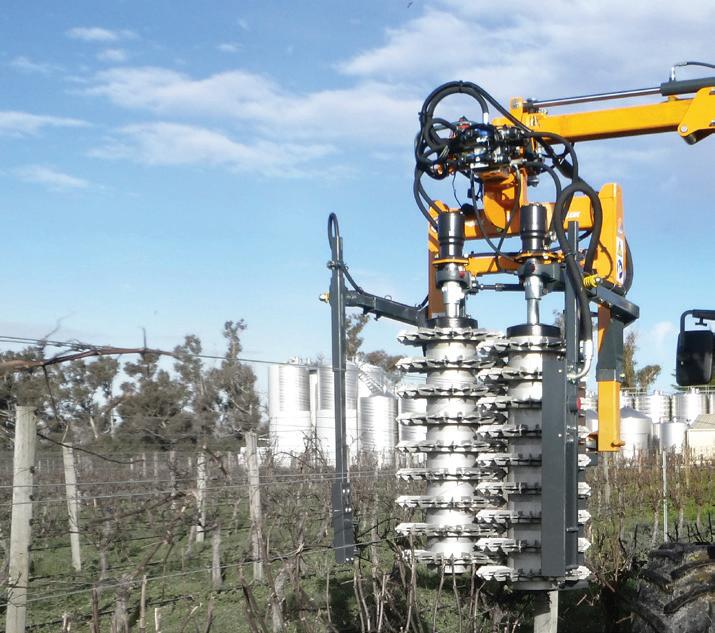
Disc speed synchronises with ground speed with post detection available. Save on pruning costs significantly.
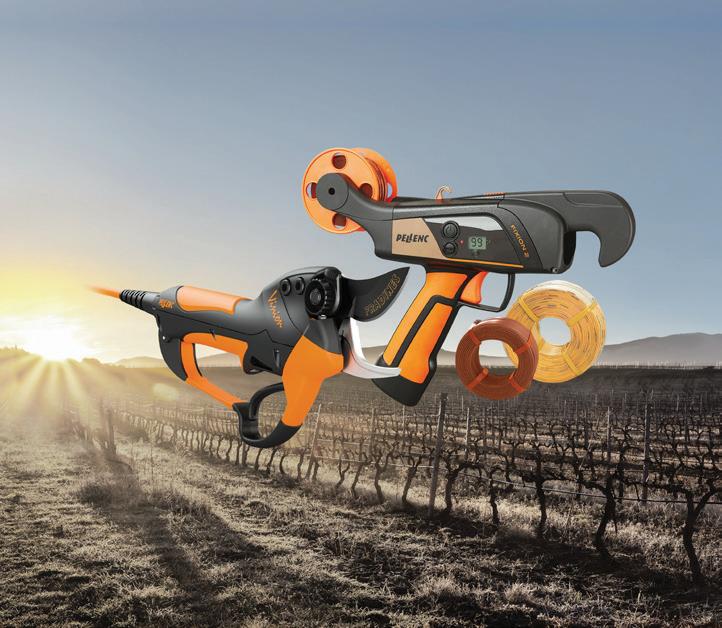
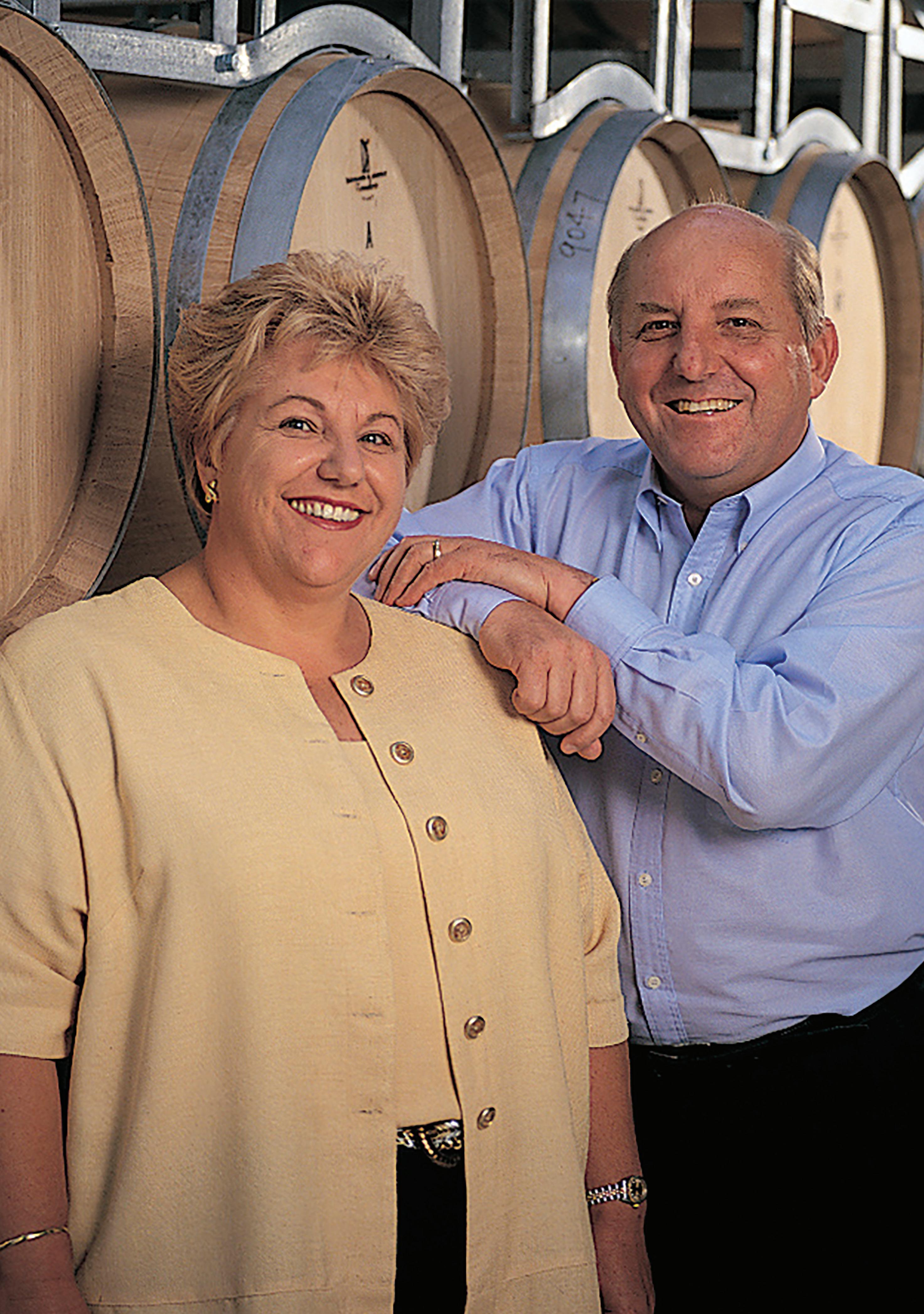

Six icons of New Zealand wine have been recognised as Fellows of New Zealand Winegrowers, having worked over many decades for the betterment of the industry. “The Roll of Fellows honours the modern pioneers of the New Zealand wine industry,” says Clive Jones, Chair of New Zealand Winegrowers. “The work of these individuals enables a small industry like ours to punch above our weight on the world stage, and we thank them for their efforts.”

This year is a significant one for Delegat, and for the family behind this globally successful wine company. “We can easily forget that not so long ago things were different,” says Executive Director Jim Delegat, 75 years after his parents established a small vineyard and brand in West Auckland. “The idea that one day New Zealand would be successful in exporting wine to the discerning markets of the world would have been dismissed as fanciful.”
At 75 years old, the company’s experience is storied and its track record solid, he adds, paying special tribute to his parents for early decisions made and foundations laid. “We have been fortunate to be part of an incredible New Zealand wine industry growth story.”
In 1947, Croatian immigrants Nikola and Vidosava Delegat planted vines on a 4-hectare block, while establishing a modest wine brand. This year their two youngest children, Jim and Rosemari Delegat, have been named Fellows of New Zealand Winegrowers, having built one of the most successful wine businesses in the country – now with 4,000ha of company owned vineyards – while helping raise the fortunes of New Zealand’s industry at large. “I am
happiest when I am in the vineyard or the winery or talking to people about wine,” says Jim. “It is an environment that Rose and I feel completely satisfied to work in, so we made quite a powerful team.”
Nikola came to New Zealand from former Yugoslavia in 1938, leaving the uncertainty of Europe behind him. The same year Vidosava arrived with her parents and joined the vibrant West Auckland Croatian community, where the couple inevitably met. They married in 1941 and moved to the Waikato to work on a dairy farm, and by 1947 had saved enough money to buy land for a vineyard and winery in Henderson.
“Our family has been making wine for centuries in Yugoslavia and it was something he felt comfortable as a young man to turn his hand to, as well as general cropping,” says Jim of his father. But wine was not “a beverage of choice” in New Zealand back then, “and nor was liquor licencing prevalent”, he says. “So, in order to establish themselves in the market, they established the Delegat wine label brand and would sell from the cellar door, and do mail order to the Waikato, back to the people they knew when they were farming
there for seven years.” It was, he adds, “the formative stages of direct-to-consumer marketing”.

Rose’s memories of growing up in Henderson are of “happy families”, with abundant socialising and wide-open spaces. “It was an awful lot of fun in a rural community,” she says. “As teenagers we helped out in the vineyard on holidays and weekends, while my two elder sisters helped with bottling and labelling the wines”. That was typical of the community, says Rose. “We were really doing what everyone in West Auckland was doing.”
Then Nikola passed away in 1973, with Vidosava widowed at the age of 56. The eldest daughters had married and started their own families and businesses, but Jim, aged 24, and Rose, 22, joined forces to drive Delegat forward, recognising a growing appetite for wine in New Zealand, along with the emergence of table wines.
By 1978 the siblings had established vineyards in Hawke’s Bay, which was a major investment, “and a signal of our intention to focus on making premium varietal wines”, says Jim. Chardonnay drove demand in the 1980s, so the family
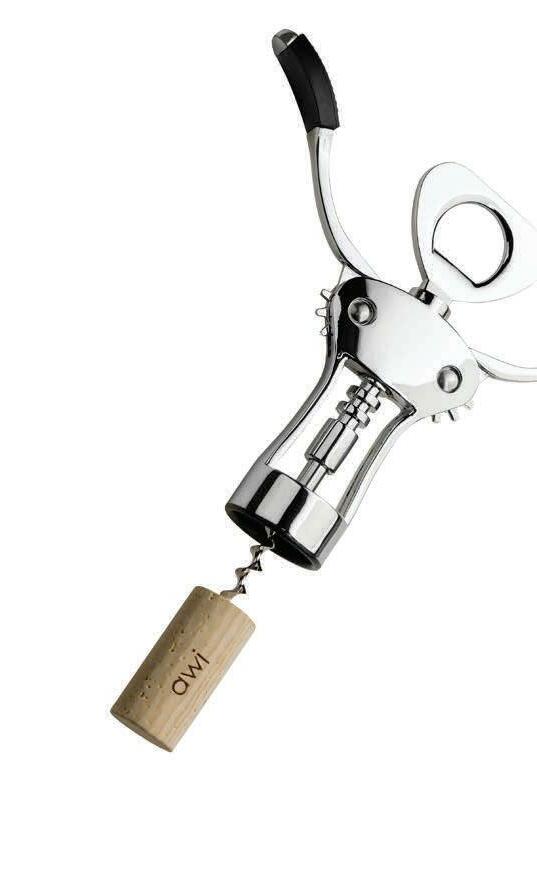
imported the “legendary” Clone 6 from UC Davis in California, which became a major Chardonnay clone for the business. That was followed by importing French barrique barrels and fermenting Chardonnay in oak from 1983 onwards. The Hawke’s Bay vineyards, Clone 6 import, and barrel fermentation “all paid dividends” as the company started to stack up trophies and medals, says Jim. “We were planning for success, and we felt success at that time lay in recognising quality.”
In 1986 they purchased Delegat’s first Gimblett Road property in Hawke’s Bay, as one of the earlier players on the gravels in a move “that further underpinned red wine making for Delegat”, says Jim. Their next big stride was into Marlborough, with the first vintage of Oyster Bay Marlborough Sauvignon Blanc. It proved a strong choice, when its first vintage – 1990 – won gold and the coveted Marquis de Goulaine Trophy for Best Sauvignon Blanc at the International Wine and Spirits Competition in London. Oyster Bay Chardonnay and Sauvignon continued to reap rewards, “and we went on to be recognised as a great example of New Zealand wine”, says Jim.
The Oyster Bay brand was designed to represent the best New Zealand could do with wine and help the industry gain a foothold in the global wine market, he adds. “Oyster Bay, we felt, resonated as clean green New Zealand and the packaging was extremely modern and easily identifiable. So it established a strong presence in the emerging export markets.”
Meanwhile Rose was proving a force in export marketing, having been a member of the Wine Institute’s export subcommittee from 1987-1990. She also played a pivotal role in the development of the New Zealand Wine Guild, which led export activity in
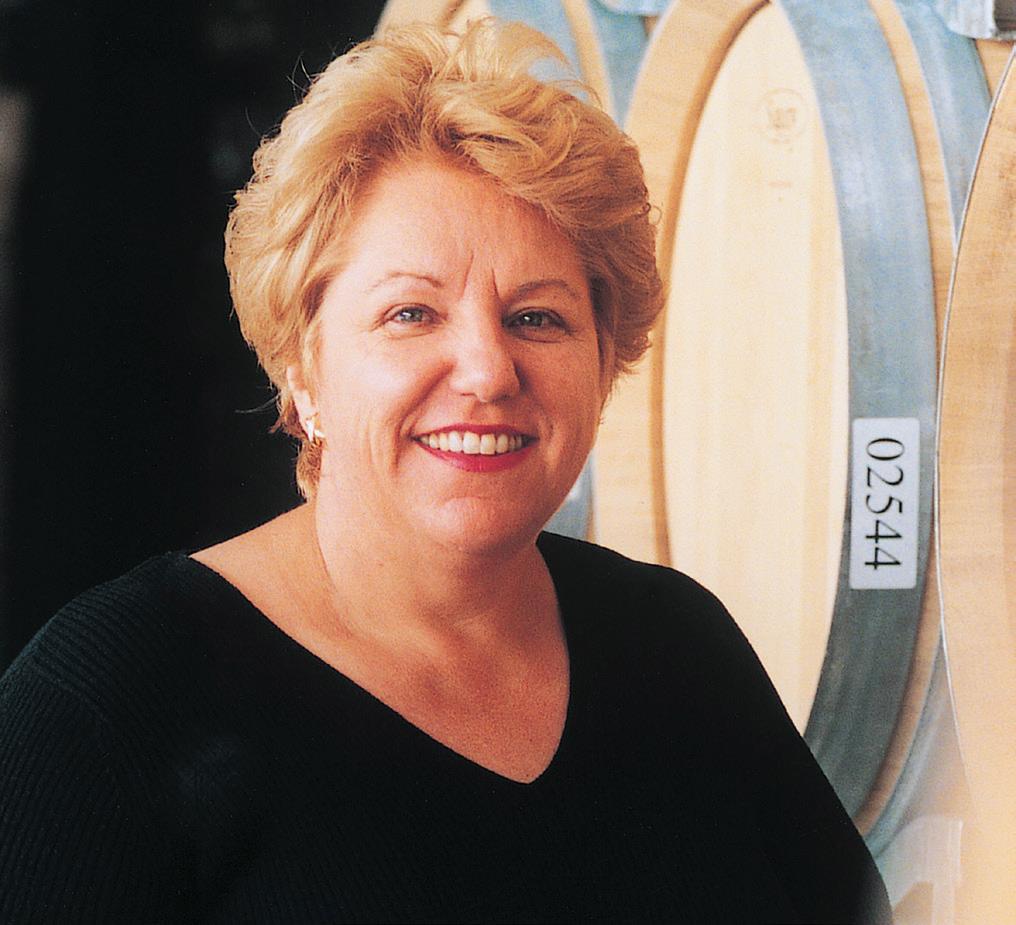
New Zealand’s largest market – the United Kingdom – during the 1990s. The 1980s and 1990s were a key time in the development of the modern New Zealand export wine industry, and Rose “really played a large role”, says Jim. “The wonderful character in my sister Rose is she creates enduring relationships, whether personal or business, and that proved to be a great asset to our business. She is very well respected and wellliked by a vast audience of people.”
Jim was also immersed in the wine business beyond Delegat, particularly as a member of the Wine Institute Board from 1985 to 1996. He served as an alternate and full director during a critical time period, when the industry was pivoting from a domestic to international focus. He also sat on the Wine Institute Board from 2005 to 2016, and on the NZW board from 2007 to 2016.
Having left school aged 16, Jim brought with him little formal education, but plenty of determination and willingness to learn. “I have made wine all my life, but I have never studied winemaking.” Meanwhile, he has become a “natural business builder”, he says. “I find satisfaction in developing business strategy, building teams, and executing on those plans. I think that is probably the foundation of our success.”
Jim has sought knowledge from experts in areas such as strategy, identifying competitive advantage, and pinpointing key success factors. “So I have had a lot of tuition over the 55 years I have been in the wine business.”
Some lessons are learned the hard way, and in 1986, when New Zealand’s wine industry was struck by oversupply and a downturn, Delegat was poised in the jaws of receivership. “The wine industry hadn’t yet truly benefited from the demand from global wine markets,” says Jim. He recalls
issues of oversupply, rationalisation and “significant financial hardships” that caused some of New Zealand wine’s biggest brands to fall away.
The siblings fought back and found means to “rescue” the company, sacrificing 51% of their stake in the effort. But the show was far from over for Delegat and the Delegats – by 1989 they had retrieved it all, “and took it back to complete family ownership”.
A year later they established the Oyster Bay brand in a move to go global, says Jim. A decade of awards and accolades followed, nationally and internationally, “and that was really the foundation for continuing to build on our business”, he says.
In 2006 – in the wake of Jim winning the 2004 Ernst & Young Master Entrepreneur of the Year – they were ready to take the next big step. The company, by then a category 3 wine producer, was moved from private ownership to a public listing on the New Zealand Stock Exchange, while Rose and Jim retained a 66% majority. The capital raising enabled them to invest in a growth strategy to launch Delegat into the hearts, minds (and shopping trolleys) of early New Zealand wine enthusiasts around the world, says Jim.

Now, 75 years from its foundations, 36 years after the wine glut threatened them, and 16 years since they listed the company, the Oyster Bay brand is New Zealand’s top selling super premium wine brand globally, with more than 3.7 million cases sold each year, equating to 220 million glasses of wine, says Jim. “That’s the modern-day story of Delegat.”
And he and Rose still consider it a growth business, with significant global aspirations. The world, it seems, is still their oyster.


Clive Paton and Phyll Pattie have a knack of knowing when something feels just right.
That intuition has seen these partners in life and business grow the Ata Rangi brand into one of New Zealand’s top Pinot Noir producers, with a global reputation and following.

Their inauguration as 2022 Fellows of New Zealand Winegrowers – recognising their ambition for Pinot Noir and strong focus on environmental sustainability – has led them to reflect on their lives. “We have to say ‘wow’ at being able to be part of the journey of New Zealand Pinot and the sense of belonging it has given us,” they say. “Both in this country’s wine industry and in being members of the Family of 12.”
One of Clive’s earliest ‘just right’ gut feelings was the day he went to Martinborough in the late 1970s to look at a piece of land he had heard might be suitable for a vineyard. “As soon as I saw it, I knew I had to buy it. The timing felt right.” He was a single dad, raising a young daughter alone and feeling like “a round peg in a square hole” in his work as a sharemilker. He had always liked wine, “so I felt a natural attraction to the fledgling Martinborough wine scene”. The region’s
climatic conditions were on his side. “The influence of Martinborough was so strong in terms of giving us good Pinot from the start that most of the job was done, which made some things easy,” says Clive, who entered winemaking without any scientific training. “I was a farmer but found it really interesting going up to Hawke’s Bay and talking to winemakers up there, learning about spraying and, most of all, being validated for having a hard work ethic, which is something I already knew plenty about.”
The El Nino vintages of 1981, 1982 and 1983 made life difficult, but Clive learnt fast how to get vines growing. One of his early successes was the purchase of 3,000 cuttings of Abel clone Pinot Noir from customs officer Malcolm Abel, who had a vineyard in West Auckland. “One morning he confiscated a gumboot with half a dozen Pinot Noir cuttings in it. We still don’t know who he took them from or what year it was, but I had heard about him and bought the vines.” Clive worked a vintage with Malcolm in West Auckland in 1981, and, with little time to talk, was invited to return the next year. But Malcolm died soon after, leaving the Abel
mystery unsolved.
The first vintage of Ata Rangi (Māori for new beginning) in 1984 was Pinot Noir blended with other red grapes planted at the time, so the first varietal Ata Rangi Pinot Noir was made in 1985. “That wine was noticed,” says Clive. It also reinforced his unspoken aim to make the best. “I made a mental note early on that I wanted to be among the top five red winemakers in New Zealand. If that sounds ambitious, maybe it was, but it seemed like the natural thing to aim for. I didn’t say that to anyone. It was like making a mental note that if, in 10 years’ time it hadn’t worked out, I’d change tack. I couldn’t see the point in trying if I didn’t aim for the top.”
In 1986 there was another ‘just right’ moment, when Clive met Phyll at Montana Wines in Marlborough. “I remember thinking ‘this could be it’,” he says. Phyll, who has a food technology degree, had her first job with Peter Hubscher at Glen Innes, where she was responsible for receiving wine from Marlborough. “Then I got offered a job as a winemaker in Marlborough and went down to Montana and took over the team there,” says Phyll. “I bought a lovely little house there and met
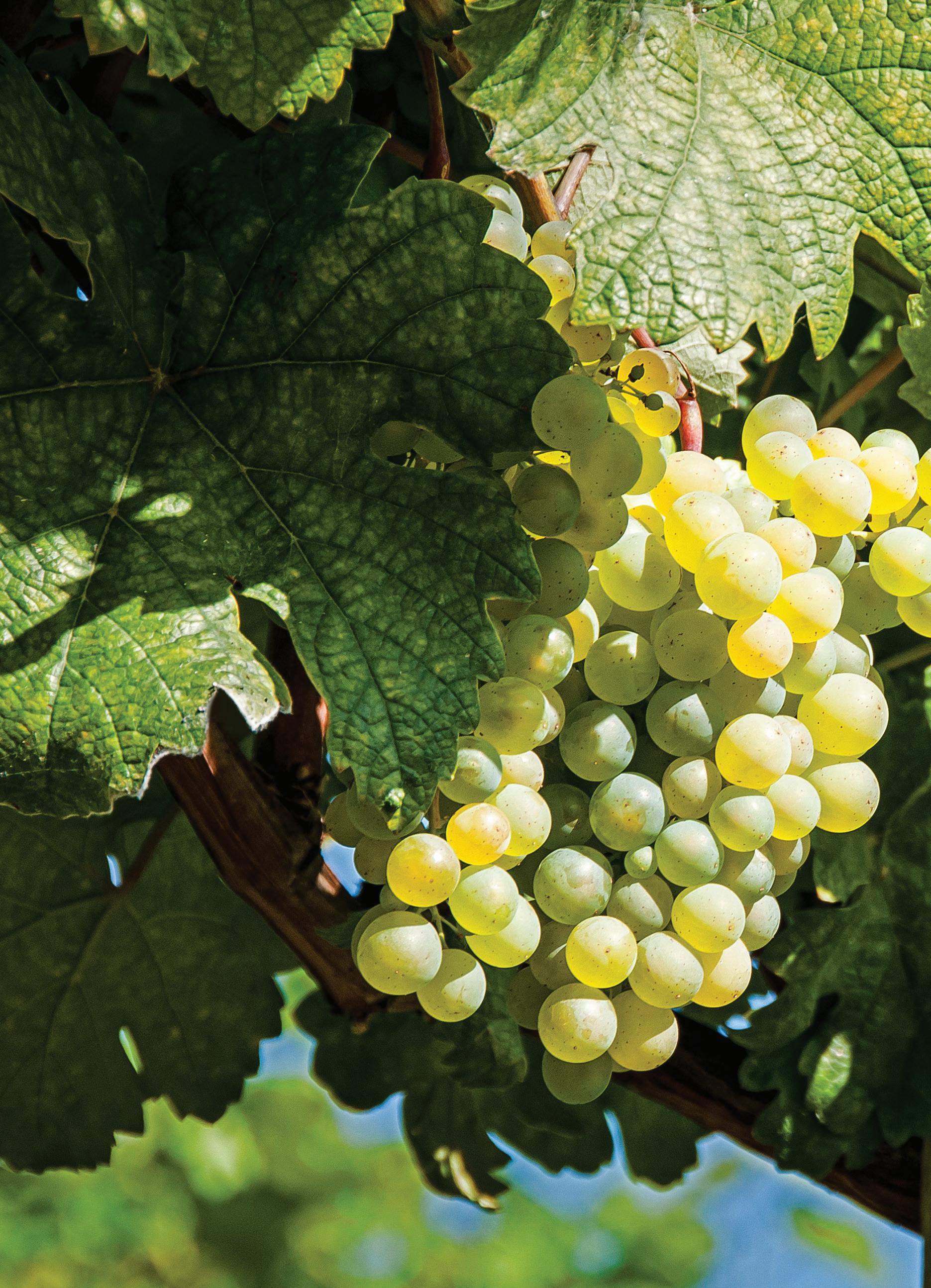

Clive when he came down with a group of Martinborough winemakers in 1986 and we met at the winery and then at a party. It all happened pretty quickly.”
Within a matter of months they were swimming down the Tauherinikau River together, ticking one another’s mental check lists of what they were looking for in a partner, which included, among other things, a love of tramping and walking. It was the moment the couple fondly refer to as the “Tauherinikau River test”.
Phyll moved to Martinborough in 1987 and began making Chardonnay and Riesling, while Clive looked after the reds. They worked together to build the brand, with Phyll driving Ata Rangi’s marketing. “When we look back at our lives, we have to say that was a pretty amazing time,” says Clive. Ata Rangi was New Zealand’s 90th winery, “now we’ve got this huge $2 billion industry and there are so many things the industry has achieved”, he says. “Such as the Family of 12, which has been one of the greatest things to be part of.” Meeting and developing close relationships with others in that collective of wineries spread across New Zealand, “made us feel part of something much bigger than ourselves”, he adds.
They both attribute much of their success to the now famous Abel clone of Pinot Noir and the region’s growing conditions. “Martinborough is dry, hot and windy in spring and summer followed by warm, long autumns with typically low rainfall, despite this year’s unseasonally high rainfall. It works,” says Clive.
Self-described as a mad tree planter, Clive purchased a 121-hectare block at Tuhitarata, 18 kilometres south of Martinborough, in 2002. He’d discovered the land, nestled into the Aorangi Forest Park, when asked by a real estate agent to

evaluate the suitability for grapes of a gravel terrace in front of it. Clive wanted a place he and Phyll could go to for a break. “It’s very good living and working in a village, in terms of being able to sell wine, but you’re in demand all the time. I needed a place where I could plant trees too; it was in my bones, and we needed somewhere to get away.”
Native plantings are a passion at Bush Block, but eucalypts are also integral, because he sees them as the best answer to replace the chemically treated pine posts that currently dominate New Zealand’s vineyards. “Other than a love of planting trees, the post issue is an area that I thought needed addressing. In general as an industry we are not thinking 50 years or 100 years ahead and sustainable trees are the best resources to use, which include such trees as eucalypts.”
The couple’s succession of good choices has led to a long string of accolades. These include Clive being made an Officer of the New Zealand Order of Merit in the Queen’s Birthday Honours 2012. He was also awarded the inaugural Tipuranga Teitei o Aotearoa, or Grand Cru of New Zealand, in recognition of the long term consistency of Ata Rangi Pinot Noir. And Ata Rangi Pinot Noir has been the three times winner (1995, 1996 and 2001) of the Bouchard Finlayson Trophy for Champion Pinot Noir at the International Wine and Spirit Competition in London.
The environment is close to his heart, and Clive also won a Wellington Region Conservation Award for his outstanding contribution to conservation; the Supreme Award at the Ballance Farm Environment Awards; the Innovation Award at the Habitat Improvement; and the 2006 Hills Harvest Award for soil and water management.


He notes that budburst and harvest dates have moved forward, and that shift is likely to continue. “If I was starting again, I’d probably go to Waitaki, if I wanted to focus on Pinot,” says Clive. But there’s still a future for it in the Wairarapa: “We have later ripening varieties that are going to help us through, if it comes down to getting too hot for Pinot.” They are also offered some protection by the east coast “which doesn’t give us the heat of a continental climate, thankfully”.
One of Clive’s earliest environmental influencers was his grandfather, who planted trees like there was ‘no tomorrow’ on the family farm in the Waikato. Meanwhile Clive’s father planted the wine seed, having been stationed in Italy during World War II. “I remember that we sometimes had wine on the dinner table when we were growing up. I can remember a bottle of Moscato and you can taste the grape in that wine. It made a lasting impression.”
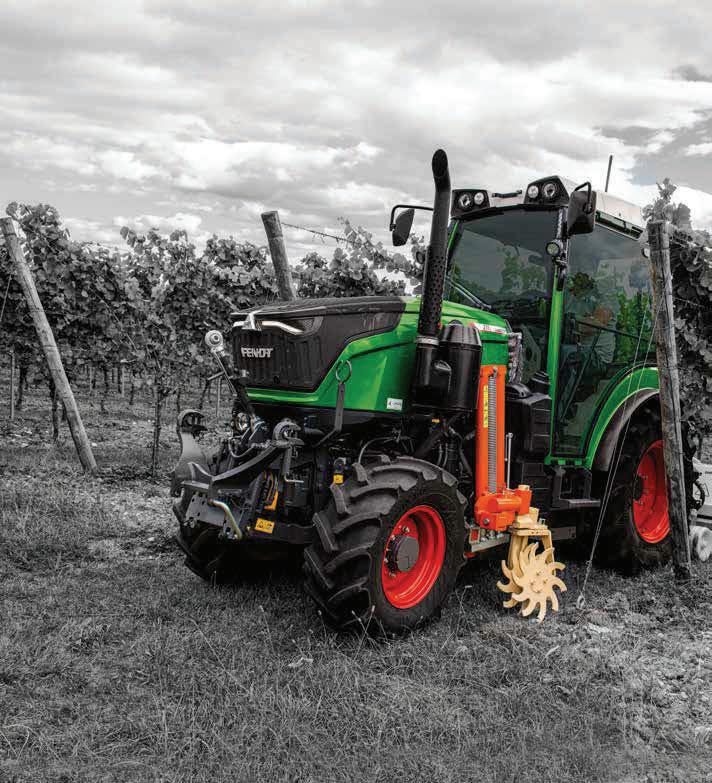
Back in 1890, a young Italian stepped off the boat at Ellis Island on the way to his new life in California. A shoemaker by trade, Charles Celestino Pecchenino settled in the gold mining town of Angel’s Camp and made wine in his basement. It was prohibition - so shoe repairs were in demand.
A century later, his great-grandson Dominic Pecchenino moved from that new world to the even newer one of New Zealand wine, where he’s made his mark with a commitment to the science of grape growing. A willingness to share his time and knowledge saw the stalwart awarded the 2021 Wine Marlborough Lifetime Achievement Award, followed swiftly by his naming as a 2022 New Zealand Winegrowers (NZW) Fellow. “You do things for an industry because you want to improve that industry, not for the personal recognition,” he says. “I’ve sought to try and improve wine growing in Marlborough, and a lot of other people out there have been doing that for a long time too.”

Dominic grew up in California and originally studied geology at university. The path to viticulture was serendipitous; while working in a wine shop during his junior college years, he happened to meet Julio Gallo who suggested a winemaking career might appeal. This didn’t capture his interest, but the subsequent suggestion of growing grapes for wine did. He gained a Master’s degree in viticulture from
California State University, Fresno – one of only three places in the United States offering viticulture at that time.
His career began with a company in mixed production, including 8,900 hectares of grapes, tree crops, wheat, melons and other vegetables. Projects for the new graduate included the innovation of underground drip irrigation. Consulting work followed, including phylloxera mitigation, fertility and irrigation management, as well as evaluating properties for sale or development.
In the 1980s the wine industry in California was shaken by a worldwide wine glut and phylloxera, so Dominic was interested in other opportunities. An acquaintance who had been to New Zealand suggested he send his résumé to John Webber in Blenheim. Matador Estate was an 80ha vineyard, and John was looking for someone to advise on redevelopment of new rootstock.
Dominic produced a hand-written report and “John took a gamble on me and invited me to come to New Zealand”. The job was offered as a fly-in consultant or permanent, and Dominic and Marianne decided the move had appeal. Their three young children were a conduit to friendships that have remained strong, and three decades later the couple is still here, although both sons have now returned to the United States to live. “Blenheim’s a great spot, but
you need to manage your island fever,” Dominic says. He is enthusiastic about all the activities Marlborough has to offer, including skiing and getting out in the Sounds – although water skiing is off limits since a recent hip replacement.
When asked about the major changes to the industry during the past 30 years, Dominic cites developments in technology, the increase in educational base, and the undertaking and implementation of research. Dominic was the driver for bringing mechanical canopy thinning to Marlborough, initially as a response to concerns that a labour shortage was going to become a critical issue in the industry.
In the research phase prior to a trial, Dominic noted that while mechanical thinning had been done in Australia and the United States, New Zealand weather was more unpredictable, and timing of thinning would be critical to avoid crop damage. Along with Mark Kristic from the Australian Grape and Wine Research and Development Corporation, he ran the first trial in 2008, which was so successful that a subsequent trial from 2009-2011 was completed with the involvement of Plant & Food Research. This extended trial achieved even better outcomes – not only succeeding with the primary goal of yield control, but (because of the removal of organic waste during the process) achieving secondary
benefits in the area of botrytis prevention. What was pioneering in the early part of this century is now standard operating practice. Opinion in the industry is that the 2014 vintage – the first heavy crop following the widespread industry adoption of mechanical thinning – could have turned out very differently if manual thinning was the only available option.
Dominic’s vision and leadership was instrumental in the establishment of Bragato Research Institute (BRI), for which he was original Chair. He also served as the Chair of the NZW Research Committee from 2006 till 2020. BRI is technically the best wine research facility in the Southern Hemisphere, because “we had a really great committee and we were able to build upon what already existed around the world”, says Dominic. “As an industry we’ve never sat on our heels; we’ve always looked forward and been at the leading edge of the industry.” The industry has also understood the market, and Dominic cites the New Zealand Lighter Wines initiative (a development programme led by NZW and co-funded through the Ministry for Primary Industries’ Primary Growth Partnership) as an excellent recent example of this.
Collaboration and the sharing of information have been hallmarks of the viticulturist’s career. Along with NZW’s former General Manager Research, Simon Hooker, he introduced Grape Days as a practical way of sharing research results with members. He has written and taught on a variety of vineyard management topics, including frost protection, botrytis in Sauvignon Blanc, the correct way to carry out soil sampling, making compost from vine prunings, and the practice of mulching in the vineyard to add organic matter. He has been a guest speaker on many topics at BRI conferences, and a guest lecturer at Nelson Marlborough Institute of Technology, as well as teaching Lincoln University students on field trips to Marlborough. Hosting Italian exchange students through the Bragato Trust. was a feature of Dominic and Marianne’s life for 11 years.
Dominic continues to see labour as the greatest ongoing challenge for the industry, with cascading effects. “Labour is always going to be the industry’s Achilles’ heel,” he says. For example, some Marlborough vineyards are becoming susceptible to trunk disease and having to be redeveloped.
Ultimately this stems from a labour issue as “we are having to prune our vines too early”, he says. Mechanisation can only do so much, and while some varietals are suited to spur pruning, he can’t see a time when industry won’t need manual processes.
On climate change and its impact on the industry, Dominic is phlegmatic, noting that farmers have always had to adapt to constantly changing weather, markets and regulations. “Weather events are getting bigger… and this impacts the way we farm and will lead us to change some practices,” he says. He believes industry can adapt. “It is in our best interest to take care of the land now and in the future… for instance, if we get into a situation where vineyards get hotter and drier, we may have to mitigate fruit exposure, perhaps by changing row direction, or by preserving greater leaf coverage, in order to preserve the unique characteristics of Marlborough Sauvignon Blanc.”
To the question of what he might have chosen if not viticulture, the answer is unhesitatingly aviation, spoken by a pilot who finds little time to fly. “But I was lucky that I found viticulture. It’s a great career option.”
Tonnellerie Mercier combine technological innovation with the tradition of selecting the best oak with traceability to forest source alongside the very highest specifications for barrel fabrication. Working specifically with the forests Berce (minerality), Troncais (structure) and Hagueneau (volume, roundness). Quality, consistency and specificity are signatures of the Tonnellerie Mercier barrels.

Chr. Hansen has been both a pioneer and a leading industry player helping viticulturists and winemakers to better understand wine microorganisms and their interactions. We take our evolving knowledge and apply it to the management of alcoholic and malolactic fermentations in order to fully release Nature’s potential
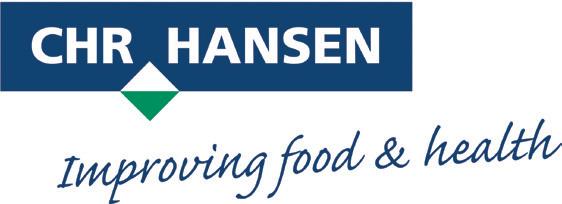

VASONGROUP & ENOLOGICA VASON incapsulates the know-how of the winemaking industry, giving life to innovative solutions and products for winemaking and the food industry around the world.

Pacific Rim Oenology are proud to be distributing products to help you achieve all your winemaking goals
Growing grapes has been a balancing act between personal satisfaction and economic sustainability, says New Zealand Winegrowers Fellow Chris Howell. “You need something to float your boat in terms of quality, but you also need something to pay the bills.”
During their 30 years growing fruit at Prospect Vineyard on Hawke’s Bay’s Heretaunga Plains, Chris and his wife Catherine found a happy medium between that floating boat – including Cabernet Franc for Pyramid Valley – and higher volume lease blocks that kept their heads above water. “While it was gratifying and nice to grow high end fruit it doesn’t pay the bills in the long run,” says Chris, who sold the vineyard late last year. “If you are a contract grower, volume is the game.”
Chris was named a Fellow this year for his services to industry organisations and education, having served on New Zealand grape and wine industry organisations for three decades, and played a key role in establishing the Young Viticulturist of the Year competition. He’s been deeply involved in evolving wine training, and still serves as a Trustee of the Bragato Trust.
But when he joined the Hawke’s Bay
Grape Growers in 1997, he’d only been growing a few years, “and there were some pretty experienced guys like Jim Hamilton,” he says, recalling an unexpected “shoulder tap” from Stuart Devine. “In my youthful enthusiasm I said, ‘why not?’”
By 2000 he was President and when the united industry organisation was formed, Chris served on the Hawke’s Bay Winegrowers Board from 2005-2007. He was elected to the New Zealand Grape Growers Council between 2000 and 2004 and was a New Zealand Winegrowers (NZW) Board member from 2005 to 2016. He says it is “a real honour” to be recognised alongside previous fellows like Steve Smith MW, Kate Radburnd and Sir George Fistonich, “who have made significant contributions to the industry”.
Chris had a degree in politics and psychology and a diploma in media studies when he and Catherine set off for three years abroad. They had been growing their appetite for quality New Zealand wines before they left, but it was on their travels through France and Italy that wine wedged into their life plans. “It was fantastic looking at the wines and seeing what you could buy and how it was grown,” he says.
“That really fired it up.”
When they came home in late 1992, Catherine studied winemaking and viticulture at Lincoln University, while Chris worked for Kym Raynor at the Torlesse winery in Waipara. From there, they both ended up in Hawke’s Bay, with Catherine working in the lab at Vidal Wines and Chris in the cellar at Corbans, where he stayed three years before moving to Morton Estate and Sileni, then in its infancy.

The couple were meanwhile developing and planting their own vineyard on 16 hectares of the Heretaunga Plains. “We could have bought a chunk of land in the gravels, but we needed to be able to live onsite because we didn’t have any capital left over to buy another house,” he says.
Chris grew up on a lifestyle block in the Waikato and spent time on farms, growing a dream of working in primary production while wondering how he’d ever be able to buy land. Vines seemed a possibility and an exciting industry, he says. “And it was back then, in the early 1990s. There was huge growth in the industry.”
It turns out Marlborough would have been a far better long-term choice for
the bank balance (“hindsight is a good thing”) but the couple spoke to several people about where to plant and what to grow, and Hawke’s Bay became the natural choice, “because I didn’t want to just grow Sauvignon Blanc”, he says. “It was a passion project, like it is for a lot of people. Most people get into the wine industry for passion and love for the product rather than business.”
So they leapt right in, relying on help and advice from industry folk like Steve Smith, who was at that stage working at Villa Maria. “He gave us a lot of help. Without that mentorship it would have been a lot harder.” Three decades on, the industry is just as collegial, Chris says, happy to have passed on his own experience to others over the years. “You give your knowledge for free, because it’s going to take them a long time to catch up with you.”
Back in those early days, they “plonked” an old house onto the property and undertook their first planting, with 1ha of Chardonnay and 1.5ha of Merlot. Within five years they had transformed three paddocks and had 12.5ha in canopy, that was “well performing, I hope”, says Chris. But there were hard-won lessons along the
way. “Our first vintage was 1998 – and you can’t ever complain about that,” he says. But in 2001 the vintage was severely impacted by frost and the 40 tonnes they had anticipated shrunk to 600kg instead. It was a “heavy blow to take”, says Chris. “That was pretty tough because we had no other income, and we had young kids.”
In 2003, another frost cut their production in half, and they and others looked to install costly frost protection. “That, and the loss of income from those two seasons, really put us on the backfoot for a long time,” he says. “It’s pretty tough and you have to dig pretty deep.” Over the years there were other seasons with less fruit, because of rain or a bit of frost damage, and they were also hit with one winery making a very late call not to pick fruit, and a buyer going into liquidation.
The couple soon learned – assisted by the Ministry for Primary Industries Viticulture Benchmarking process – that it was wise to carry a mix of varieties, “because it spreads your risk over the season, in terms of timing”, but also a mix of volume, to protect their prospects, as it were. “There’s an old saying amongst growers that tonnage beats brix in terms of how you get
paid, and it still holds true,” says Chris.
He’d like to see a greater industry focus on financial sustainability, along with recognition of the cost to growers of bad seasons, bad business or simply rising costs. “We need to pay more attention to it and work out some better models.” Growers “live and breathe” their vines and grapes and it can be pretty tenuous at times, he says. “We need to find some balance there too.”

Recent concerns have been the ascendency of size and volume in Hawke’s Bay’s wine industry, with small blocks bought up by bigger players or pulled out for lifestyle blocks. “When the Hawke’s Bay Growers Association started there were 170 odd growers and now there’s closer to 60,” says Chris. “So it has really shrunk - not in terms of area but in terms of industry participants. That’s where some of the flavour of the industry gets lost.”


It’s been 30 years of highs and lows, but the sum total has been a “fantastic” lifestyle, says Chris. “We could have made more money in other businesses, but it wouldn’t have been as much fun. And we have grown some really good wines over the years.”






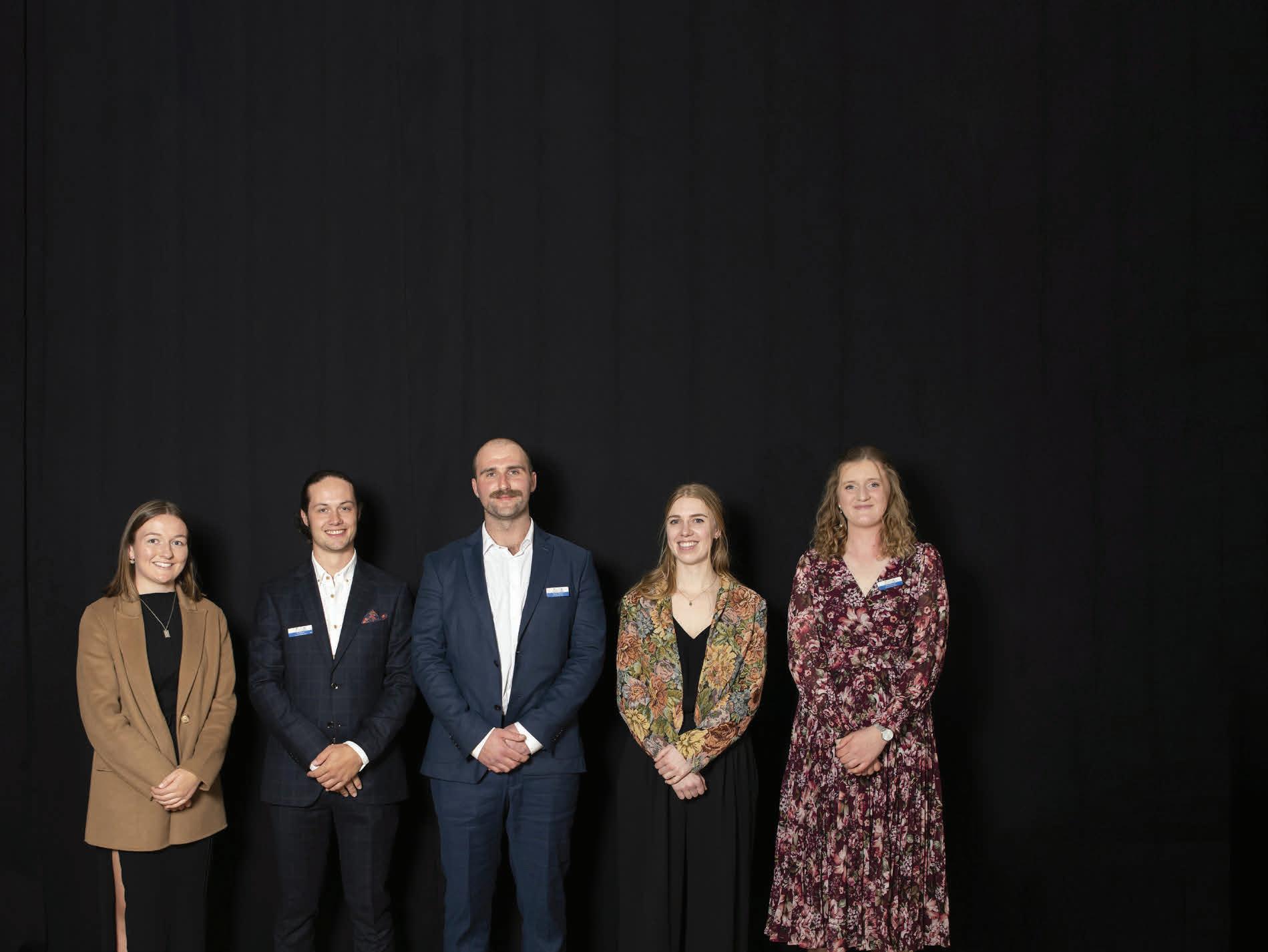 Nina Downer Felton Road Laura Marston Craggy Range
Nina Downer Felton Road Laura Marston Craggy Range
A huge thank you to all our generous sponsors
to all the 2022 National Finalists
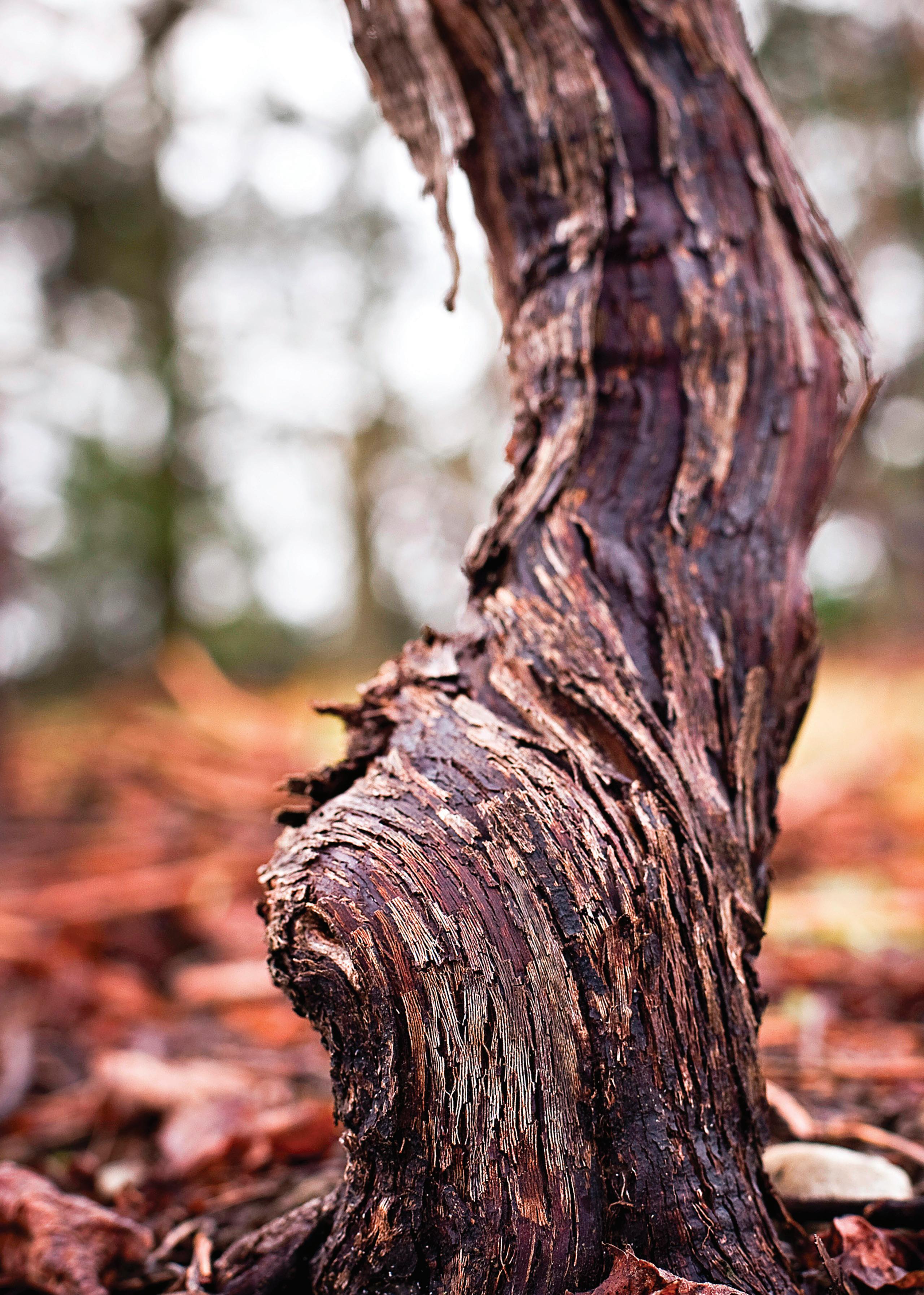
Nick Hoskins has spent more than seven years racking up ‘IOUs’ in Hawke’s Bay and Marlborough, forging a holistic view of winegrowing. “We measured in the vines, on the vines and under the vines,” says the man leading the New Zealand wine industry’s multi-faceted and globally significant Vineyard Ecosystems Programme.
His IOU is a simple explanation for a complex project that scrutinised more than 24 contemporary (using herbicide) and future (no herbicide) sites across Hawke’s Bay and Marlborough, to better understand the myriad relationships between microorganisms, water, cover crops, vines, pests and diseases.
Between 2015 and 2022 more than 40 scientists, researchers and PhD candidates from seven research agencies – including soil chemists, molecular biologists, entomologists, plant physiologists and statisticians – researched the likes of trunk disease (in the vines); vigour, yield, and pest and disease outcomes (on the vines); and soil microbiology and elemental chemistry (under the vines).
“Basically measuring what we are doing and the impact of our activities,” says Nick, posing the three questions at the heart of the programme: “Does our management make a difference to the soil? Can we improve vineyard longevity? And can we use less chemical intervention?”
That’s meant hundreds of soil samples, yield assessments, pest and disease assessments, vine vigour analyses, mealy bug counts, and “quite a big piece of work
on plant species undervine and interrow”, says Nick (see page 36). “We also surveyed each of the vineyards involved about the management practices during the year.”
Samples went to the University of Auckland for DNA sequencing and data crunching, enabling the lead scientists at the university and Plant & Food Research to build a picture of New Zealand vineyards in, on and under the vines.
Winegrowers (NZW) fact sheets, says Nick, emphasising the importance of getting the work into the hands of growers to inform better management practices.

They include work showing that while yields were lower in vineyards not using herbicide, the use of one herbicide only has no effect on yields. The programme also found that powdery mildew can be controlled without the use of synthetic fungicides, “but you have to work a bit harder and pay attention to your spray programme”, says Nick. When it comes to mealybug and the spread of virus in vineyards, blocks not using synthetic insecticides “were as good if not better than those using these products”.
That rewards the scientists doing the research as well as the growers who’ve helped pay for it, and is important for the reputation of New Zealand wine in a market wary of greenwashing, says Nick. “We have to provide evidence of our sustainability… Which to me is a key outcome.”
A huge amount of research was presented by more than 25 scientists and practitioners at the Beyond Vineyard Ecosystems: Growing for the Future technical conference in Christchurch in late September. However, several key findings have already been disseminated via research events like Grape Days and New Zealand
Ensuring the outcomes are practical and pertinent to growers has been key, and has seen some of the project parameters shift to account for the latest information, says Nick. As an example, trials revealed that foliar symptoms of trunk disease were not a good predictor of vine deaths, so researchers adapted their work to use other indicators – such as vineyard gaps obtained through a bird’s eye view, and ground truthing vine deaths in blocks – to better forecast the impact and trajectory of the disease.
The efficacy of pruning wound protection was established via the research, and immediately shared with growers. Meanwhile, a growing recognition of the scale of trunk disease in New Zealand vineyards led to another shift in the programme design, with remedial surgery
SOPHIE PREECE
“Does our management make a difference to the soil? Can we improve vineyard longevity? And can we use less chemical intervention?” Nick Hoskins
added to the project, offering growers confidence that most re-trunked vines will produce a new trunk within a year and return to typical yields within two harvests, says Nick. “It’s something they can do now without replanting their vineyard.”

Bragato Research Institute (BRI) Project Manager Stephanie Flores, who worked with Nick to design and organise the Beyond Vineyard Ecosystems conference, says it was vital to have someone able to straddle science and industry imperatives heading the project. “Nick has been central to all of this for years and a leading voice of growers in a ‘mind field’ of scientists.”
Speaking at Grape Days in June, Nick briefly outlined some of the outcomes, including work by Dr Brent Clothier on “parsimonious” water use and low-level leaching on the vineyards assessed (see page 32). He also outlined findings on soil biodiversity from contemporary to future sites, with soil samples taken at budburst, veraison and harvest, then DNA sequenced.
That work provided counts of specific bacteria and fungi (see page 38), as well as the insects and worms in the samples, and revealed measurable but small differences in soil biodiversity and soil elemental chemistry between those using and not using herbicides. Nick emphasises that the results are not a licence for complacency. “I don’t want people to get the wrong message, that we are doing okay and don’t need to worry about it, because the rest of the world is moving on as well.”
Meanwhile, there remains a rich reservoir of untapped information from the programme, including abundant data on fungi and bacteria, available for future analysis as the roles of specific organisms in the vineyard ecosystem are revealed, Nick says.
If Grape Days was the opportunity for a “speed dating” interaction with the results, as Nick described it on the day, the conference was two days of in-depth analysis. “The Beyond Vineyard Ecosystems event will delve into today’s pressing issues for vineyard sustainability, from soil health
and water use to reducing our industry’s reliance on agrichemicals,” said BRI Chief Executive Jeffrey Clarke in the lead up to the event. “We are looking forward to having a national conversation about the future of winegrowing, sustainability and how industry research can play its part.”
The Vineyard Ecosystems programme has accelerated understanding of plant protection, with many growers involved in the programme now moving to more sustainable practices and ready to share their stories. “The most powerful tool we have to communicate research is growers talking to other growers,” says Jeffrey. “One viticulturist used the programme’s data to bring a business case to his board for better plant protection, while another has found
that practices in his organic vineyards provide solutions in his conventional vineyards. This two-day event is about sharing this knowledge and learning where the next wave of research can take us.”
Nick says that as well as highlighting programme learnings, the event was to frame this “world-leading” research in an international context. While other research programmes have looked at the relationship between what’s in, on and under the vines, none have taken such a comprehensive approach, he says.
And it’s certainly timely to be “rethinking chemistry” and measuring eco-credentials, because the market is demanding just that, says Nick. “We can be sure that we are doing now we won’t be doing in 10 years’ time.”
The Vineyard Ecosystems Programme, a partnership between New Zealand Winegrowers and the Ministry for Business, Innovation and Employment, kicked off in 2015. Managed through Bragato Research Institute, the programme put 12 vineyards under the microscope in Hawke’s Bay and another 12 in Marlborough. The vineyards are a mix of contemporary and future management styles across Sauvignon Blanc (Hawke’s Bay and Marlborough), Pinot Noir (Marlborough) and Merlot (Hawke’s Bay) blocks. Plant & Food Research and University of Auckland were the main research providers, with Thoughtful Viticulture, Linnaeus Laboratories, the South Australian Research and Development Institute, and Intecrop Ltd also playing roles.
“The most powerful tool we have to communicate research is growers talking to other growers.” Jeffrey Clarke
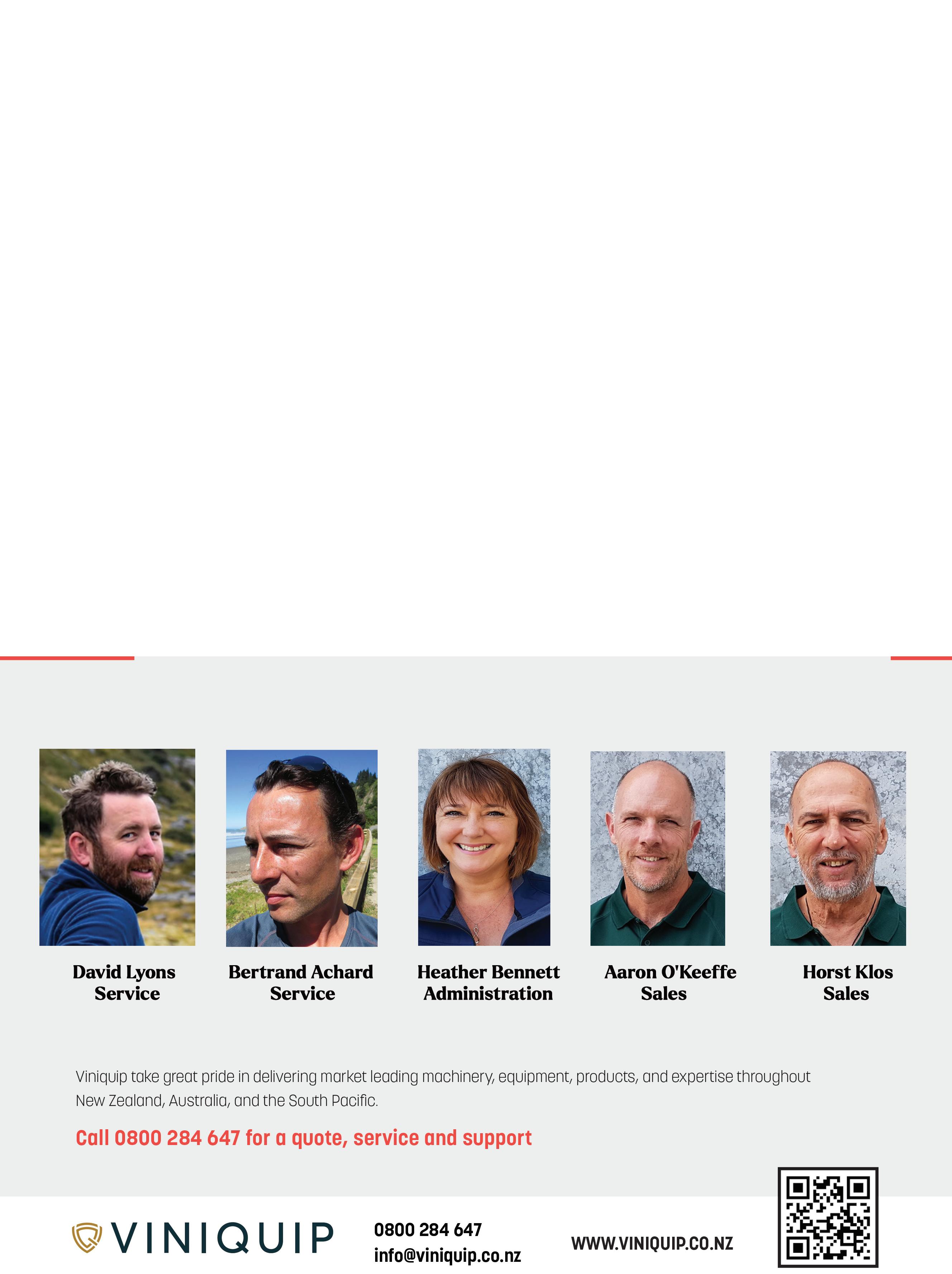

New Zealand’s wine industry has good irrigation “eco-credentials” with “parsimonious” water use and extremely low-level nitrogen leaching, says Dr Brent Clothier of Plant & Food Research.
Findings from the Vineyard Ecosystems Programme, gathered from two vineyards in Hawke’s Bay and another two in Marlborough, show water use is “fit for purpose”, and lean enough to conserve the resource and promote the growth of good quality grapes, says Brent, who led the irrigation thread of the study over a five-year period. “Our measurements show that it only takes 9 litres of irrigation water per glass.”
However, there’s room to do even better, Brent says. As climate change raises temperatures and reduces annual rainfall throughout the country, access to more sophisticated technology such as pressure bombs and monitoring of weather and soil water content will help. “We’re already really smart but there’s an opportunity to be even smarter with how we manage our irrigation to be fit for purpose and produce wine of high quality.”
Brent, who is the current President of The Royal Society-Te Apārangi, has worked with apple and kiwifruit growers in New Zealand, as well as growers of olives in Spain, dates in Abu Dhabi and avocados in Kenya. “It’s our stock in trade to measure how much water plants use,” he says.
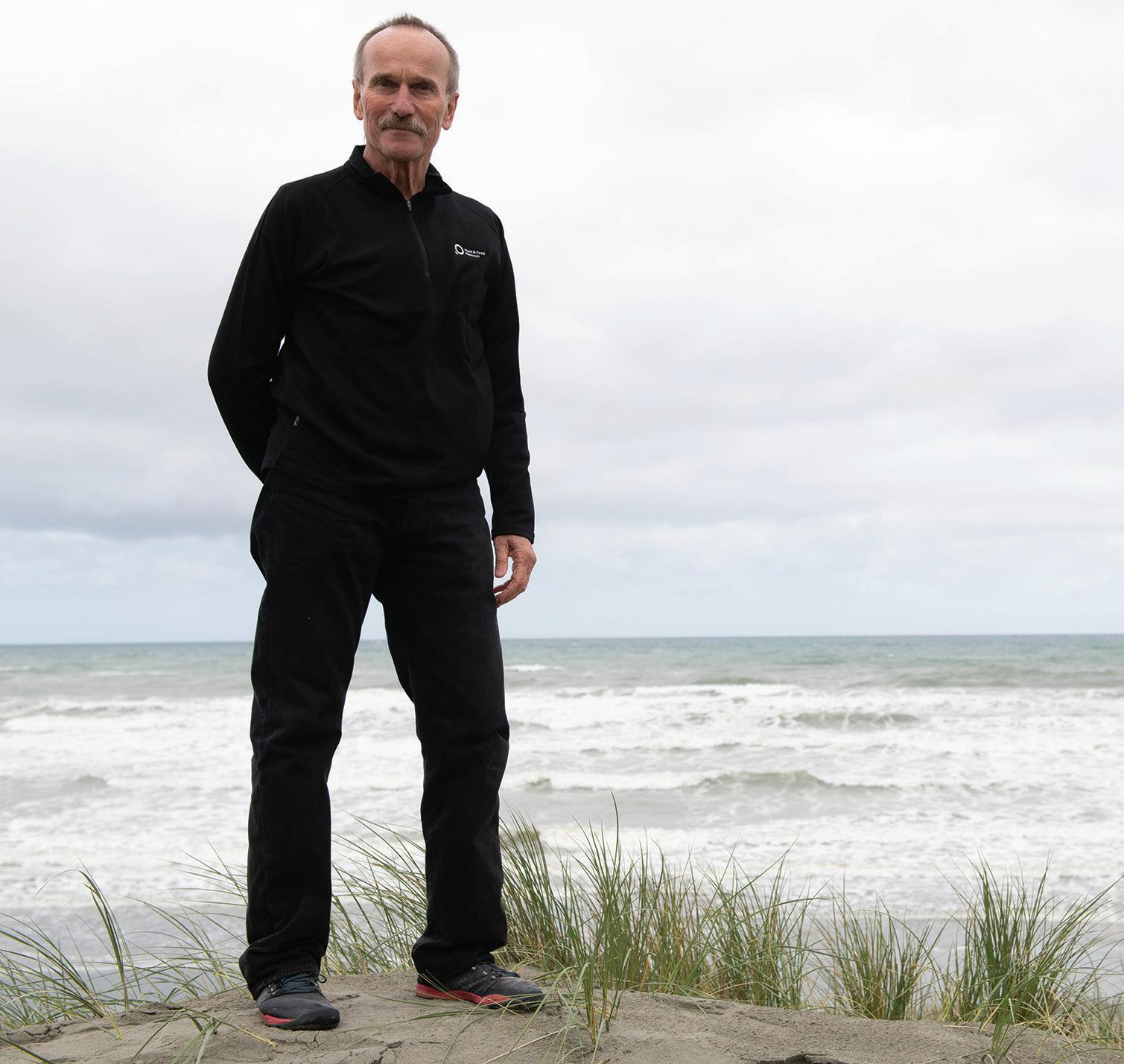
When it comes to grapes, growers need enough water to ensure there’s no water stress over flowering, then “tactical” irrigation to maintain berry quality and
A 2021 Ministry for Primary Industries’ paper, Water Availability and Security in Aotearoa New Zealand, revealed a trend towards warmer and drier conditions for New Zealand due to climate change. In Marlborough, for example, the five-year average rainfall from 1996 to 2000 was 15,652 million cubic metres, but from 2016-2020 had dropped to 13,386 million cubic metres.
quantity leading up to harvest, with enough water to keep the plant healthy but not enough to indulge excessive canopy growth, while also keeping in mind the soil storage capacity. The irrigation season is much shorter and more precise than that for pasture, he says. And because no two New Zealand summers are alike, “it’s not that you have the same recipe you can apply year in, year out.”
The Vineyard Ecosystem Programme saw Brent’s team install remote weather stations, subsurface equipment to measure high frequency changes in soil moisture, flowmeters in irrigation lines, and fluxmeters to measure drainage and nitrate leaching through the root zone,
The report states: “While Aotearoa New Zealand is traditionally viewed as a green and water-rich country, current climate change trends show a country getting warmer and drier (with some regional variations), and more prone to climate extremes (floods and droughts).”
The frequency of these events is increasing rapidly. “The declining natural availability of water, combined with the
to better understand water and nutrient dynamics in a vineyard ecosystem. “These are intensive and costly to do,” says Brent. His team set up the systems on four “gold sites” of Sauvignon Blanc within the 24 sites of the Vineyard Ecosystems programme, comprised of two contemporary (using herbicide), and two future (no herbicide, one of which was a dry-farmed block).
The team sought to discover the “mass balance in water and the mass balance of nitrogen in the system.” In terms of water, they concluded that across the four gold sites it took about 50 litres of irrigation water to produce 1 kilogram of grapes. That equates to 9 litres of water per glass of wine, which is “a very small number” compared
need to halt further degradation of our natural waterbodies and operate within environmental limits, pose significant challenges for the availability and security of water for the food and fibre sector and rural communities.”
It notes that past responses will not be sufficient for the “future challenges and uncertainties we face”, with a strategic focus and serious investment required.
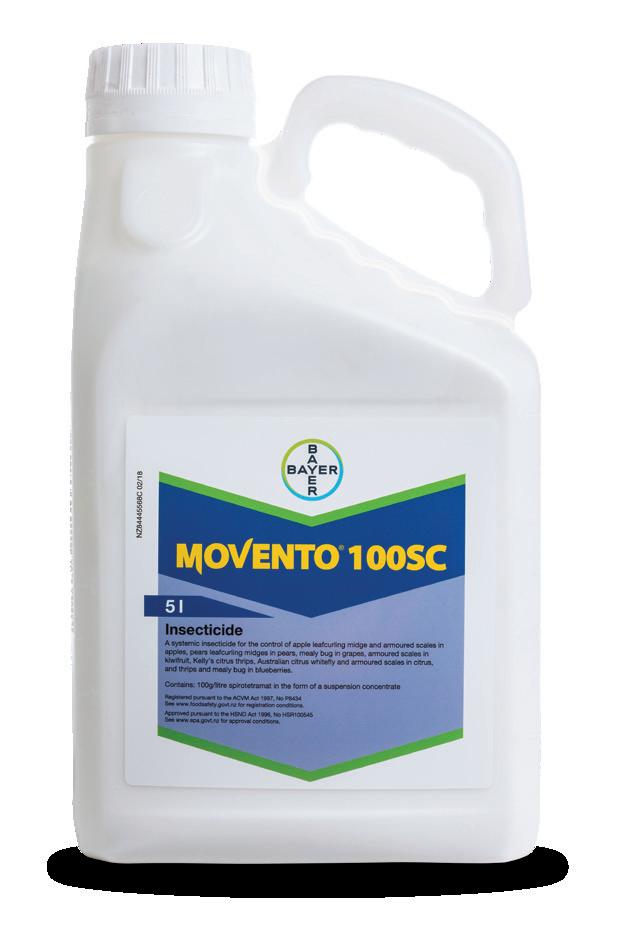

to other water tallies taken around the world, says Brent.
They also found the winter recharge of the aquifer, from rainwater falling past the bare vines and soaking through soil, was on average 85mm more than the summer take, per parcel of land. “That means we put water back and took water out and the net balance to the aquifer was 85mm of positive recharge,” says Brent. “So no water was being destroyed to produce a glass of wine. In fact the aquifer was being recharged.” However, he concedes that it is not yet known how much recharge the aquifer requires to maintain and sustain local ecosystems beyond the vineyard gate. “Is it sufficiently parsimonious? We don’t yet know.”
They also installed technology to measure the quality of water that leaves the root zone and goes back to aquifers “which eventually lead to our rivers”. That found “incredibly low levels of nitrate coming through”, with less than 5kg per hectare per year, as a result of very low concentrations, says Brent. That’s partly because nitrogen is used very conservatively in viticulture, “because it just encourages vegetative vigour”, and because vineyards don’t have the nitrogen input from stock, which pastoral systems have.
“We have found some very useful findings that we can call eco-credentials, which validate the environmental performance of viticulture for both contemporary and future systems in terms of water. I am mightily impressed by the viticulture industry,” says Brent.
The “eco-premium” price companies receive for wine relies on consumers’ perception of the cleanliness of the environment and sustainability practices, he adds. “And the viticulture industry is acutely aware of the need to have
demonstrable eco-credentials.”
That understanding is a far cry from the late 1980s/early 1990s, when he was working with the Marlborough District Council on a reassessment of the amount of water required for viticulture in comparison
grape leaves. You want the quality to be in the berry.”
Watching the viticulture industry “mature” in the intervening years has been “quite amazing really”, he says. “Their relationship with the regulatory agencies in general has been pretty damned good.”
During the period of the study, Hawke’s Bay had its second hottest year and third driest summer since around 1970. “Rainfall across New Zealand is decreasing as a result of climate change and that is widespread. Every region is suffering a loss of rainfall,” Brent says, referencing a 2021 Ministry for Primary Industries’ paper, Water Availability and Security in Aotearoa New Zealand (see ‘Water woes’ on page 32).
to pasture, through which “consents were reduced by a huge amount”. Viticulturists thought they were losing something, when the amount of water being allocated was much less,” he says, recalling a sense of “robbery” of a natural resource. “We said, ‘you wouldn’t want to use this much water’… You cannot sell more and more
So despite its good eco-credentials, the wine industry needs to tap into better technology and knowledge to further refine and fine-tune its irrigation and nutrient management, says Brent . “We are developing the knowledge and tools to make things even better and more sustainable. It’s about continuous improvement.”

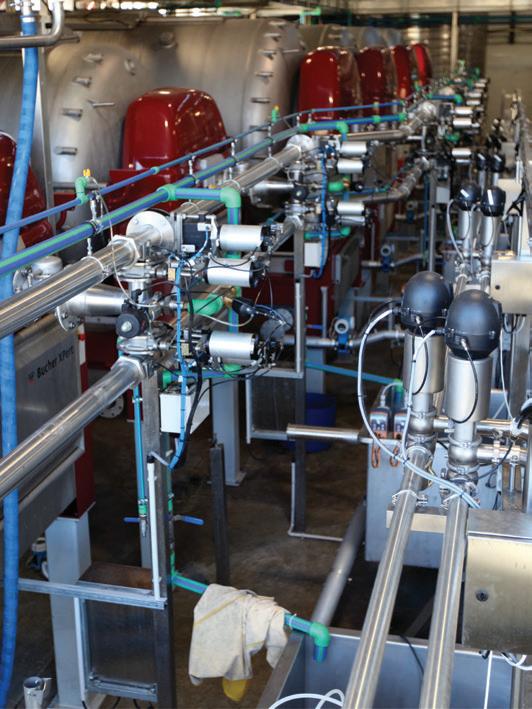


The Marlborough District Council has resolved the over-allocation of water from the Wairau Aquifer by applying reasonable use calculations when reconsenting existing takes. In June this year the council announced that the Wairau Aquifer Freshwater Management Unit (FMU) allocation status had changed from over allocated to having allocation available. “The new Proposed Marlborough Environment Plan (PMEP) has an allocation framework in place to provide for sustainable water abstraction and use. That framework incorporates
allocation limits on the amount of water that can be taken from any water resource,” says Marlborough Mayor John Leggett. A reasonable use test is applied to all water permit applications, which ensures that the amount of water allocated does not exceed that reasonably required to irrigate the pasture or crop, while accounting for the climate and soils that exist on the property, he says. “Bespoke, property-specific allocations are a key part of the strategy for achieving efficient use of water across Marlborough.”
“We’re already really smart but there’s an opportunity to be even smarter with how we manage our irrigation.”
Dr Brent Clothier
Our range of specialist tractors are European designed and perfect for the variety of operations in Hawke’s Bay. Both ranges come in four width options; V (1077-1293mm wide), S (1267-1337mm wide), F (1441-1558mm wide) and D (1745-2180mm wide), and are highly innovative specialist tractors with a range of options to suit your business requirements.

• M arket leading hydraulic systems with the option of open centre and load sensing variants available providing a hydrauic flow of up to 120 L/min.
• I nnovative design offers unrivalled comfort no matter which variant you choose and options of flat operator platforms for easier access on selected models.
• Various transmission options available with either full variable speed TTV transmission or manual transmission with powershift.
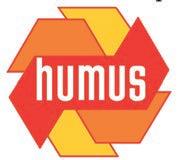
All Deutz-Fahr TTV specialist tractors come standard with category 4 filtration systems. Electronically selectable, the air intake is diverted through the carbon filter while the operator can monitor filter charge and cabin pressurisation through the dash display.



Choose from a number of transmission options including Powershift or TTV transmission with the option of having an intuitive arm-rest control at your hand.

Specialist tractors that work hard for your operation.
Offering mealybugs a “delicious snack” beyond the vines could help slow the spread of virus through New Zealand vineyards, says Plant & Food Research Associate Rebecca Gough.
Rebecca has been working on a mealybug project in the seven-year Vineyard Ecosystems Programme, assessing the viability of tempting the vector away from vines and into a cleansing crop. “We’re thinking about the virus in the context of the ecosystem,” she says.
Mealybugs are known to spread grapevine leafroll-associated virus 3 to healthy vines, which can delay harvest, reduce sugar accumulation and lower fruit quality. But the Ecosystems research has ascertained that mealybug can shed the virus altogether if they feed on a noninfected plant such as clover for at least 16 to 20 days. Offering the mealybug “a more delicious snack” can interrupt the transmission cycle, Rebecca says, noting that as few as five days on a clover crop can reduce the number of infected mealybug and mitigate the spread of virus to healthy grapevines.
The project team used clover in their lab and glasshouse trials because of existing knowledge about mealybug’s attachment
to clover habitats, and because many New Zealand vineyards were formerly farmland or have a lot of clover nearby. “We were able to find that clover doesn’t host the virus,” Rebecca says. “It is really important to be confident about that.”
distribution around the Vineyard Ecosystem Programme sites and assessed how that has changed over time. The researcher has long been fascinated by the responses of plants to threats. “They can’t leave when they’re under threat. They have to stay where they are and that means they have very interesting responses,” Rebecca says. “Plants have to be very resilient and adapt.”
She says the work will tie in with other threads of the programme, from soil biota counts to vine vigour, and offers the possibility of another “tool in the belt” for growers. It could also shift thinking about ground cover plants, including clover, in vineyards. “It’s exciting to see this shift,” she says, while warning that the research will need to progress beyond the glasshouse and into vineyard blocks before they can make any recommendations.
Rebecca has also looked at viral
That fascination led her to study plant molecular biology, and develop diagnostic talents that help her find diseases, including virus in grapevines, and assess disease locations and movements in a vineyard. It’s about using tools in the lab – including DNA sequencing and antibody analysis – to “read the landscape”, she says. “Plants can’t speak to us but with the right tools we can learn their language.”
She’s been “hugely” excited by the extension of her work to mealybugs as vectors, working on a holistic solution in lieu of a “silver bullet”. Rebecca says there’s a lot happening in the diagnostic space, with constant improvements in the science behind the analysis.
Meanwhile, the nature of the plant diseases is dynamic as well, “so we have to keep on our toes”.

“Plants can’t speak to us but with the right tools we can learn their language.”
Rebecca Gough
Rebecca Gough
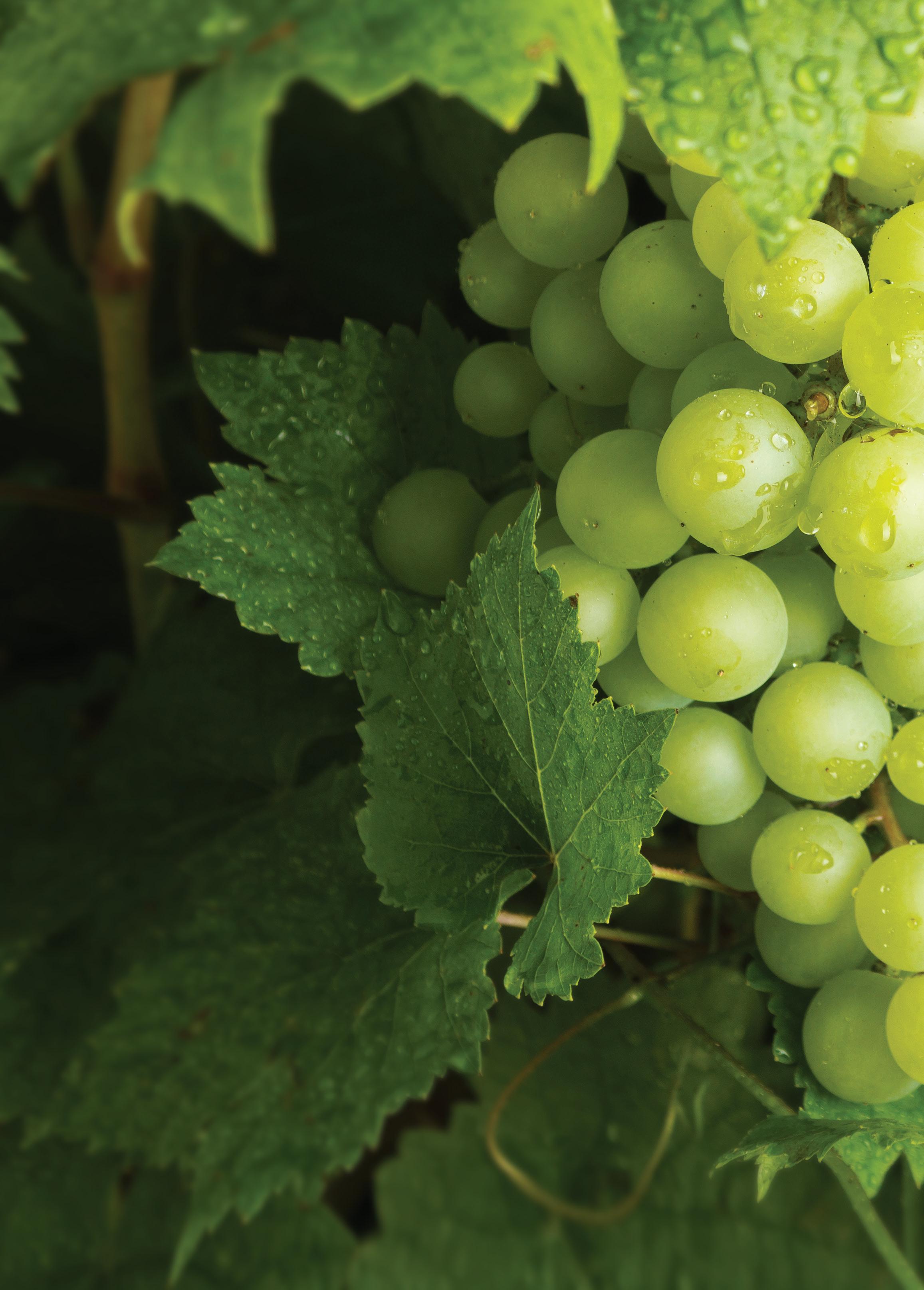



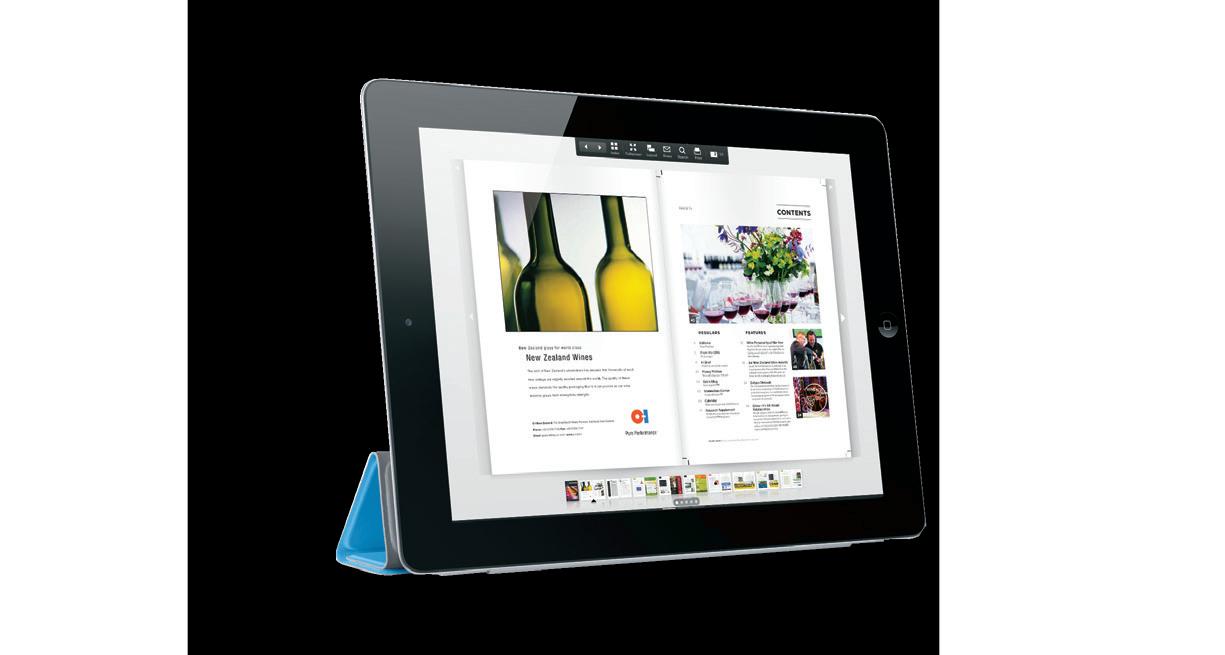
 SOPHIE PREECE
SOPHIE PREECE

The Vineyard Ecosystems Programme has opened up a real can of worms… alongside bacteria, fungi, and elemental chemistry. “With such a massive and rich data set we are going to be pulling interesting things out of this for years,” says Dr Sarah Knight, who has been studying soil biota as part of the wider grape growing ecosystem in New Zealand, to better understand the influence of season, region and management on vineyard biodiversity.

Sarah, who is a lecturer in the School
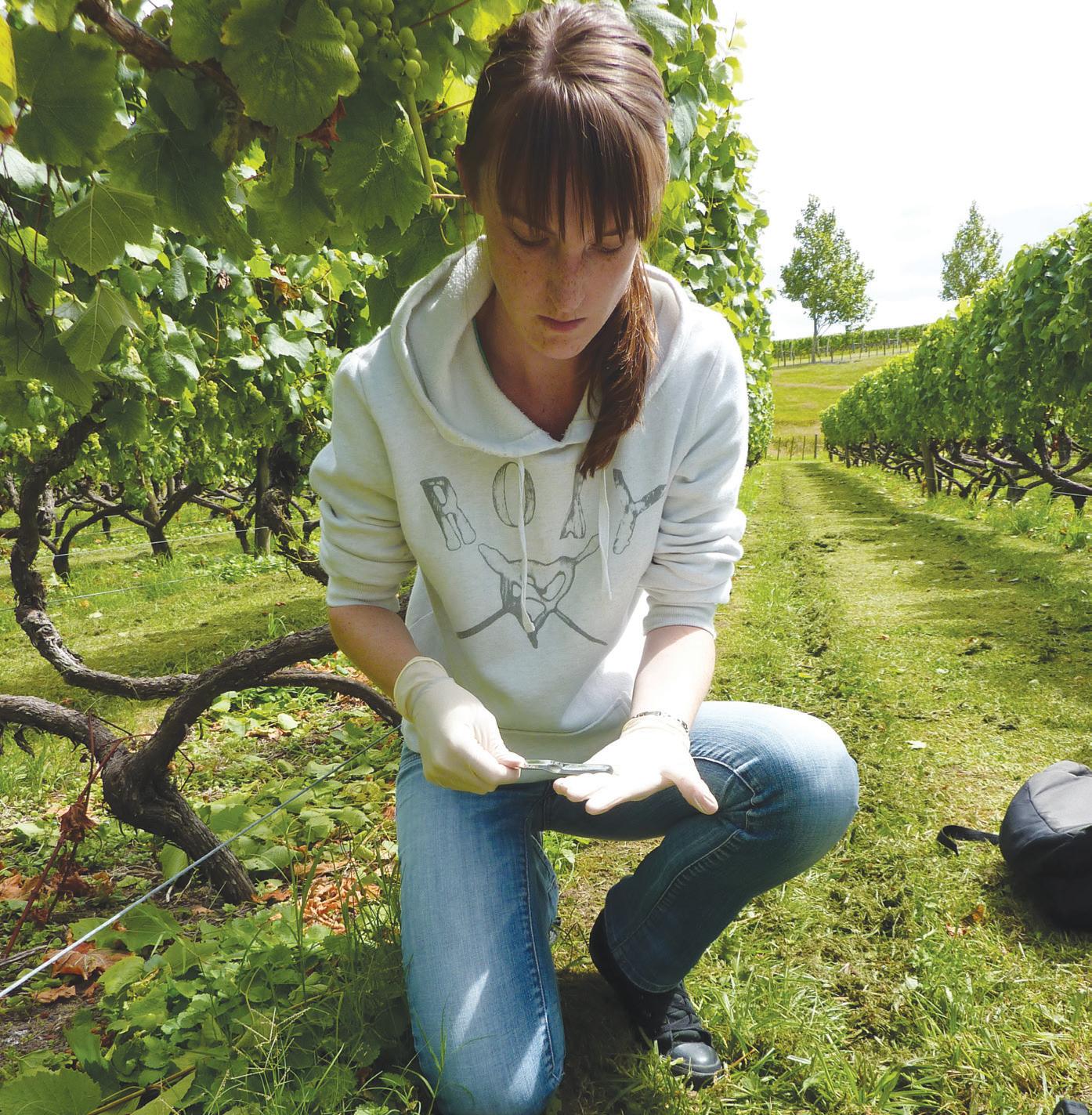
of Biological Sciences at University of Auckland, says the seven year programme, with five years of data collection across two regions and 24 sites, has yielded an abundance of data sets that shed a light on vineyard soils and how they interact with vines, cover crops, and climate, in a contemporary (with herbicide) and future (no herbicide and low synthetic pesticide) setting.
“The real value of the Vineyard Ecosystems Programme has come down to the diversity and scale of the data we are collecting,” she says. “It is designed to study the vineyard ecosystem as a whole rather than just an isolated aspect that might be of interest. So we are looking at the entire picture. That gives us a lot of power to understand how different parts of the vineyard might be connected. Then with this overlay of management practice, how management might be affecting those connections as well.”
The project itself has been a “huge undertaking” in terms of data collection, “and that’s where the bulk of the effort has gone,” says Sarah. Now, in the “back end” of the programme, there is a lot of analysis. “Scientifically, it’s an extremely valuable
dataset,” she says. “It’s one of the biggest in the world and it’s world-leading in this space.”
University of Auckland’s statistics department is key to mining the findings, and Associate Professor Beatrix Jones and her team have built sophisticated models

on wines, giving a new perspective on terroir. But “the big difference” in the Vineyard Ecosystems programme is in overlaying findings with the “added dimension” of management practice, “so we are able to understand how our management practices might be affecting our microbial communities”.
In one of the many spinoffs to the programme, two University of Auckland PhD students are now researching the scale of difference in microbe populations, says Sarah. “Is it simply that there are different things in different places? Different regions? Or is it smaller than that? Are the communities different on different vines on the same site? At what scale do we start to see that differentiation in our microbes that are important to our wine? So hopefully we get a few answers on that as well.”
using the data “so we are able to evaluate different connections between different components that we might not necessarily see without the statistical knowledge going on in the background too”, says Sarah.
Sarah has previously done groundbreaking work on the microbial signatures of individual vineyards and their influence
Sarah says the information gleaned is of immediate value in some cases, but is also a reservoir for future research. “There’s certainly a lot of potential sitting in this massive data set.” That means they’re as busy generating hypotheses as they are results. “We are looking at where this might take us next.”
“That gives us a lot of power to understand how different parts of the vineyard might be connected.”
Dr Sarah Knight
Climate change could have a dramatic effect on vineyards around the world in the coming decades. At the Toitū & Technology conference in Blenheim on 31 August, participants heard of the urgent need to transition to a low emissions future to keep global warming below 1.5 degrees Celsius.
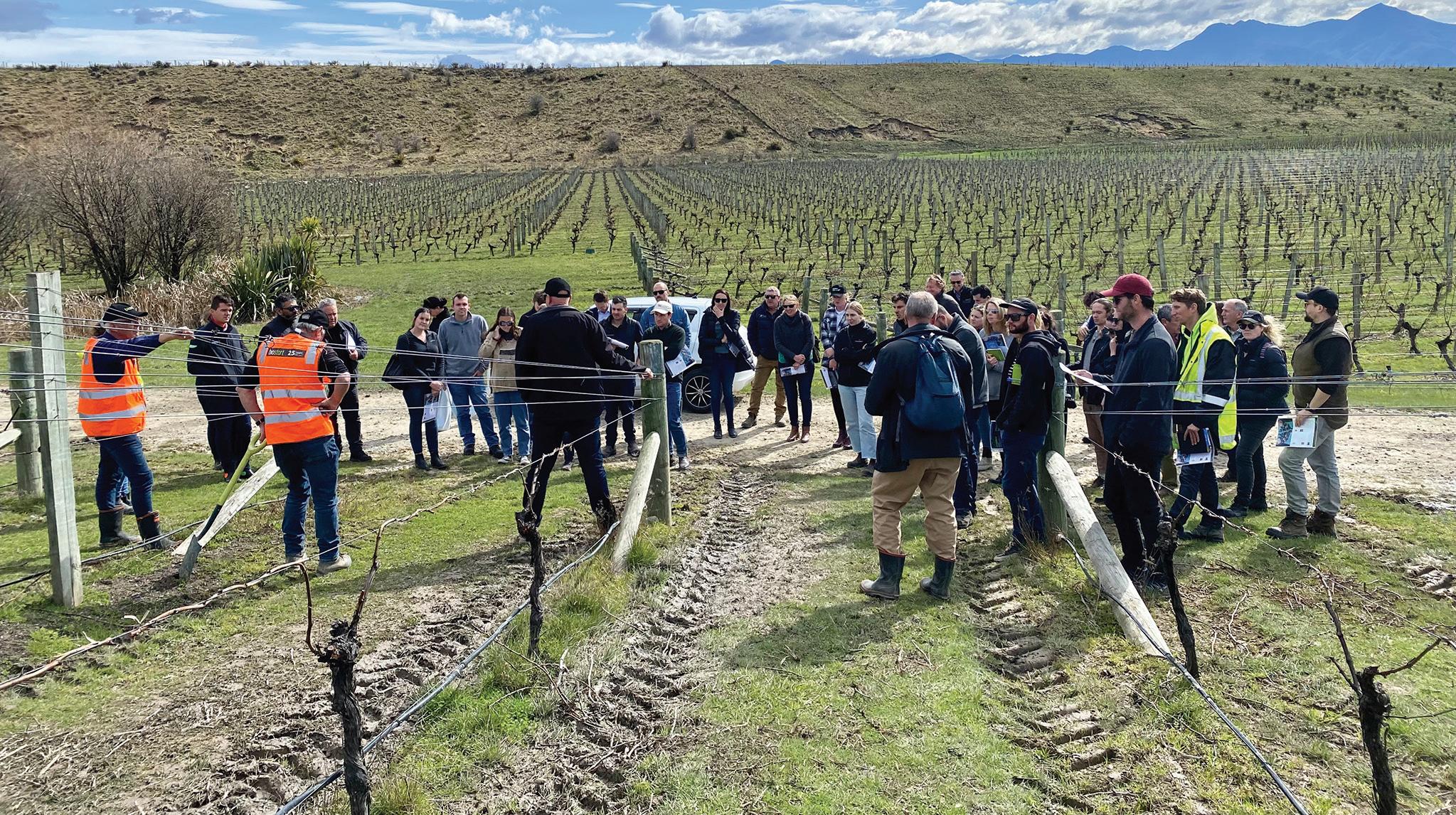
Ben Nistor, from Toitū Envirocare, explains that levels of warming higher than 1.5C will have a catastrophic effect on global wine production. “The research that’s out there suggests that under the two degrees warming scenario, Spain will
lose up to 65% of its wine grown, and Italy, Greece and – most notably – France will become inhospitable to grape growth by 2050. And in Australia in the next 25 years, most areas currently growing grapes won’t be growing as they are today. So that is a pretty staggering effect.”
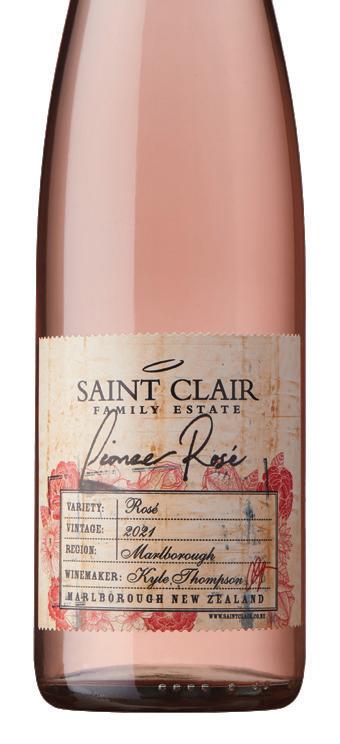
In New Zealand, the higher levels of warming will significantly impact which grape varieties can viably be grown across the country. Research has shown that global greenhouse gas emissions must halve by 2030 and reach zero by the middle of the

century to avoid the worst climate impacts. Ben outlines that while government has stated New Zealand must reach carbon zero by 2050, there is also huge consumer demand for industries such as the wine sector to reduce emissions considerably.
“Businesses need to start taking action and making commitments beyond what is directly under their control,” he says. “So starting to think about the full supply chain, the value chain of your products, how you can work collectively with others in the industry to build the ecosystem to enable

the swift transition to a low emissions future.”
For those beginning the journey, measuring and monitoring emissions is the best place to start, explains Ben. Positive changes then focus on understanding such aspects as fuel and water use, the carbon footprint of your supply chain, and any raw materials used.
Toitū offers businesses the chance to achieve net carbonzero certification, which is verified following the internationally recognised ISO 14064-1 standard. Lawson’s Dry Hills is one wine company that has already gained carbonzero status through the Toitū process, having met the requirements of ISO14064.
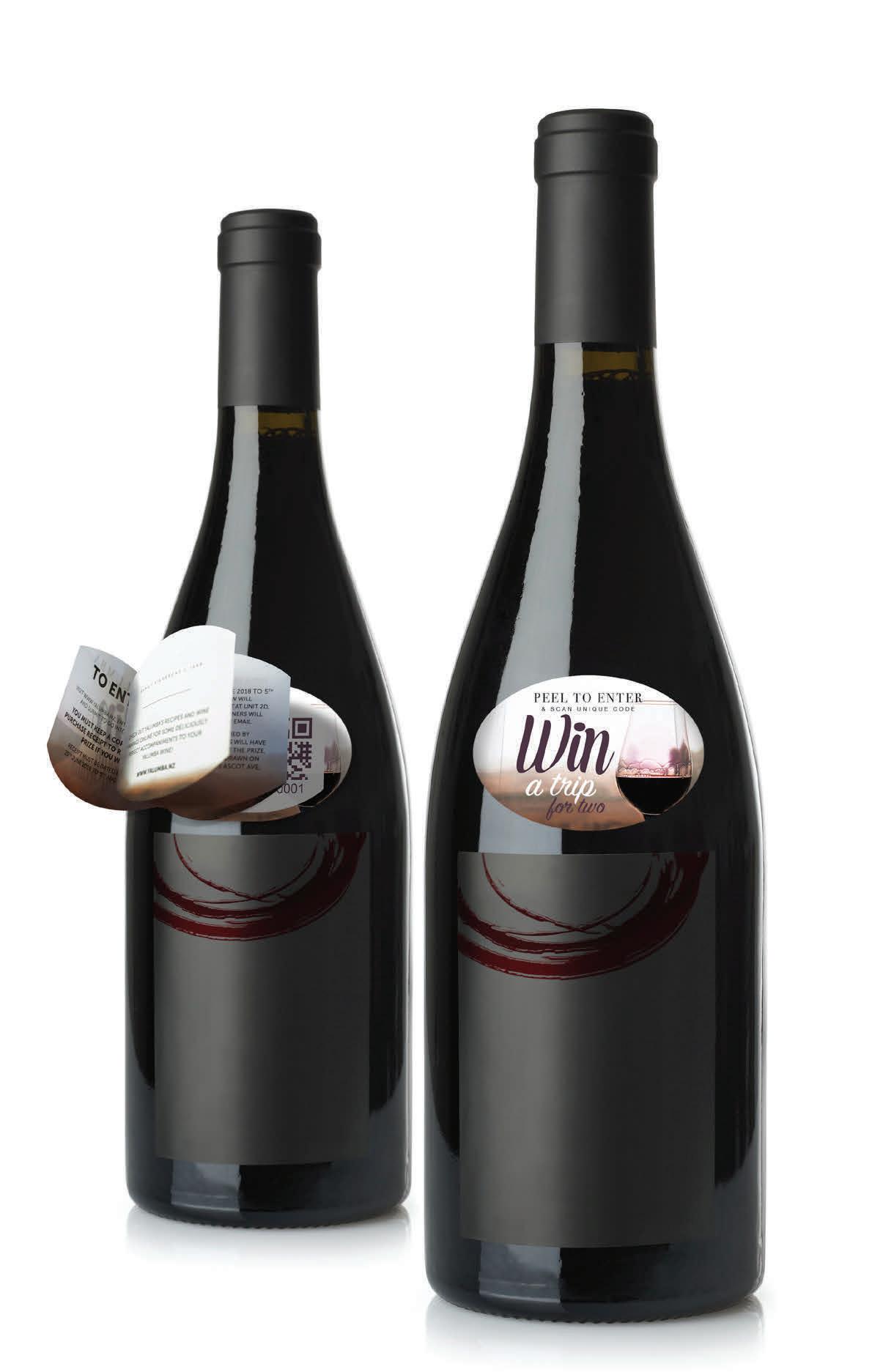

Belinda Jackson, Marketing Manager for the company, says sustainability is becoming increasingly important for those making purchasing decisions, so the company’s environmental credentials only add further value for consumers. Steps the company has taken to achieve the accreditation have included a dramatic reduction in diesel, improving vineyard practices (including fewer passes through rows thanks to machinery upgrades) changing to plugin hybrid vehicles, reducing water use and capturing rainwater, and introducing better recycling processes. “There’s a lot of other smaller components, but together, they really do make a difference. The result for us is that we use 37% less power, and 44% less water compared to the industry average for other wineries our size. This is totally achievable – if we can do it, there are a lot of others that can do it too.”
Conference organiser Nicky Grandorge, Leadership and Communities Manager at New Zealand Winegrowers, says the wine industry is generally well positioned to adapt to a carbon zero future. “We understand the importance of healthy soils and biodiversity, as well as the long-term and immediate impact of the change in weather patterns, causing droughts and floods,” she says. “Without a doubt, there are challenges ahead. But as innovators and early adopters of some of these technologies and techniques, we can forge ahead and highlight to the world that we can produce high-quality wines whilst reducing our carbon emissions and protecting our planet.”
Hyundai Motors New Zealand took the opportunity of the Toitū & Technology conference to debunk some myths surrounding electric vehicles. Conrad Healy, presenting on behalf of Hyundai, says that while progress is being made, it is still a massive undertaking to decarbonise the transport sector by 2050. Commonly expressed reservations about electric vehicles (EVs) include range anxiety, the claim that batteries will end up in landfill, that EVs can’t do the job of a ute, and that they can’t tow. Conrad explains that the range question is less of an issue with many models capable of 500km or more on a single charge, while many drivers realise that for most trips EVs are perfect –particularly without the need to fill the tank at almost $3 a litre. In terms of battery degradation, Hyundai sees very little of that, with five-year-old models still achieving the same range as when they were delivered. And batteries are simply too valuable to dump into landfills. With bigger batteries and longer ranges, many EVs are capable of towing, although a full replacement for the trusty ute is more likely to be in the form of a hybrid or plug-in hybrid. “So we can see that some of the perceived issues are no longer a problem. And with the rapid rate of change within the industry, more of these problems will no longer apply,” says Conrad . “Are EVs the whole answer? Probably not, but they are part of the answer, definitely.”
In a series profiling this year’s Bragato Trust Scholarship recipients, we talk to Michelle Barry about the potential for diversification within our vineyard systems.


A bit of visa wrangling from an Irish soil expert proved fortuitous for New Zealand’s wine industry.
Michelle Barry is one of this year’s Bragato Trust Scholarship recipients and a member of Bragato Research Institute (BRI) team. She is undertaking a PhD exploring the potential for diversification to increase the resilience of Marlborough’s wine region to climate change and to help winegrowers “make decisions in the face of uncertainty”.
Michelle moved to Aotearoa in late 2015, wanting to experience a different culture while putting a degree in environmental
science and Masters in soil science to work in the agri-environmental sector. When she was grappling with visa renewal, Michelle discovered that working in viticulture or horticulture was just the ticket. “Somewhere along the road I had heard about the concept of terroir and understood soil to be an integral part of the terroir paradigm,” she says.
Michelle swiftly found a role as Viticulture
Michelle BarryTechnician at Craggy Range’s Te Muna Road vineyard in Martinborough and instantly fell in love with the industry. “The vines, the wine, the beauty of the landscape and the comaraderie all swept me off my feet.”
In 2016 Michelle moved to Marlborough, where she worked for a number of wine companies as a viticulture technician, cellar hand, and vineyard manager, interspersed with work overseas in wine sales and a
harvest in Germany. In the meantime, she and her winemaker partner established their own small wine company.
But despite all the talk of terroir, Michelle came to see that dealing with soil and land management issues was low on the list of priorities for the wine industry. “And when winegrowers might have time to consider these things, they quite often don’t know what to do or where to start to make change.” That realisation led her to join BRI in 2019, to assist with its soil and land management extension and research needs. Her work with BRI includes several research projects, from investigating the impact of undervine management practices on soil microbial communities to exploring the global market potential for regeneratively produced red meat and wine products from New Zealand.
In her application to the Bragato Trust, Michelle said joining BRI exposed her to the financial considerations of vineyard management “and how financial uncertainty around the impact of changing land and soil management practices to those that could have a more positive environmental impact, limits practice and land use change”.
She also realised the industry did
not recognise the “huge contribution” nature makes to the sector, in the form of ecosystem services. “Concurrently the impact of land management decisionmaking on our natural assets and how this might impact on long term business performance and industry resilience is not considered in business or industry decision making.”
These realisations sparked Michelle’s interest in agricultural economics, leading to her PhD research. “Diversifying and adapting production systems is necessary to future-proof our wine industry for the challenges and opportunities associated with climate change, societal expectations, and market value capture,” she told the Bragato Trust.
With its high degree of specialisation, monoculture and regionalisation, the Marlborough wine region is well positioned to capitalise on diversification, she says. Her project will develop a Marlborough case study, identifying and assessing the performance of long- and short-term diversification options, and their “ability to perform environmentally and economically across various temporal and spatial scales”.

The Bragato Trust was formed in memory of viticulturist and visionary Romeo Bragato, who trained at the School of Viticulture and Oenology in Conegliano, Italy, from 1878 to 1883.
Romeo was the Victorian Government Viticulturist Expert from 1888 to 1901, and visited New Zealand in 1895 and 1901, before moving here in 1902, and serving as New Zealand Government Viticulturist until 1909.
The Bragato Trust was enabled by a bequest from the estate of the late Jan Colville, granddaughter of Romeo and Laura Bragato and a grant from the New Zealand Grape Growers Council.


The trust’s scholarships aim to support research relevant to the viticulture and wine industry, and to promote the development and dissemination of viticulture knowledge and practice in New Zealand.
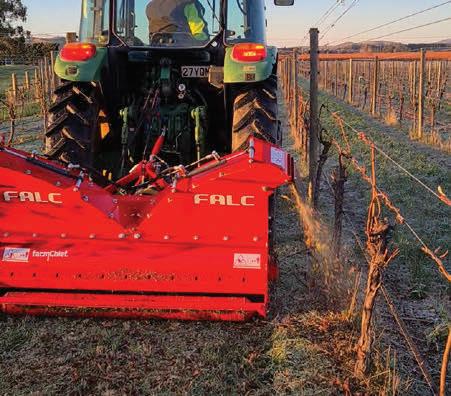
For more information go to nzwine. com/en/events/bragato-trustscholarships

In May this year, PhD student Wenyao (Arthur) Zhu, published a paper in the Journal of Agricultural and Food Chemistry, alongside research partners Frank Benkwitz of Kim Crawford Winery and Professor Paul Kilmartin, from The University of Auckland Wine Science Programme. In this Q&A, Wenyao gives some insights into the paper, Alternative Perspective on Rapid Wine Oxidation through Changes in Gas-Phase Volatile Concentrations, Highlighted by Matrix Component Effects.
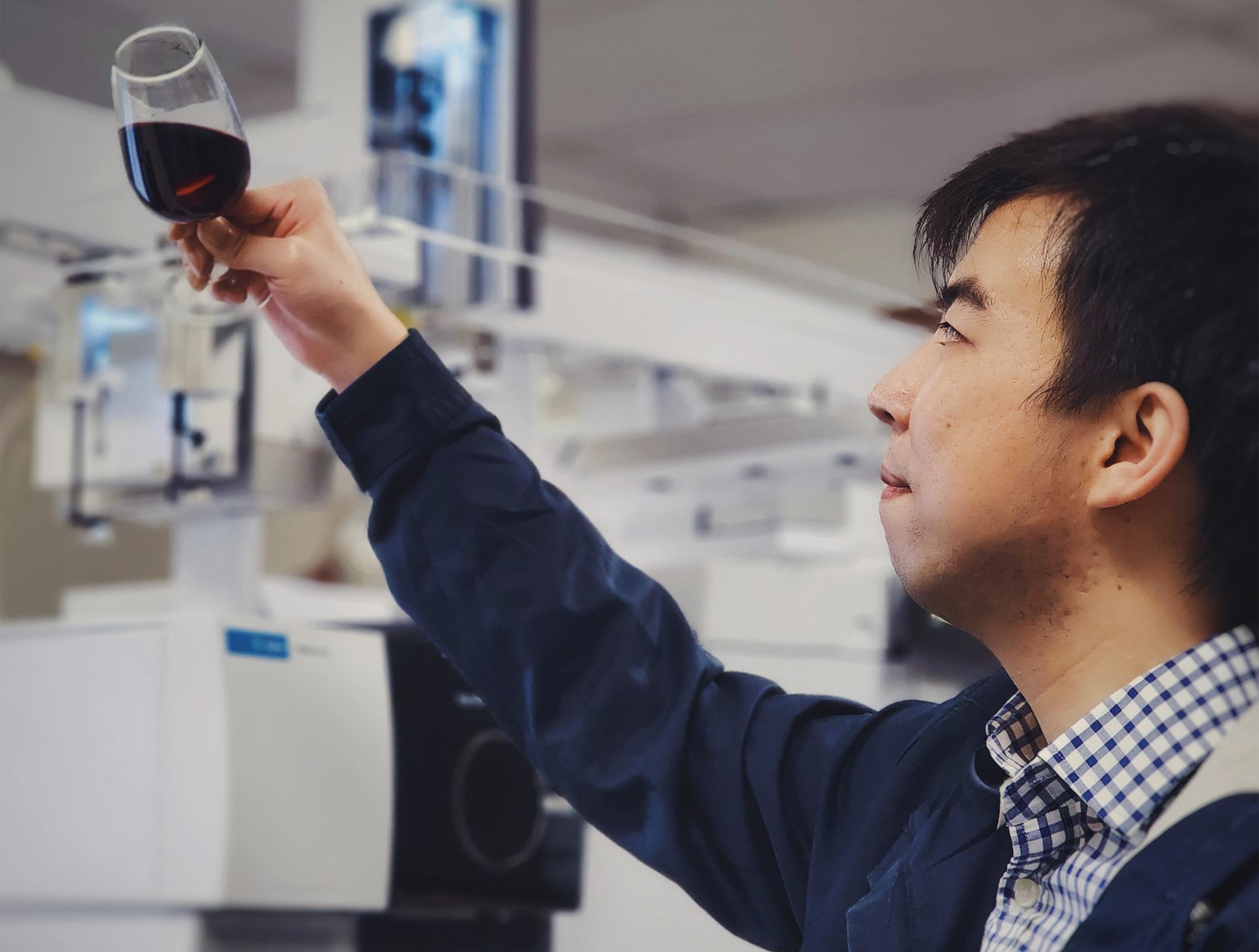
How did you become involved in the Wine Sciences Programme at the University of Auckland?
My background in food science when I did my Bachelor and Master studies in Australia deeply interested me in sensory science topics. The many unsolved mysteries in its aroma make wine a perfect research subject in sensory studies. I was utterly fortunate to be able to carry out wine research in New Zealand at the University of Auckland, an institution where I don’t just do research but also get to relate my insights with real-world wine productions.
How is oxidation traditionally assessed?
Wine oxidation is traditionally viewed from a flavour perspective, which has a lot to do with looking at how phenolics evolve. People also study oxidation from an odour perspective by looking at the drop of fruity aroma compounds, or the development/ accentuation of notorious volatiles such as acetaldehyde and ethyl acetate. When it comes to relating oxidation to volatiles though, the default way was to focus on the absolute concentrations of those compounds, as that is what the instruments used for such tasks can detect.
My study focused on using our instrument, gas chromatography-ion mobility spectrometry (GC-IMS), to directly mimic the human sensory experience, instead of just looking at the concentrations of some important fruity esters in wine. The concept of partial pressure is rather sparingly used in sensory research in general, let alone wine-related studies. The partial pressure links the absolute amount of a volatile
compound to its tendency to get released from the bulk of wine into headspace. Thus, by comparing different partial pressures, we can have a better understanding of how important each of the aroma compounds really is in shaping our overall perception of a wine aroma-wise.
Some important volatile compounds in wine that impart fruity and flowery aroma like ethyl octanoate, ethyl hexanoate, and isoamyl acetate drop much more greatly in partial pressure during oxidation, compared to their concentrations. This shows more accurately how badly oxidised wines can lose their fruitiness. Also, common winemaking additions like copper and ascorbic acid may have varied impacts on wine’s anti-oxidation capacity. A highlight of our finding is that, for full-alcohol (12%) wine, adding 50 ppm ascorbic acid makes it more likely to lose fruitiness after 30-day oxidation, while for low-alcohol (7%) wine, the same ascorbic acid addition helps to preserve fruity aroma after 30-day oxidation.
Wine is a complicated system in which many factors interact to affect what consumers eventually perceive. It is the interactions that make wine a fascinating object to study. Wine research offers the tool to re-evaluate traditional winemaking methods, and to inspire novel approaches.
Wenyao ZhuMany traditional practices are empirical and lack scientific premises to justify what should or shouldn’t be done. Wine research thus is both interesting and important to protect the economic significance of New Zealand’s wine industry.
This work is a fine demonstration of what the GC-IMS is capable of. Still, there are aspects that can be improved. It might also be interesting to look at compounds other than esters that are similarly important for wines, such as terpenes and volatile sulfur compounds once we get suitable GC columns installed. This would enable us to investigate not just wine oxidation but also reductive odours in wines, which is yet another common problem bothering New Zealand winemakers.
What support have you had for this work?
My PhD research is funded by the Callaghan Innovation Research and Development Fellowship Grant. I received immense help from my supervisors
Professor Paul Kilmartin and Dr Frank Benkwitz. Paul always enlightens me with his plentiful knowledge in wine. Frank is more like half-supervisor and half-mentor, who never stops to encourage me to “think outside the box” and experiment with new methodologies. I’m truly indebted to both of them.
Find the full paper at doi.org/10.1021/acs.jafc.2c00437
Now registered for use
vineyards, SeQuence® is the
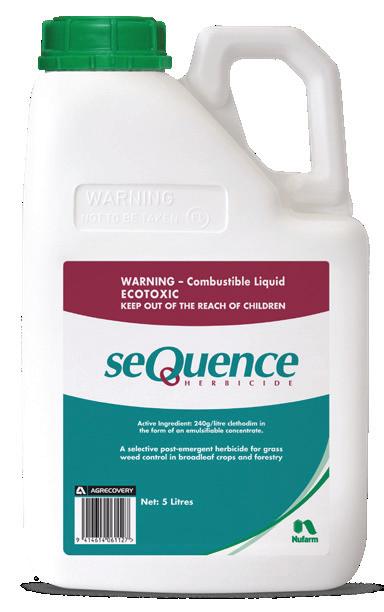
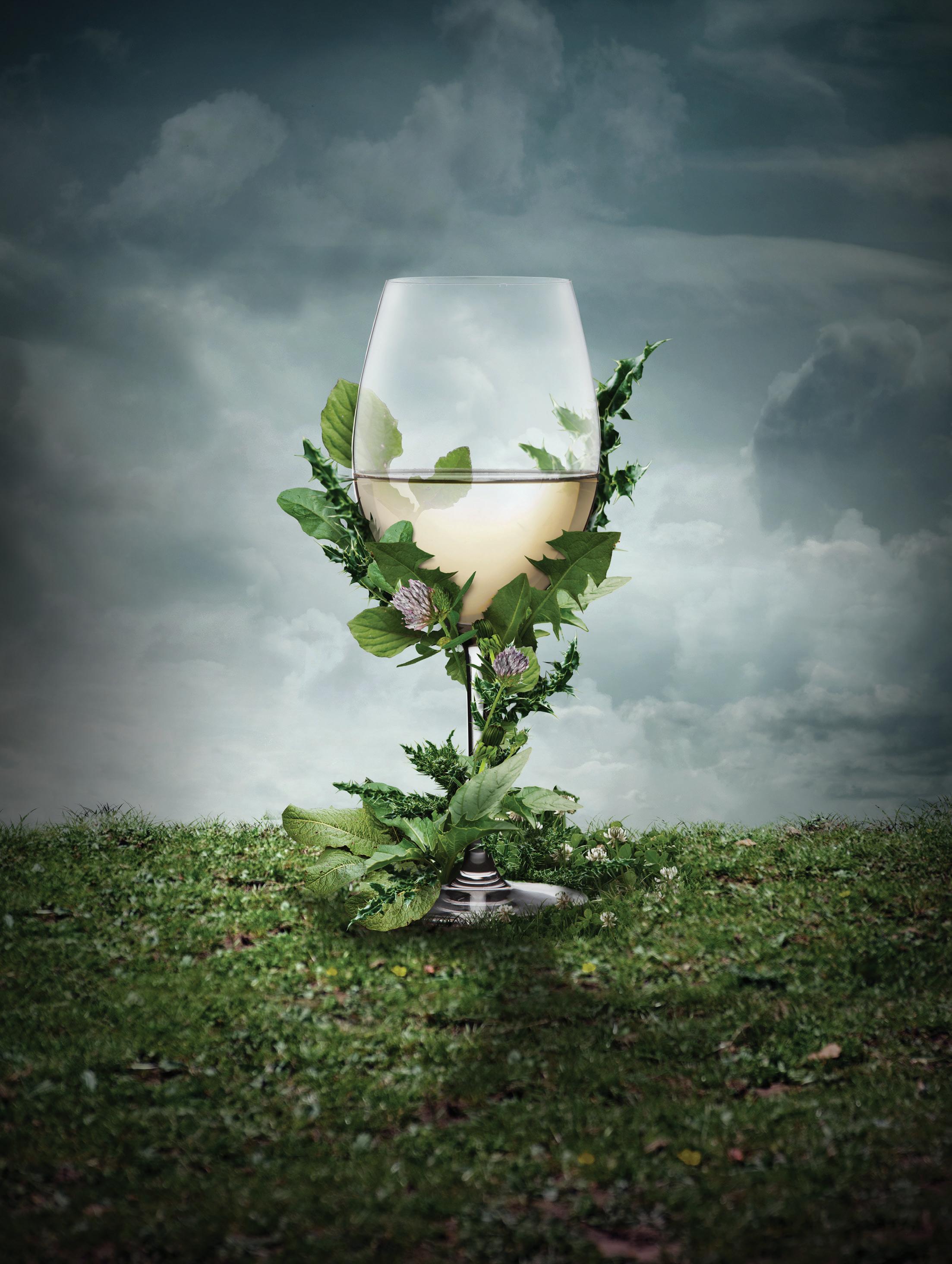
control of grass weeds.
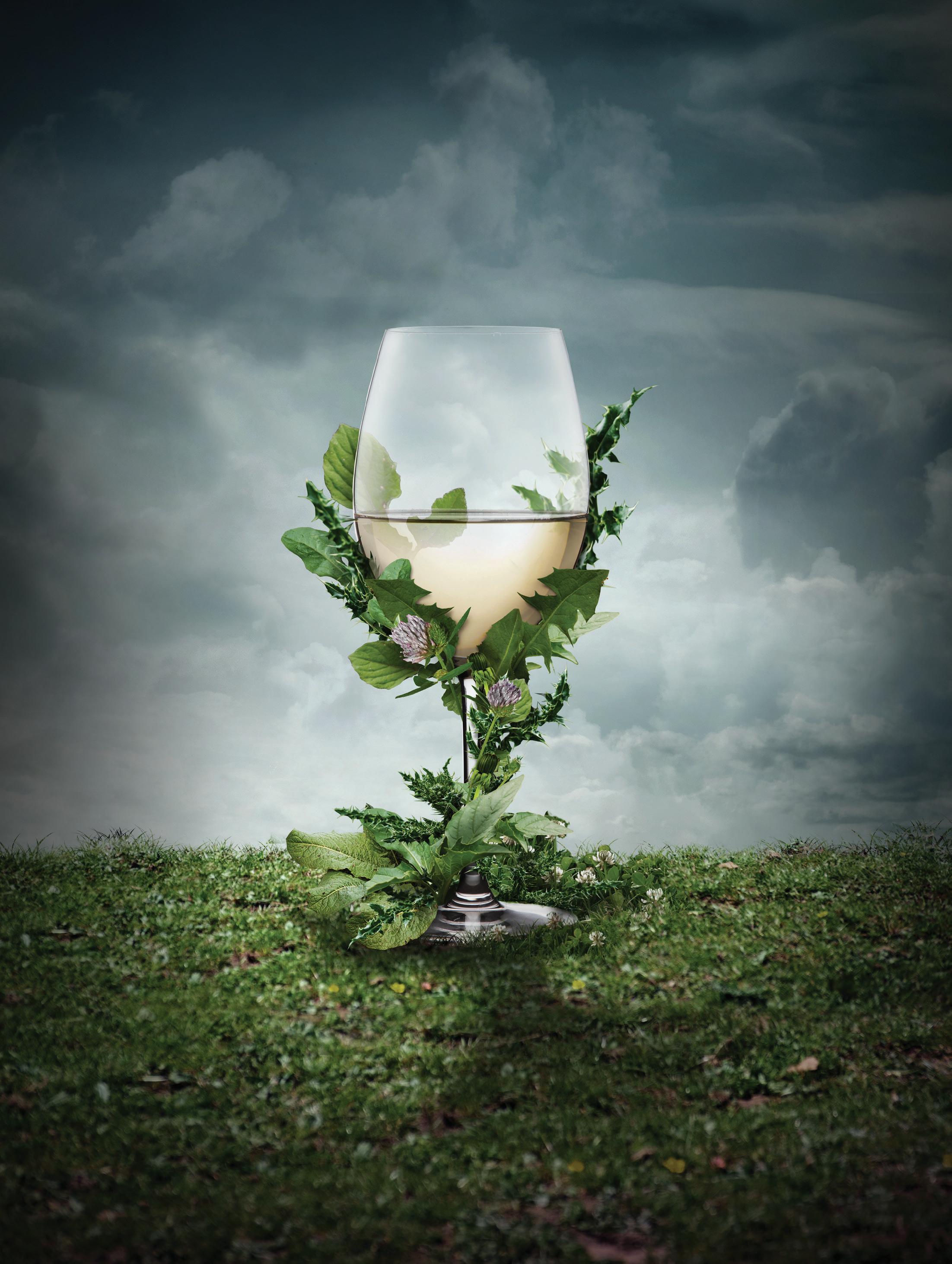
A recent research project has added impetus to the argument for the Scott Henry trellis system in Marlborough Sauvignon Blanc, says the scientist behind a two-year trial.

Dr Stewart Field, a lecturer at Nelson Marlborough Institute of Technology (NMIT), says research conducted over the past two seasons, in trials at Wither Hills and wine production and analysis at the Bragato Research Institute (BRI) and NMIT wineries, showed multiple advantages of the Scott Henry system compared to vertical shoot positioning (VSP) four-cane pruning.
The positives of decreased disease risk and increased yields “dwarf” the extra management costs of the system, which sees shoots trained down to a bottom wire at flowering, extending the exposed canopy and fruit. “I can’t see why more growers located on vigorous soils in Marlborough

are not using Scott Henry,” he says.
Wither Hills Viticulturist Ben Burridge began the trial work after the company took over a lease block of grapes with some Scott Henry trellis in place. He had already seen the success of the system, having bought fruit in a botrytis-afflicted year from a producer using Scott Henry trellis. “We were getting fruit from across the valley, and we noticed the difference in quality,” he says. “Since the infrastructure was there, we decided to give it a go.”
The decision was not without its challenges, with frost in the first year leading Ben to switch back to VSP, having been informed of the difficulty of managing their new system on frost-damaged vines. Labour supply issues the following year made it “a mission to get the right people in at the right time”, with shoot training in


November and December, while other work is in full swing.
That year it cost the company an extra $2,000 per hectare to implement the alternative system, whereas the year after, when they had better labour and timing, it was only $1,000. In a normal year there are at least two more passes required by the system, first positioning the shoots two or three weeks after budburst, then dropping them around flowering. Stewart says there is no more effort required in pruning and the additional cost is easily covered by higher yields and better-quality fruit, with less bunch rot.
In the second year of the trial, in 2022, the yield was close to 6 tonnes per hectare greater in the Scott Henry vines, with no significant difference in ripening, although Scott Henry had slightly higher brix.
The increase in yield was largely due to a “significant” increase in berry size, as well as a “slight” increase in bunch number and berry number/bunch. There was no difference in shoot number.
Total acidity was significantly higher in the VSP “largely due to significantly higher malic acid”, says Stewart. There was also significantly higher botrytis pressure in the VSP vines. When it came to chemical analysis of the wines, the VSP fruit produced significantly higher thiols in both vintages, but there was no difference in methoxypyrazines.

One cautionary note Ben raises is to be vigilant about the timing of sprays, especially in November and December, because the canopy can be “sticking out and crazy” before being trained down, making it challenging to get coverage. “But once you have dropped it looks really good.”
Delegat uses Scott Henry in all its vineyards, having trialled the system in 2009 and implemented it across the operation by 2012. Company viticulturist Rob Trought recalls Dr Richard Smart (see Smart Choice sidebox) saying, “don’t tell me you can’t do it; prove to me you can’t do it.” It turned out they could, and Rob says the


Dr Richard Smart, former Government viticulturist at the Ruakura Research Centre in Hamilton, first met Scott Henry in 1983 in Oregon. “I was impressed with the system which Scott had developed, based on canopy management principles,” he writes from his base in Australia. “Trials in Gisborne, Hawke’s Bay and Marlborough demonstrated the benefits of conversion of standard New Zealand vertical shoot positioning trellis.” Richard describes “consistently higher yields by 30% or more, typically earlier ripening, less bunch rot, and less need for leaf removal. All of this with very small
benefits were quickly apparent, including higher yields and less disease, while the company’s fruit was often remarked upon as being cleaner in tougher years. “It gives us more resilience in wetter seasons.” However, he says it can be challenging to start with, and he applauds the operations supervisors and managers who have made it a standard operation in the vineyards. Stewart says despite the benefits of Scott
increases in cost”.


Richard says the method has proved very successful for Sauvignon Blanc and other varieties in Marlborough, and research results with red varieties have shown improvements in quality. The extra costs are one movable foliage wire below the head, and an extra 25 to 30 hours per hectare for a shoot positioning pass downwards, about two weeks preflowering, he adds. “A major company in Marlborough has used this method successfully for over a decade and in Hawke’s Bay and Australia. Why not follow their lead?”
Henry trellising, and positive outcomes for companies like Delegat, there is resistance to change. He also knows of growers who have tried the system and slipped up on timing – too early to catch all the shoots or increased breakages, or too late because the tendrils have already attached to an upper wire. “I think that’s what’s happened with a few growers – they have tried it and got that bad result.”


The Advancing Viticulture and Wine Related Research symposium, organised by Eastern Institute of Technology’s School of Viticulture and Wine Science, attracted academics and industry players from across the country in person and online.
The wine research symposium in September, which followed on from last year’s successful inaugural event, included presentations by researchers from the University of Auckland, Lincoln University, Plant & Food Research, Otago Polytechnic and EIT.
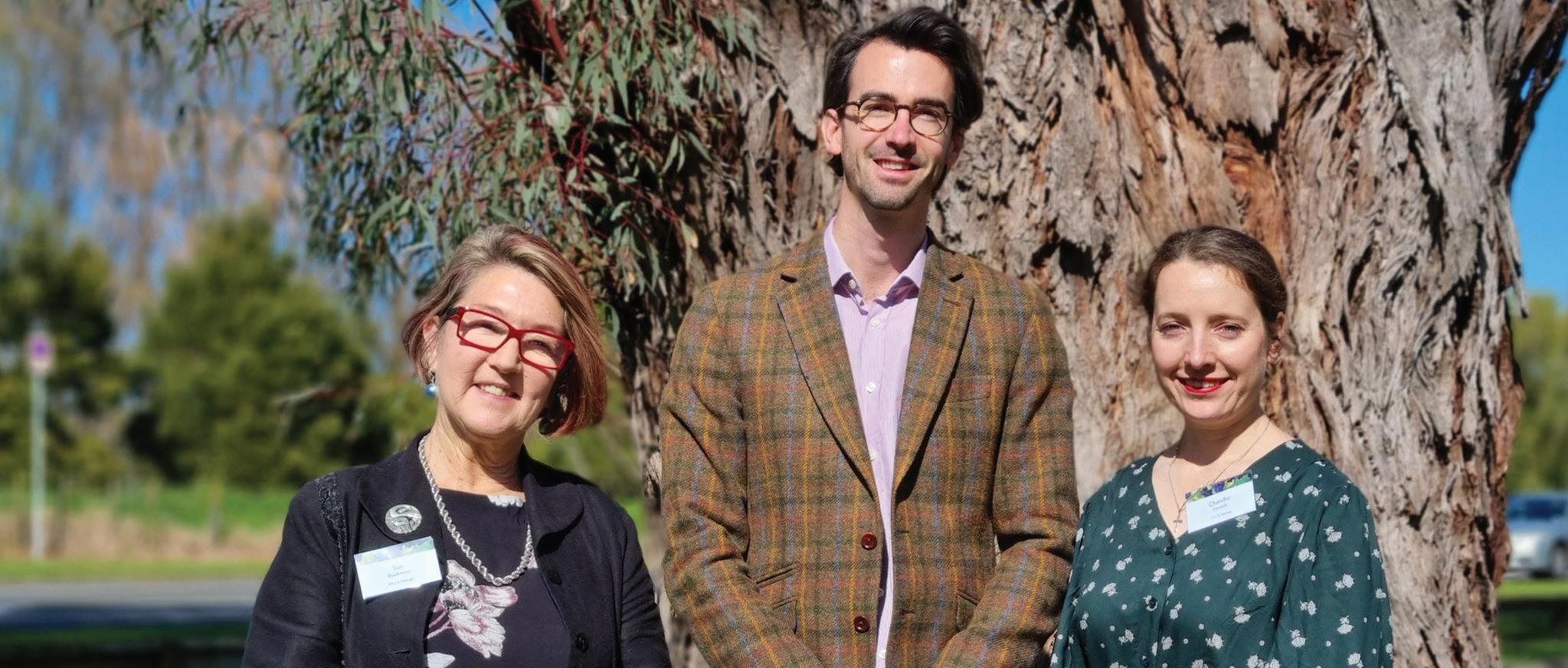
Sue Blackmore, the Head of EIT’s School of Viticulture and Wine Science, says the intent of the gathering is to provide established and emerging researchers from across New Zealand research organisations an opportunity to present in a formal setting “and gain feedback from each other and the wine industry”.
Professor Paul Kilmartin, from the School of Chemical Sciences at the
University of Auckland, was one of two keynote speakers. He says it was a great event for EIT and that people like Sue and Dr Rory Hill, Programme Coordinator and Lecturer – Wine Business and Innovation, should be congratulated, “because there is a real need to have this for our researchers to be able to meet and interface with the wine industry”.
Paul presented on pre-fermentation additives that enhance varietal thiols in Pinot Gris, Chardonnay and Sauvignon Blanc wines. His work centred on New Zealand Sauvignon Blanc and how what happens during harvest can change the style of wine.
Hirini Matunga (Kāti Māmoe, Ngāti Kahungunu, Ngāi Tahu and Rongowhakaata), Professor of Māori and Indigenous Development and Professor of Indigenous Planning at Lincoln University, spoke on ‘Whenua – Terroir by another name?’ “I’m really drawing attention to the
fact that sense of place within the context of Aotearoa can’t be seen in an a-historical way; it’s got to be seen through the prism of colonisation as well and land confiscation and the Treaty of Waitangi,” he says.
Three current EIT researchers also presented papers. Viticulture and Wine Science lecturer Dr Chandré Honeth presented on the ‘impact of using undervine clover to manage mealybug and leafroll virus on vine physiology and metabolism in a Merlot vineyard planted on the Gimblett Gravels’. Dr Victor Ye spoke about ‘sensorial characterisation by polarised partial napping and ultraflashing profiling’, while another EIT lecturer in Viticulture and Wine Science, Jane Qin, presented on the ‘characterisation of commercial Hawke’s Bay Chardonnay wines – chemical composition and winemaking intentions’. To read more about the symposium go to page 74.
The term terroir is widely used in the commercial wine world. It has traditionally been used to reflect a fusion of climate and land classification coupled to the opinions of ‘expert’ marketers and wine writers. In Marlborough, data collected over six seasons has been used to move to a robust, quantitative way of understanding subregional differences in grape development, with the aim of providing a quantitative understanding of the Marlborough terroir.
Early research on subregional variances in Sauvignon Blanc fruit and wine composition clearly demonstrated differences in wines, particularly when the Awatere Valley is compared to the Wairau (Jouanneau et al., 2012; Trought et al., 2010). However, the number of sites used in these studies was limited. Recently, to achieve a more robust, quantitative understanding of terroir zoning in Marlborough, Dr Rob Bramley and I obtained data for Sauvignon Blanc from
more than 1,000 Marlborough vineyards on a confidential basis from grape growers and wine companies over six vintages (2014-19). This enabled regional-scale maps of yield and harvest date to be drawn. By gathering the data from a number of individual vineyards, the maps identify consistent subregional differences in vineyard performance–both within and between the Wairau and Awatere Valleys. These differences raise questions on the climate, soil and management factors that may be driving subregional variation in vineyard performance.

Quantitative methods of spatial analysis provide a robust basis for characterising biophysical variation and may usefully underpin sensory and chemical analysis of wines and an improved understanding of terroir and regional/subregional distinctiveness. Such methods are free of any bias introduced to studies of terroir zoning arising from opinions based on historical or geopolitical boundaries.
The results of our research were presented at July’s Australian Wine Industry Technical Conference in Adelaide, and at the International Terroir Congress in Bordeaux, France. The research poster (If New Zealand Can Do It, Why Can’t Australia?) was awarded ‘Best poster; people’s choice’ at the Adelaide conference.
Dr Mike Trought is a scientist with more than 40 years’ experience New Zealand’s wine industry. He is a fellow of New Zealand Winegrowers and was inducted into the New Zealand Wine Hall of Fame in 2017.

Early research on subregional variances in Sauvignon Blanc fruit and wine composition clearly demonstrated differences in wines.

Suburban Auckland might not seem the logical start line for a stellar career in grape growing.
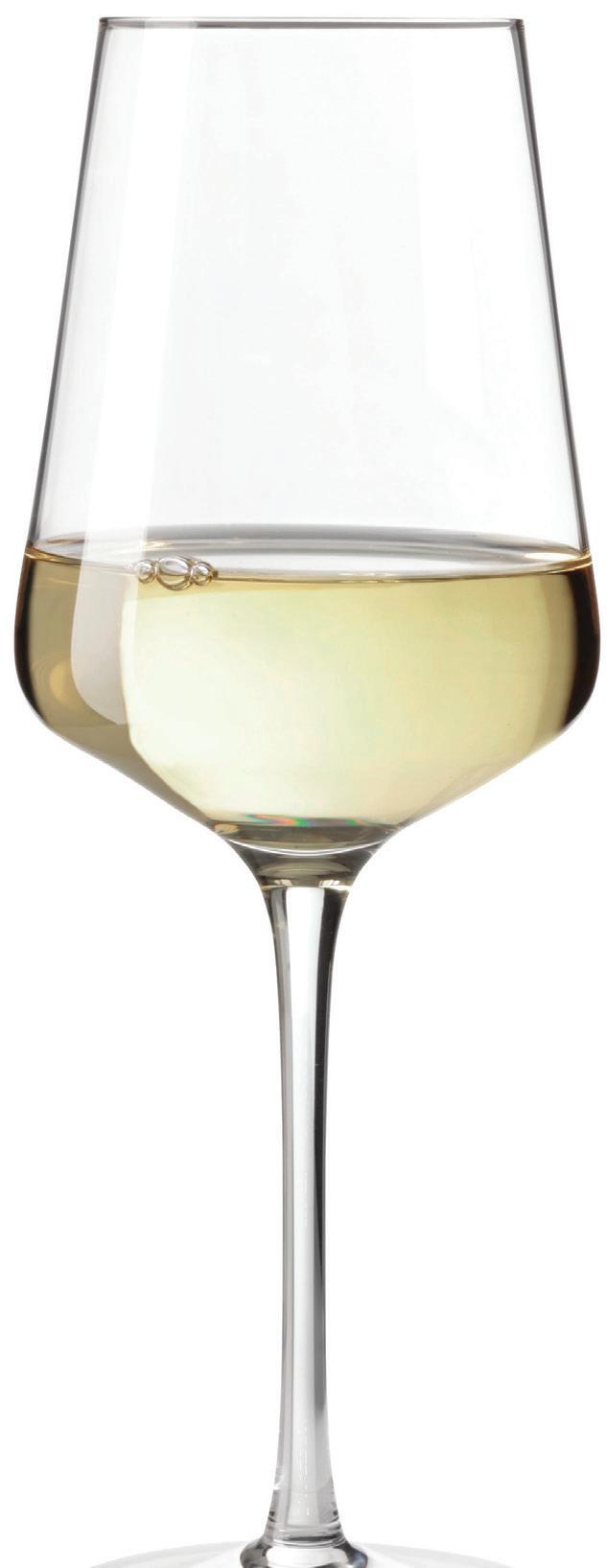
But the 2022 Corteva Young Viticulturist of the Year believes his urban upbringing gives him a fresh perspective on the science and art of his trade. “I am probably from one of the least traditional backgrounds,” says Tahryn Mason, a vineyard supervisor at Villa Maria’s Seaspray Cluster in the Awatere Valley. “I don’t have any preconceived ideas of what
wanted to be,” says Tahryn. He hadn’t been attracted to sciences at school, but the work got him thinking about building that knowledge, and he began taking courses through the Primary ITO, eventually climbing to his Level 4 certificate while on the job. “All the knowledge I have built is self-taught, under my own steam,” he says.
He also grew and tested that knowledge through the Young Vit competitions, starting with the Auckland/Northern regional event in 2019. “I have treated
trying to grow a really premium product and it’s a fine balance between art and science.” Research is key to decision making, alongside management plans, wine styles and the block itself, he says. “It can be quite subjective. In the same company two different winemakers might want to do two different things.” And he loves that the work he does in the field – whether that’s through inputs or the absence of inputs – can achieve all of that. “That’s the fascinating bit for me.”

The more he considers farming, the more convinced Tahryn is that things are backwards. “We should focus a lot more energy and attention into growing the soil and building resilience in the soil first, and building that through long term to the grapes.” The Seaspray Cluster is comprised of two conventional and two organic vineyards, but for Tahryn the answer is not one or the other. He abhors herbicide strips and vineyards mowed to a “bowling green” aesthetic, and admits he is guilty of “being lulled into an organic versus conventional dynamic”. But he’s now keen to explore a more nuanced “toolkit” for vineyards that will make them more resilient, reducing the need for reactive measures. “In the future a mixed model between the two will revolutionise the industry,” he says.
Ditching the “bowling green clean” is key to that model, he adds. “We could eliminate a lot of extra work for ourselves by working in with nature and letting things grow naturally.” Cover crops and swards provide “living root systems” more aligned with the natural environment vines evolved within, says Tahryn, who dreams of one day driving around Marlborough
and finding undervine plantings in every vineyard.
Consumer pressure and government regulations regarding herbicide will drive a change of practice for those not already doing it, says Tahryn. “If we are not looking at alternatives, and at the forefront of research in those areas, we will very quickly be left behind.” Building



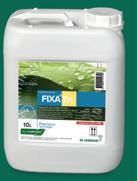




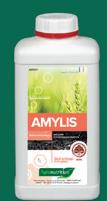



A few years ago Tahryn thought his viticulture ambitions would be satisfied by having a few hundred hectares of grapes under his control, “but the more I advance the more I think I have something to offer the industry as a whole,” he says, noting a growing passion for nutrition and soil health. “If in 10 years I was specialising in that field and how that relates to what we want to do, I think I’d be pretty happy.”

Tahryn is enjoying a short lull in his studies, with his next competition – New Zealand Horticulturist of the Year –not until 2023. Given the whirlwind of harvest, the birth of his son, the regional competition and then the nationals, he is looking forward to making up for some lost family time.
resilience is about knowing what the alternatives are, he adds. “Because not everything works for everybody.” That’s particularly true of cover cropping, with an array of site specific impacts, including on the performance of wines. He notes the need for trials to see whether the effect is as expected, and to highlight any other positive or negative consequences.


The industry faces challenging times, “but I am still quite hopeful for the future”, Tahryn says, noting that some see him as an idealist. “There are waves to crest on the horizon yet, and the worst may be yet to come. So building resilience and being adaptive now will be make or break for this industry I think.”
Photos on right, taken at the 2022 Corteva Young Viticulturist of the Year national final at Bankhouse in Marlborough. Photos Richard Briggs
“All the knowledge I have built is self-taught, under my own steam.”
Tahryn Mason



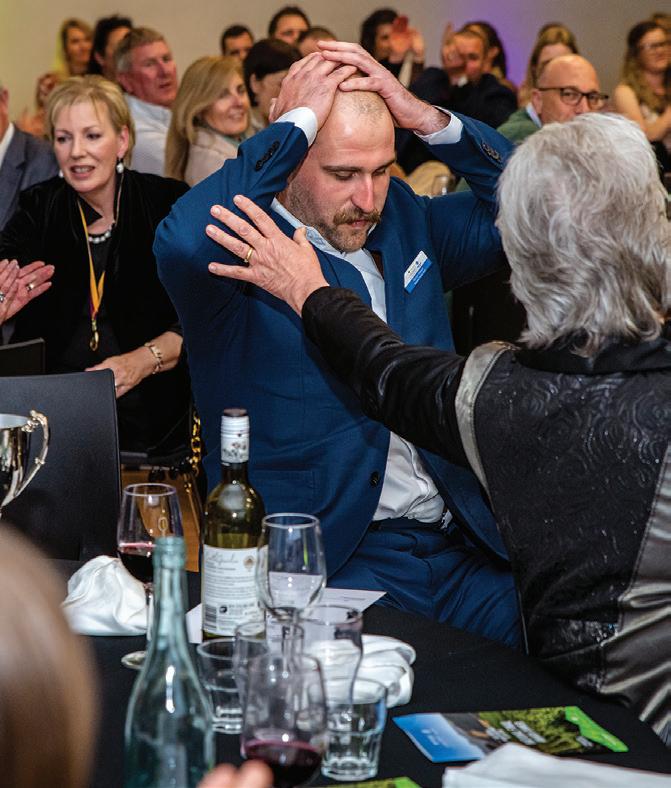

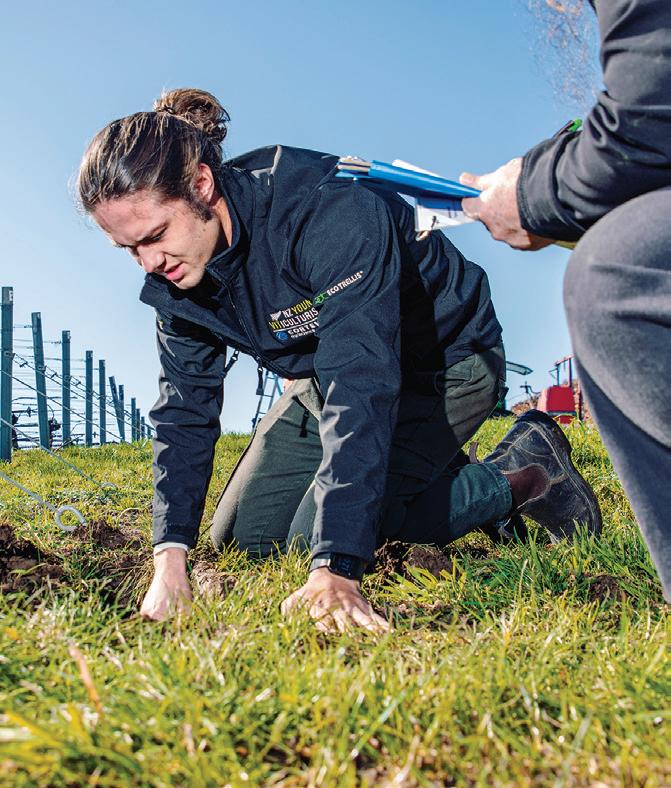

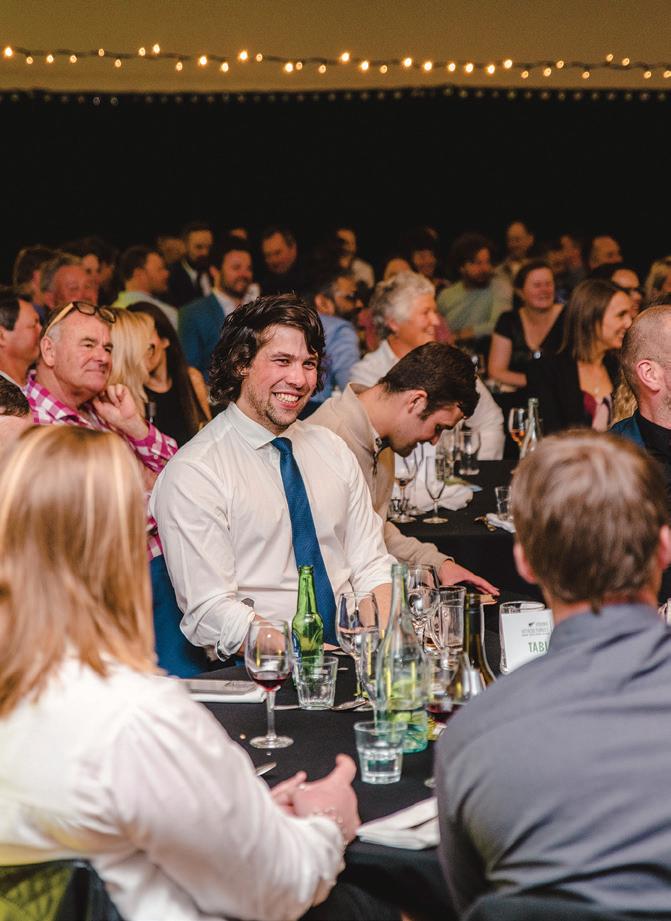
The ability to follow her fruit from vineyard to winery is just one of the things Nina Downer loves about working with a smaller producer. The 2022 Central Otago Corteva Young Viticulturist of the Year began her wine career with Dry River Wines in the Wairarapa before moving to Felton Road in Bannockburn. Both companies are organic and biodynamic, which she loves. “I think it’s really good giving back to the environment. I really enjoy that part of my job and I also love the smaller work environment,” Nina says. “You get to know everyone at work really well and it’s such a positive working environment to be in.”
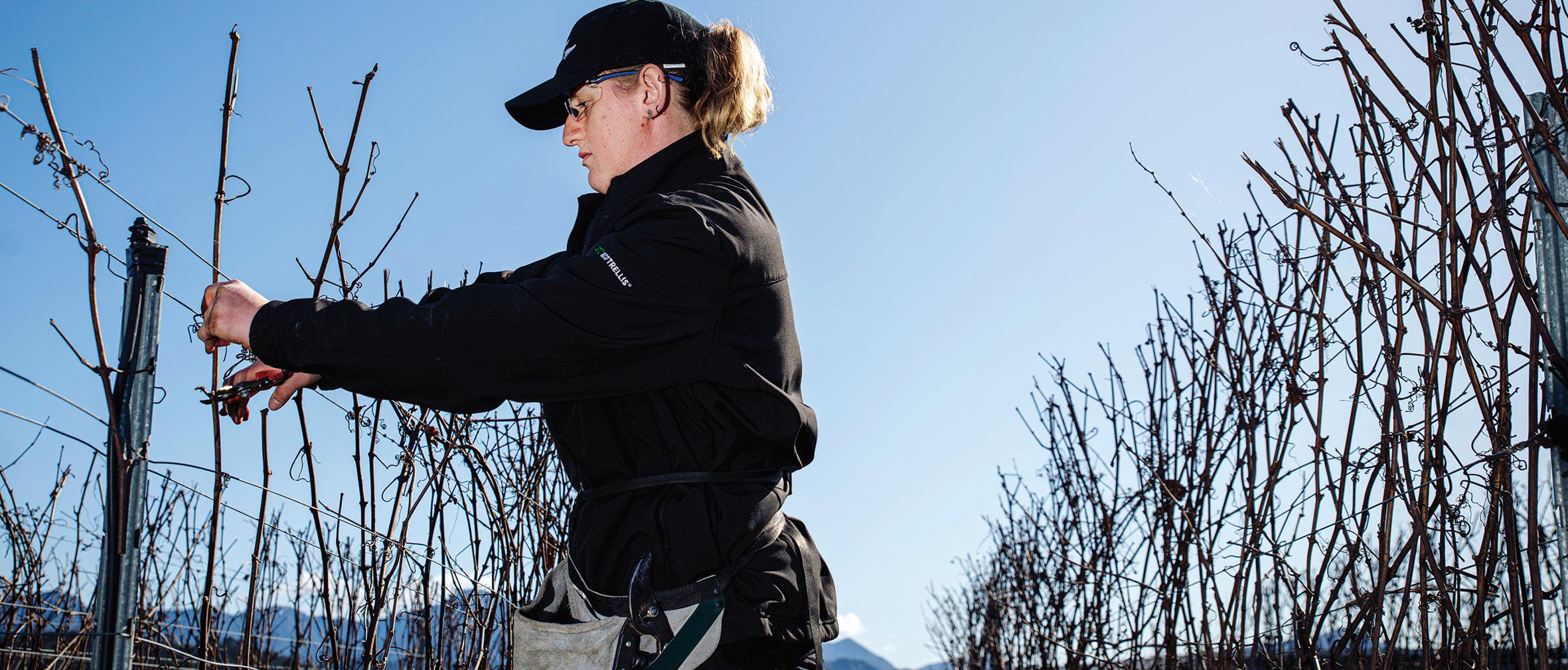
Nina worked in the vines and the winery at Dry River, and the 2022 vintage at Felton Road also saw her cross the line, putting up her hand to help when they lost a cellar hand. “It was really rewarding to see the grapes that I grew over the summer. To
follow them into the winery and taste the ferments.” It gave her a more personal relationship with the fruit and the final product, she says, having gained “more appreciation for the grapes”.
The regional young viticulturist competition on July 21 was Nina’s second event, having come runner up in 2021. She says the competitions have boosted her confidence, and shown her areas to work on, “which I think is a really good opportunity”.
For the speech section this year she suggested using thyme under vines as a non-competitive cover crop that thrives in Central Otago’s arid conditions.
“It actually also has amazing antifungal properties. So, as well as reducing our tractors passes it could also be a goal of reducing fungal sprays,” she says. There was little time to relax after the win this year, with the national competition held hard on
its heels in Marlborough on August 30 (see page 53).
Nina grew up on a Taranaki dairy farm and planned to be a vet, until the prospect of euthanising animals put her off. She credits a high-school teacher with planting the seed of wine industry work in her mind. “He said if he could ever change his career, he would get into viticulture… I researched it and thought, ‘why not?’”
When she was 16 the family moved to the Wairarapa, where she completed school and then headed straight to Lincoln University for a degree in winemaking and viticulture, before returning to the Wairarapa for her first three years in the industry.
University gave her the theory and understanding of how things work, “but I think you get a moment where everything clicks into place when you go out and do it physically,” she says. “It aligns the dots”.





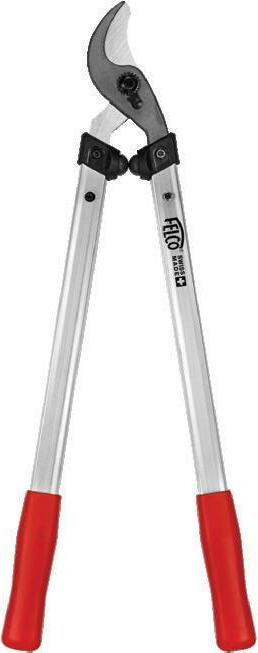
A trip to a Hawke’s Bay winery with his wine-loving father was enough to convince Kevin Wang to enrol in the Bachelor of Viticulture and Wine Science at EIT. Born and raised in Beijing, Kevin and his twin sister Helen moved to New Zealand as teenagers, to attend school in Auckland and then Hawke’s Bay. Kevin, now 20, says wine is not prominent in the Chinese culture, but the trip to Church Road Winery with his father Ping sparked his interest. “It is a good potential market because there are so many people there. I thought that because I am bilingual it would be to my advantage to study wine here and then bring it back to China one day.”
Kevin enrolled in the degree programme in 2020 and is poised to get his degree at the end of this year, with a highlight of his study being the vintage work experience back at Church Road Winery. Recently Kevin featured in a marketing campaign by Education New Zealand, the government agency dedicated to helping Aotearoa realise the social, cultural and economic benefits of international education. “I was really surprised to be asked to represent China in the marketing campaign, but I think I am proof that students from China can develop their skills in another country and get involved in the Kiwi culture,” he says. “I feel like being here in New Zealand for six years now has definitely changed the way I think, and it has made me more confident.”
Kevin prefers winemaking to growing “because I am not really a vineyard person”, and enjoys the practical nature of his studies. “Instead of having lectures all day, we do experiments in the lab, make wine in the school winery, as well as taking care of the vines.”
While he is finishing up his degree, Kevin is working part-time at Trinity Hill’s Cellar Door and hopes to continue working there after graduation before heading overseas to gain experience in France and Italy.
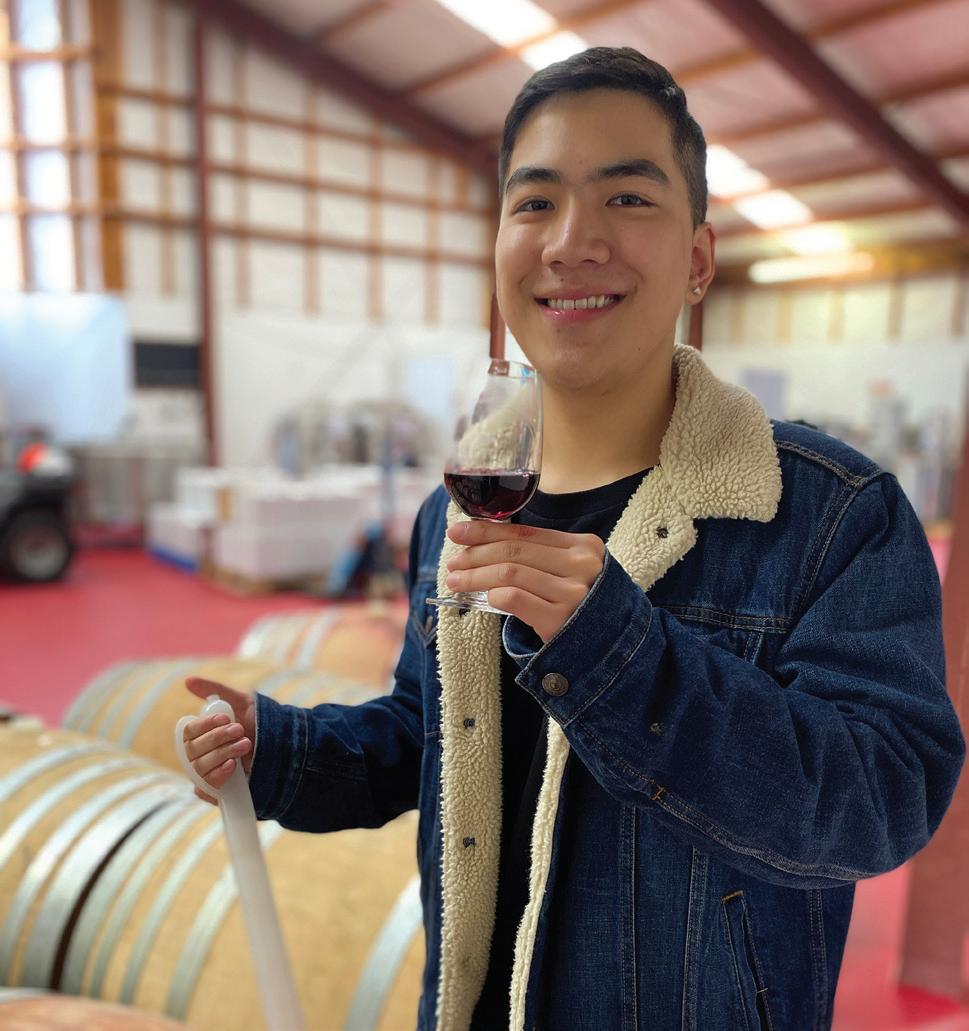
The brown marmorated stink bug is a pest that infests homes, ruins gardens, stinks when crushed, and is almost impossible to get rid of. It could also destroy our fruit and vegetable industries. It’s not in New Zealand yet, and we want to keep it that way. So if you see one, don’t kill it. Catch it, take a photo, and call us on 0800 80 99 66.
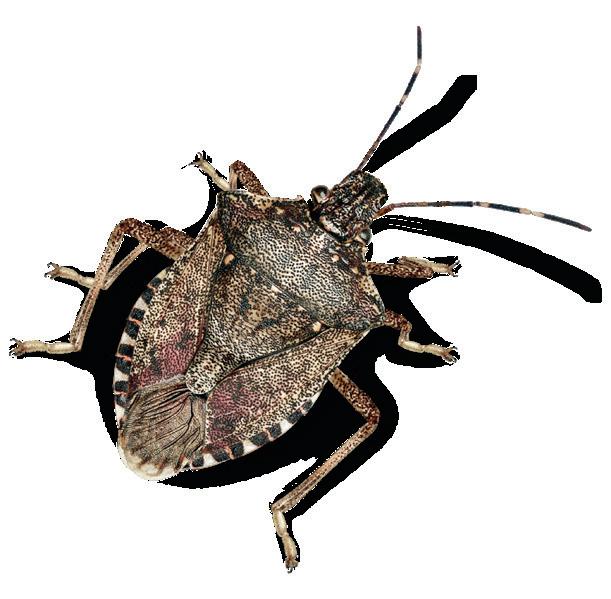
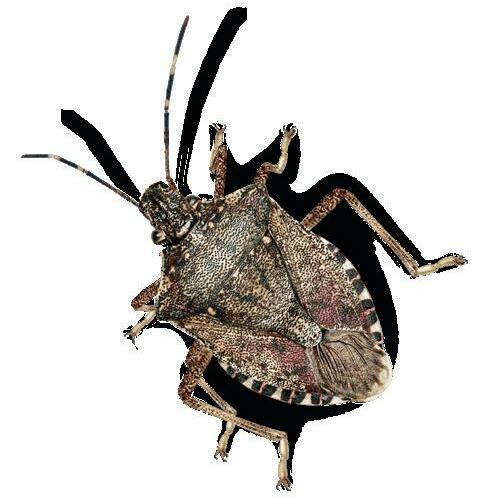


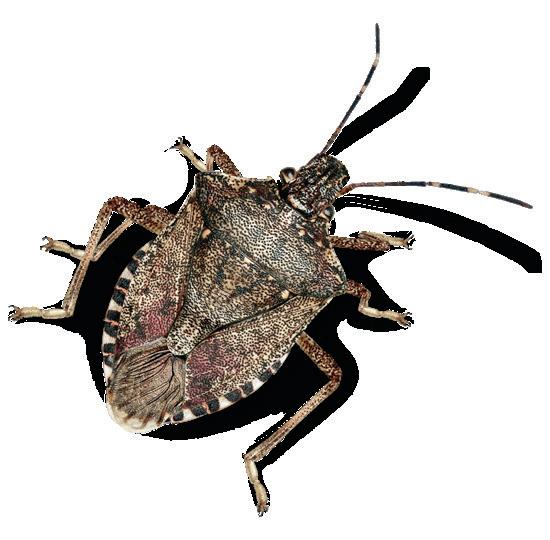
For more information (including how to identify the bug) visit biosecurity.govt.nz/stinkbug


There’s September snow falling in Central Otago as James Dicey explains the wine label he and his brother Matt launched last year. ‘Dicey’ is eponymous of course, but also apt in a region where winegrowing is dicey, with spring snow, year-round frost risk, and the often-fraught business of working with nature. “It’s about riskiness and unreliability and potential danger,” says the viticulturist.
Eponymous, apt, and also somewhat ironic, given James’ own risk averse journey to the wine industry, via a law degree and 10 years as a chartered accountant in New Zealand, Amsterdam and England, busily building a nest egg. “I always thought, looking at how much my parents struggled, that I would never be a farmer; not without equity behind me,” says James.
Fortunately for Central Otago’s wine industry, a cautiously circuitous route made James a steady and skilled set of hands when he eventually returned to New Zealand and became a force for the region’s wine industry, as grape grower, viticulturist and advocate.

When the Central Otago Winegrowers Association (COWA) presented him with its highest award in August – for ‘Outstanding Services to the Central Otago Wine Industry’ – they talked of his support and representation of the industry at a local and national level over many years. James has put in “countless hours” to ensure the industry has been strongly represented on issues such as local signage policy and district plan changes, while also “relentlessly” campaigning to raise the awareness of spray drift risk to local vineyards. And over recent years there’s been tireless work to help industry navigate the myriad challenges of the Covid-19 pandemic. He has, they say, shown “outstanding leadership and unwavering commitment” to the industry.
James was seven years old in 1977, when his family arrived in New Zealand on a ship from South Africa with $250 to their name and a world of hard work ahead of them. His father Robin grew up in the winegrowing region of Tulbagh and had been actively farming since the age of 18, growing all manner of things, but “grapes
were always his passion”, says James. Robin trained in winemaking and viticulture at Stellenbosch University and was part of a medium-sized grape growing cooperative before his pioneering spirit, or “preparedness to take risks”, promoted him to walk away from the farm says James, commenting
Robin and Margie moved to Cromwell in 1992, when Central Otago’s wine industry was nascent, and Robin became a key player in the development of the region’s vineyards. There were his own projects, including Mt Difficulty, as well as developing and managing vineyards for many others. “He was basically doing what he did in the kiwifruit industry, which was helping people who had an interest in developing land but not the expertise to do it themselves”, says James, noting that a “professional farmer” was just what the region needed. “In the mid-90s there were some passionate people and not a lot of experience around in Central Otago.”
dryly that the surname says it all.
On arrival in New Zealand, Robin become the first viticulturist for Corbans in Tolaga Bay, then leapt into the emerging business of kiwifruit in the Bay of Plenty, planting his own orchard while helping others develop theirs. While in Katikati he helped plant Morton Estate’s vineyards, which explains the Cape Dutch-style building, says James.
In the late 1980s the Dicey family was on a skiing holiday in Wānaka, when bad weather saw them trade the slopes for an outing on a hovercraft that plied the lake. They got as far as Rippon Vineyard when Robin insisted the vessel land on the shore, before strolling up the hill and introducing himself to Rolfe Mills, says James. “Rolfe is partially responsible for getting us down here.”
Meanwhile, James had already decided that farming was “a mug’s game without money”, and studied law and accounting at university, before joining Deloitte, becoming a chartered accountant and heading abroad. In 2000, he and his artist wife Odelle Morshuis bought a piece of Central Otago land, “by facsimile machine from Skagway, Alaska”, and had Robin plant it in vines in 2002.
Two years later, when Odelle wanted to come home, James decided he had enough equity to join the family business Grape Vision Ltd, which Robin established in 1996. He began work with his father in 2004, then undertook the graduate Diploma in Viticulture and Oenology at Lincoln University, before steadily taking on more of the vineyards. By 2009 Robin was ready
“With a bit of experience behind me I have realised that the wine game in Central Otago is a long one.” James Dicey
to step back from the business and into his shed of cars and trailers; this is, the Dicey website reveals, a family of wine people and petrol heads. He still drives around the vineyards every Sunday to take a look, “and I call on him when I need him”, says James.
Grape Vision is not the only family farming business James jumped into. He and Matt, who was winemaker at Mt Difficulty until last year, established their own wine label Ceres in the early 2000s. There’s a lot in a name, and this one was for the Roman goddess of agriculture, worshipping the land the wines hailed from, as well as the town of Ceres, a hub for Tulbagh. It meant a lot to the brothers, but didn’t take in the market, says James, noting a difficulty in pronouncing it and confusion with an organic brand of the same name. So when Mt Difficulty sold in 2019, they sat down and “made the very difficult decision” to change their brand.
That meant a new name that gives a nod to full family ownership, and to the perilous nature of winegrowing. The brand design also pays homage to the hues of the region, with a palette devised by Odelle, from burnt orange and ochre to shadowed blues and greys, reflecting Central Otago
across the seasons.
The Dicey website talks of James and the vines getting on well. “I have an opinion and I feel compelled to express it. Vines are the same.” That forthrightness – along with the “hugely valuable” skills learned in the corporate world – has yielded results for the region.
In 2006 he began a 15 year stretch on COWA, five of those as Chair (split over two stints) during which he initiated a restructure of the organisation. He has also represented at a national level, sitting on the New Zealand Winegrowers board for four years, and helping start Bragato Research Institute as a founding member.
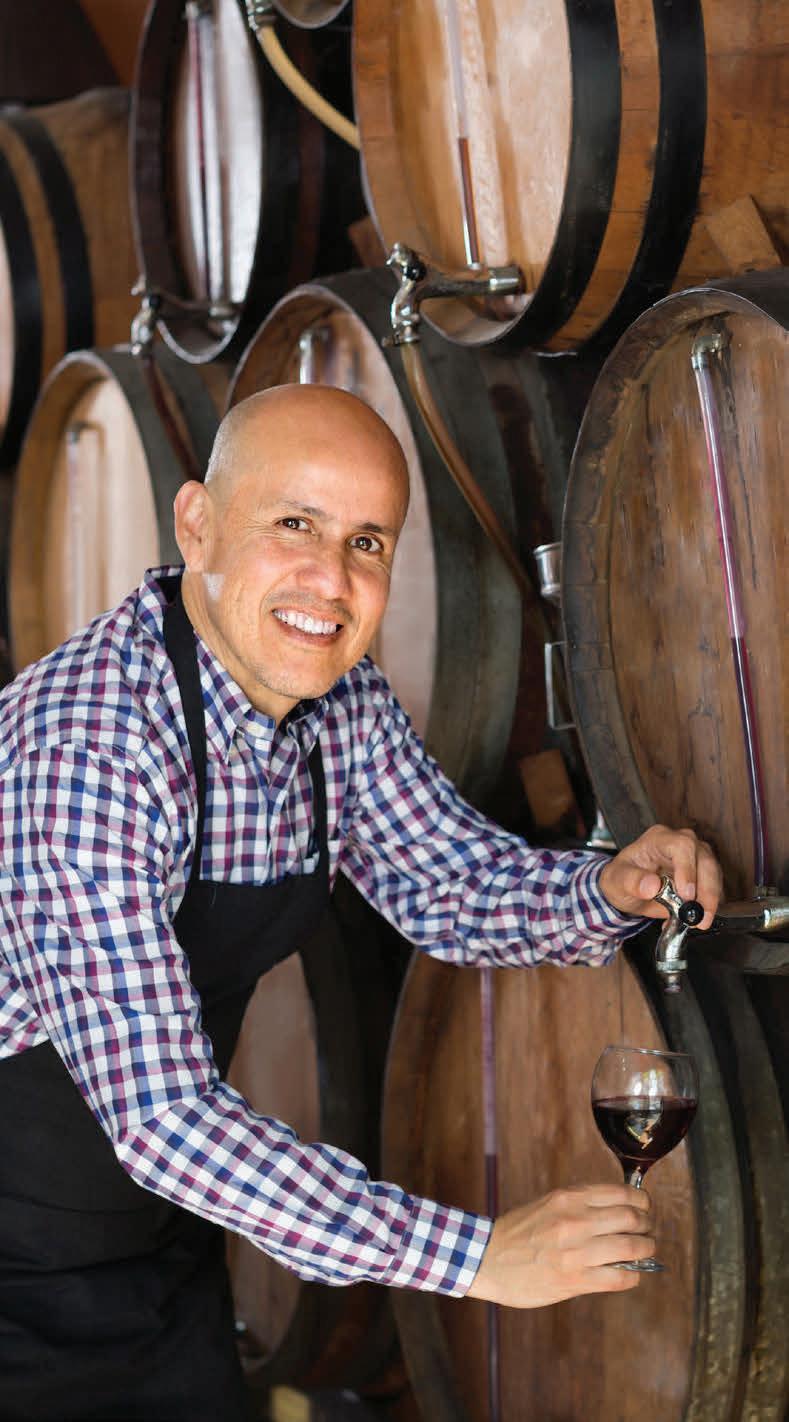
At a barbecue a few years back, the Diceys worked out that between them they had owned, consulted on, or managed half the vineyards in Central Otago, from wellknown brands to more obscure outfits.
Wine - Millton Te Arai Chenin Blanc
Meal - Ceviche
Album - Paul Oakenfold - Tranceport

And over that time they’ve seen the region mature. “It’s a been a long slow hard process from a viticultural perspective… but we understand what we are doing a bit more now,” James says of the industry.
On being presented with the award from COWA, James said it had “been a privilege to have been able to contribute in a small way to the continued rise of Central Otago wine”. In the future he would like to see the region rely less on “Mother Marlborough” when it comes to selling its fruit, instead building strong Central Otago brands, and the reputation of the region as a premium producer. “With a bit of experience behind me I have realised that the wine game in Central Otago is a long one,” he says. “We are building something that future generations will reap the reward from and we will have the enjoyment and satisfaction from creating.”
Book - The Chronicles of Thomas Covenant, Stephen R. Donaldson
Belinda Jackson is a woman of prodigious energy levels, with a big commitment to community and a fine spirit of fun. We meet on a chilly July morning in Blenheim, ahead of a weekend schedule in which Belinda is required at the Marlborough Book Festival as part of her role as Marketing Manager for Lawson’s Dry Hills. She also has a gig to attend at the same event with her Vinyl in the Vines hat on, plus a duty at the Home & Garden show in her role as the newly elected President of Marlborough Riding for the Disabled (RDA).
There’s never a lot of spare time, but Belinda has recently completed a marketing degree from Massey University, walks and mountain bikes in the Wither Hills regularly to keep fit, enjoys a bit of boxing, plus fits in gardening and reading when she can. Oh, and yes, she has also found time to raise twin sons who recently turned 21 and are now at universities in Wellington.
Belinda’s career story began at the age of 18 with a prompt from her father: “So what are you going to do with your life?” Casting around for inspiration, she replied: “Well, wine’s quite interesting.” Possibly wishing to steer things a little, her father bought her a set of luggage for her 19th birthday, gave her £100 and a one-way ticket from home in the United Kingdom to Bordeaux.
And so began a 35-year career in an industry in which “you never stop learning”. Belinda has held many roles in the United Kingdom and New Zealand: wine buyer, writer, educator, and marketing and sales –including the brand management of some ultra-premium brands.
With the arrival of her boys, Belinda became an independent wine consultant to better manage her time. This led to launching two major New Zealand wine events – the Spiegelau International Wine Competition, and the Marlborough Wine Show – both of which she directed. Those years also marked the beginning of an ongoing commitment to the local and national bodies of RDA.
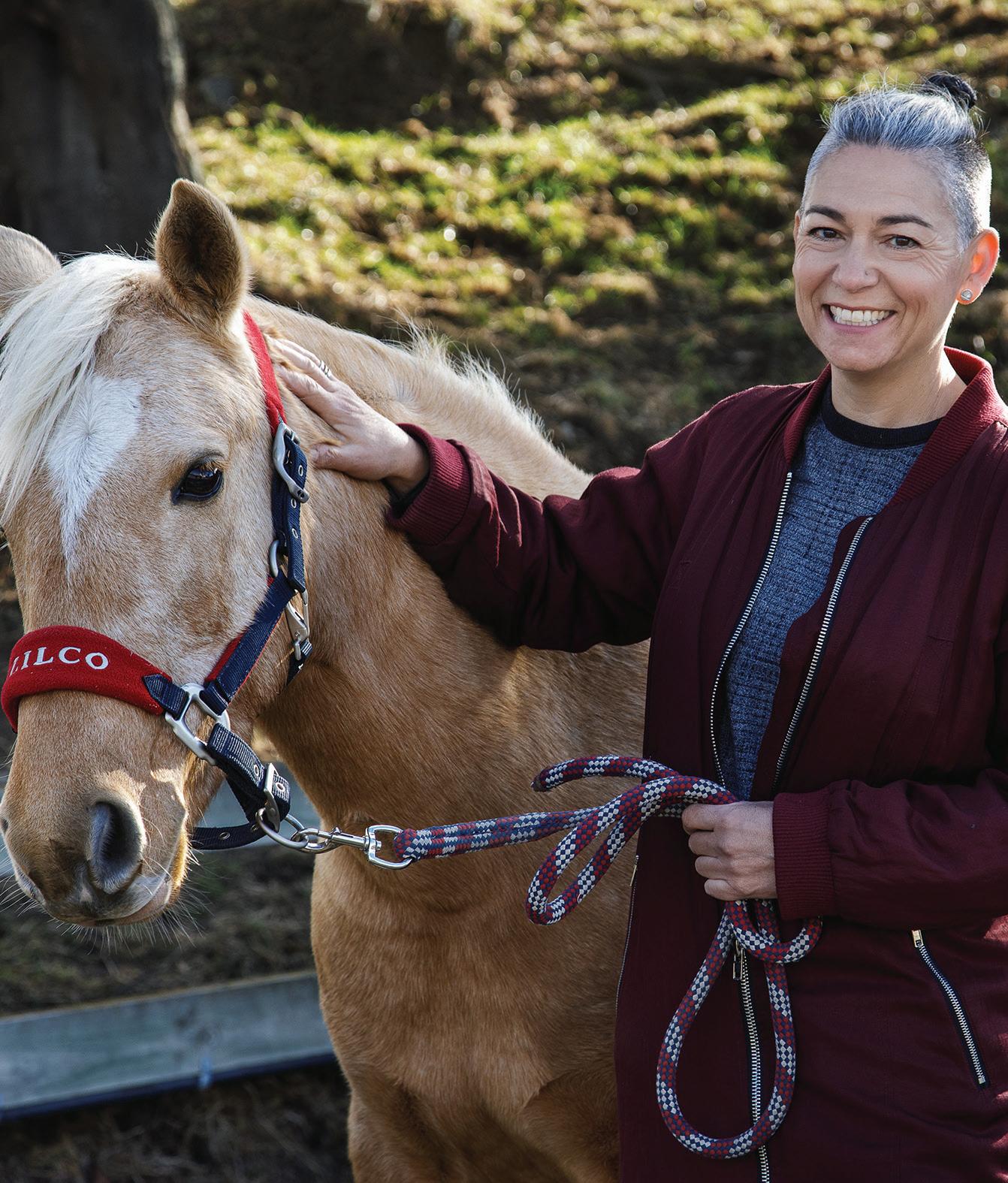
Belinda observes that over the course of her career the marketing of wine has changed considerably. In the early years
it was about introducing people to better quality wines, as well as reducing consumers’ inhibitions and insecurities about their lack of wine knowledge, such as not knowing how to pronounce varietals at the bottle store.
Those were the days in the United Kingdom when there was a house white or a house red on offer, if you were lucky. Belinda was working for Carlsberg Tetley as their wine buyer and enjoyed talking to people about wine and breaking down inhibitions about what was just a drink, albeit a delicious one. Work was put into sourcing a choice of house wines to improve the experience for the consumer, as well as educating bar staff on how to sell and serve them, and generally reducing the intimidation factor associated with buying wine.
Fast forward several decades and there is no shortage of quality wines to choose from. Belinda was appointed as Group
Marketing Manager for Lawson’s Dry Hills in 2014, choosing to join a company with a strong community ethos. Consumers are much more comfortable with wine buying and there is more focus on competition for the dollar. Key concerns for Belinda now are authenticity and integrity of the story behind the production of wines. It’s no longer enough to be a boutique family winery; the brand story must have clarity, consistency and relevance to consumers’ current concerns.
Belinda notes that wine has become no different from other consumer items in respect of the integrity of brands that are sought – consumers are now demanding ethically and environmentally-sound products. “You need your integrity to shine through, and that is more and more of my focus nowadays – telling that story well, in addition to being able to show it,” she says. “We place huge significance on environmental sustainability, and
consumers are very alert to greenwashing, hence the promotion of our independent certifications.” Converting those sustainable ideals into spend at the till is the challenge.
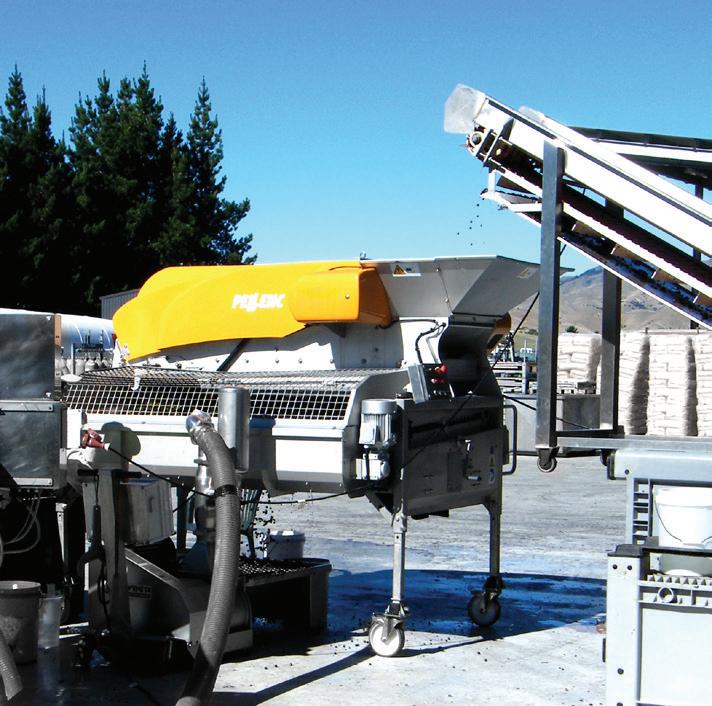

Belinda acknowledges the work of Appellation Marlborough Wine as well as New Zealand Trade & Enterprise in examining the value of the wider Marlborough and New Zealand brand picture and how to protect and grow that, as well as what individual producers do. And while she sees that the wine industry will benefit from reduced taxes when the new European Union trade deal is ratified, it will still be up to individual brands to stand on their own merits.
When asked how she sees her future, Belinda responds that she is very passionate about many not-for-profit enterprises and, when time permits, she can see herself using her love of ‘telling the story’ to help their brands. On her work with RDA, Belinda says she has always been deeply moved by the results the organisation achieves and emphasises the personal rewards this brings. “While it is brilliant for giving, you get back just as much. It’s so tangible, and the work keeps me grounded,” she says. “Horses are incredibly rewarding animals to work

with, and tailored programmes for kids with any kind of disability or special needs can and do make an enormous difference to their quality of life. This has a very positive knock-on effect for families and communities.”
Vinyl in the Vines is one of Belinda’s pet projects, providing an opportunity for fun and community engagement. Initially devised as a marketing tool for Lawson’s Dry Hills – which sports a brilliant outdoor entertaining space – it has now expanded into regular gigs by a team of three local musicians with Belinda ‘corralling’ them into playing at various local venues and events.
When asked what she is currently looking forward to, Belinda replies that her
compression socks have been talking – “in fact yelling” – at her to take them out. So, she is off to the United Kingdom shortly for a combination of holiday and visiting family, with a week of work thrown in. She is excited about getting back out there telling the brand stories, which is what she most loves to do. Bon voyage Belinda.
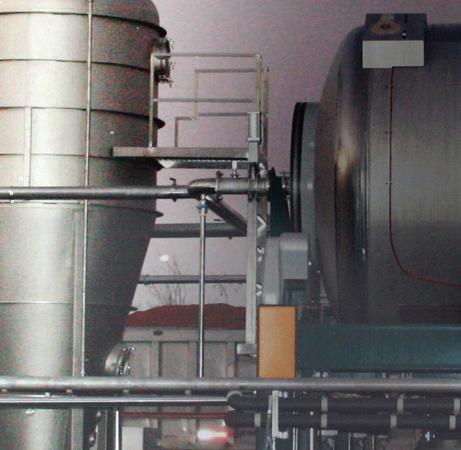
“Consumers are very alert to greenwashing, hence the promotion of our independent certifications.” Belinda Jackson
New Zealand became a more colourful place the moment Jane Skilton arrived in April 2000. Ever since, the vibrant Master of Wine has fostered the next generation of wine lovers, among other things. “Jane is a brilliant teacher, deploying knowledge, humour and an absolute love for her subject to great effect,” says Emma Jenkins MW. “Her deep understanding of wine, personal charm, and ability to distil even the most complex elements of wine into digestible chunks is a winning combination for students of all levels – I know I continue to learn a lot from her.”

New Zealand has Jane’s mum to thank for her move into the wine industry. “I was 19 and taking a break from the ‘UK education system’ when my mum turned off the Hoover and firmly told me ‘you have to get a job now’,” says Jane. “I spotted a job at a local wine retailer and there mastered the art of polishing glassware.” She’s never looked back.
One could argue that London wine merchant La Vigneronne, with its owners Liz and Mike Berry (and cat, Muscat), was the making of Jane. Here she was exposed to an impressive range of wine and encouraged to excel in the industry by genuine wine lovers. “It was a small shop in South Kensington but an absolute treasure trove,” says Jane.
“Liz and her husband offered formal tastings two nights a week and, after I washed up the glassware in the staff bathroom, I was invited to taste through the open collection of wines, including class growths and small parcel wines well out of my price bracket.”
As an MW, Liz encouraged Jane to enrol in the Wine & Spririt Education Trust (WSET). “Liz was generous with her knowledge and taught me that if you train and respect people, they can do anything,” says Jane. “I spent all day carrying cases of wine and all evening reading about wine. And I found it very interesting” The shop was frequented by role models including Pamela Vandyke Price, Serena Sutcliffe and Rosemary George, and Jane recalls thinking “well, they are women who’ve got on and are respected” Her own thirst to secure a place in the wine world led Jane to the WSET higher certificate followed by the diploma.
After leaving La Vigneronne, Jane worked for a retailer group setting up shops to rival the likes of Oddbins. “I loved that they weren’t a one size fits all,” says Jane. “It was the antithesis of a formal wine merchant. I liked how it made wine approachable again.”
Next stop was working with renowned distributor Jasper Morris MW, learning about domaines, selling on premise, and discovering a truly niche area of the wine industry. It was during this time (in 1993) that Jane received her MW accreditation
–earned rather smartly in four years –which fuelled her enthusiasm for wine in a seemingly male dominated industry. “I got the letter I’d passed on the Friday and married Jonathan (Rose) the following Saturday. It was a good week.”
Jane shares the story of meeting her Kiwi husband with the personality she is renowned for. “Jonathan (JR) moved into my shared flat. He cooked and did his own washing so I decided I would pursue him madly,” she says. JR, who was working as a banker in London, charmed Jane by taking her to the classic Kiwi haunt Larry’s Baaaah. “Other people were wooed by trips to Venice. I got Kiwi treats at Larry’s,” says Jane. But a trans-Atlantic move, two children, and a 30-year anniversary on the horizon suggests that these two are a solid pairing. “I still like to moan to JR about New Zealand as it keeps him on his toes, but the truth is that I’ve had a brilliant time living here – working in a vibrant industry that is packed with great people, amazing wines, and vineyards in impossibly beautiful regions.”
It was a swift decision to move to New Zealand. “2000 was tough for bankers –the stress of what would happen when the clock ticked over – and both JR’s parents were needing our support.” They didn’t tell anyone about their decision; “just packed a container, picked up the kids from school, and came here,” says Jane. “I thought about
“Her deep understanding of wine, personal charm and ability to distil even the most complex elements of wine into digestible chunks is a winning combination for students of all levels - I know I continue to learn a lot from her.” Emma Jenkins MW.
the purchase of my last fridge more than the move.”
After settling their young family in Auckland, Jane considered her next endeavour. She’d long wanted to be a wine educator and felt that with 10 years as an MW and 15 years in the industry under her belt she was ready. But as a newcomer to New Zealand, she was careful in navigating the waters. “I remember phoning up Bob (Campbell MW) and saying ‘I’m new but I understand you teach. Can I help? I wash glasses’,” Jane says. “He responded ‘not really but I’d love to meet you, let’s go for lunch’.” A friendship and collaborative fellowship resulted.
Fast-forward 20 years and Jane’s CV is
but I think we are the leading provider for a reason.”
Jane and her team of qualified tutors travel extensively to deliver WSET courses across New Zealand, ensuring that anyone interested has an opportunity to attend.
impressive, having contributed to both national and international wine publications, sat on prestigious judging panels, and been a repeat keynote speaker at conferences and symposiums around the world. She likely surpassed her own expectations as an educator, tutoring WSET students across the globe including Hong Kong, China, Australia, Austria, France, Fiji, and the UK.
Arguably, Jane’s biggest contribution to New Zealand’s wine industry was the establishment of her mobile educator business, the New Zealand School of Wines and Spirits (NZSWS) in 2006. “I feel that I’ve championed WSET formal wine education,” says Jane.

“There are a number of others doing it,
“The course needs to be in person as there is importance in being in a room together, tasting the wine in the same environment, and discussing it.” She loves that classes are filled with the next generation of the wine industry. They’ve chosen to do this. It’s not generational. In Marlborough, as example, 50% of the people aren’t from New Zealand and I love the exchange of information. I walk into the class thinking I know stuff, I’m the teacher, but it’d be stupid not to talk to the class and ask questions. It’s interactive and I enjoy always learning. I also love giving information to people and then watching them make their own decision.”
Jane is grateful to have the opportunity to give back. “It’s full circle,” she says. “But I wouldn’t do it if I didn’t love it.” During
the past 16 years, NZSWS has taught winemakers, viticulturists, cellar door staff, marketers, restaurant owners, bar staff, sommeliers, winery owners and consumers.

“I really love that we have groups of wine professionals tackling the Diploma,” says Jane. “It’s a huge commitment.”
She has focused her attention on NZSWS in recent years, but has also made time for a few other ‘assignments’, including as New Zealand Editor of Gourmet Wine Traveller from mid-2021. Jane has contributed to the magazine for several years and is enjoying putting an editor’s stamp on the publication. “We’ve introduced a monthly New Zealand update column and added a young winemaker and young viticulturist component to our industry awards programme,” says Jane. “It revitalises the competition a bit, shining a spotlight on the ‘ones to watch’.”
As part of the recent Zoom phenomenon, Jane has also kept busy hosting webinars. “I’ve enjoyed the opportunity to promote New Zealand wine through online channels, working with organisations such as Sydney Wine Academy, Cape Wine Guild, New Zealand Winegrowers, and WSET Global,” says Jane. And if that wasn’t enough, Jane was tasked with writing the content to accompany Jancis Robinson’s BBC Maestro course.
Jane is deservedly a household name within the New Zealand wine industry, and it continues to inspire her. “Directness and honesty, their ability to get up and do something new - these are qualities you find in many of those working in the New Zealand wine industry,” she says. And 22 years in, she is almost perfectly happy with her adopted country. “I can only give New Zealand a 9/10. But if prawn cocktail flavoured crisps were on sale here it’d be a 10/10.”
“I spent all day carrying cases of wine and all evening reading about wine.” Jane Skilton
It is hoped a government review of the Recognised Seasonal Employer scheme will halt rogue contractors. But how do its workers currently view the scheme? BRENDON BURNS visited Poutasi village in Samoa to find out.
This summer, the Poutasi Development Trust will source and send nearly 300 workers to New Zealand under the Recognised Seasonal Employer (RSE) scheme, with most to Hawke’s Bay orchards. It will send even more to Australia under that nation’s seasonal migration programme. The RSE scheme began 15 years ago, and the trust has been the biggest private recruiter of Samoan workers. Trust founder and Chair Tuatagaloa Joe
Annandale says workers initially came from his home village, but now they’re selected from all over Samoa. In 2007, about 5,000 RSE workers from nine Pacific countries came to New Zealand, and the cap is currently 16,000.
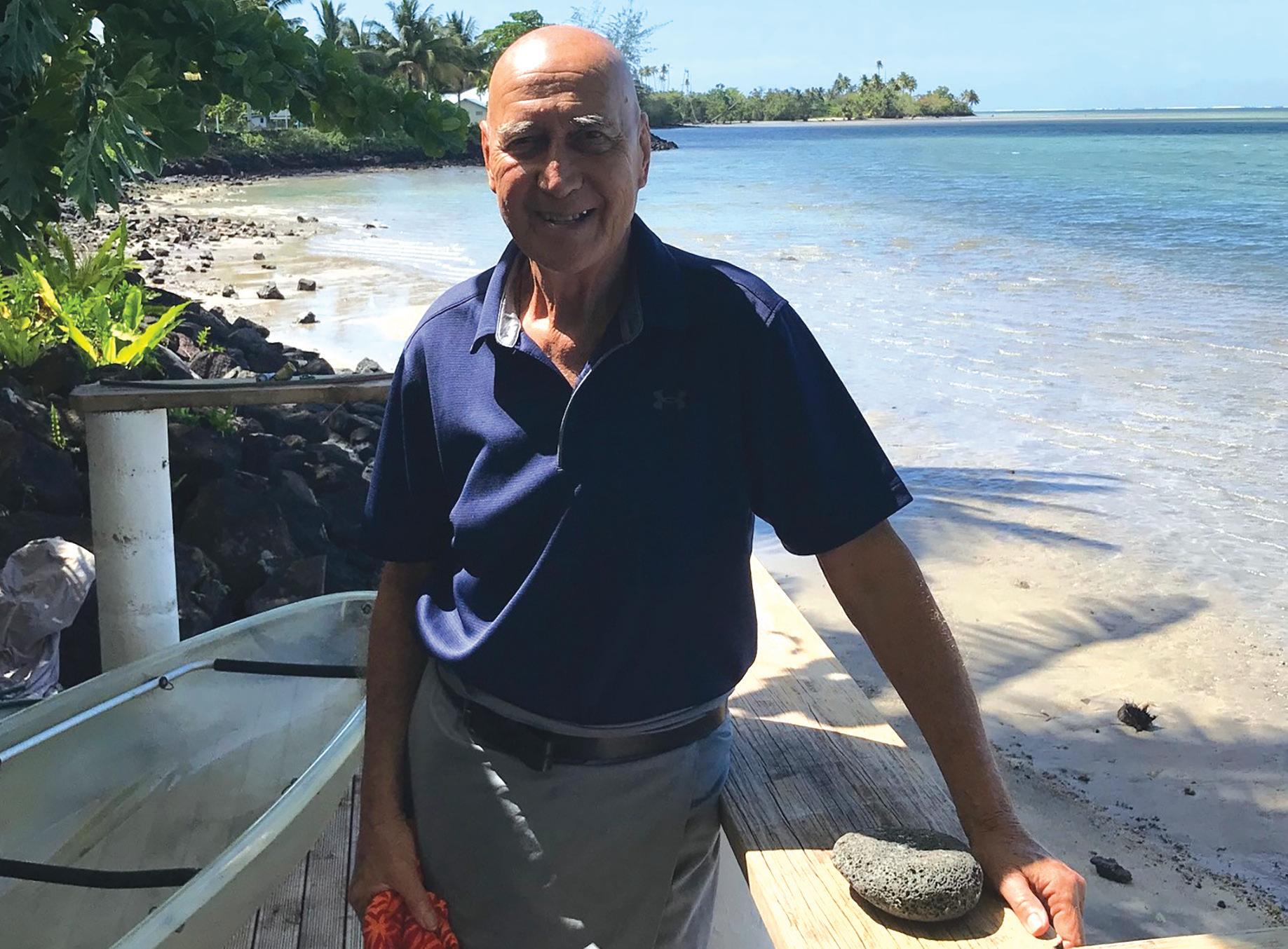
We meet at Poutasi’s Memorial Hall, built
The Labour Inspectorate is investigating a Marlborough labour contractor, amid allegations that seasonal workers have suffered economic exploitation and substandard living conditions. New Zealand Winegrowers Chief Executive Philip Gregan says the industry organisation is “extremely concerned and disappointed” by reports of mistreated Recognised Seasonal Employer (RSE) scheme workers in the horticulture and viticulture industry. “RSE employees must be provided with fair and ethical working conditions; anything less is unacceptable,” he says. “There are very clear requirements for all accredited employers regarding accommodation, pastoral care, and guaranteed minimum earnings, for example. As an industry we expect all members to ensure these are upheld, as a minimum.”
The recent news coverage was not a clear representation of the way the industry cares for its people, “and those few that do not uphold these requirements reflect badly on us all”, he added. Philip welcomes a full review of the RSE scheme, planned since before Covid-19, as “a good opportunity to
check that the standards that are expected of RSE employers are at the right level”. When done right, the RSE scheme is an important labour mobility tool and an essential component of New Zealand’s overall developmental priorities for the Pacific, says a spokesperson for Workplace Relations and Safety Minister Michael Wood, noting the employment opportunities and earnings sent back to workers’ families. It also benefits the horticulture and viticulture industries, directly addressing labour supply challenges. “However, it is clear that experience is not being shared by all,” they say. “All New Zealanders would be disappointed that there are visitors to our country who have had this experience.” Government expects to hear back from the RSE review in the first half of 2023 and the minister has directed officials to also investigate whether amendments to current instructions are required, along with guidance on employment, accommodation and pastoral care standards “to bring practice in line with the expected recommendations”.
Indevin Group Chief Executive Duncanon the site of a former school demolished in the 2009 tsunami, which hit the village particularly hard and which RSE funds have helped rebuild. Some 200 villagers are vigorously practising their cultural performance for Samoa’s 60th anniversary of independence. They arrive in dozens of
McFarlane says accreditation, such as membership with New Zealand Ethical Employers (nzee.nz), may become mandatory for its growers in the future. Indevin and Villa Maria call on more than 700 RSE workers over the pruning season, and Duncan says the viability of the industry would come into question without the scheme. In a letter to growers, he said reports of exploitation were disappointing and frustrating. “I wanted to share with you our commitment and expectations to ensure that no workers are exploited in our supply chain, and the support we need from you.” As well as reiterating expectations that labour suppliers meet their legal and ethical standards Indevin will work with Thornhill Horticultural Contracting, of which it has a 75% stake, to develop best practices for the industry. “By focusing on this issue and setting the standard, we believe we can lift the bar for the industry.”
Vineyard labour contractors who have been found to be in breach of employment obligations in recent years are listed on NZW’s know your contractor page: nzwine.com/know-your-labour-contractor
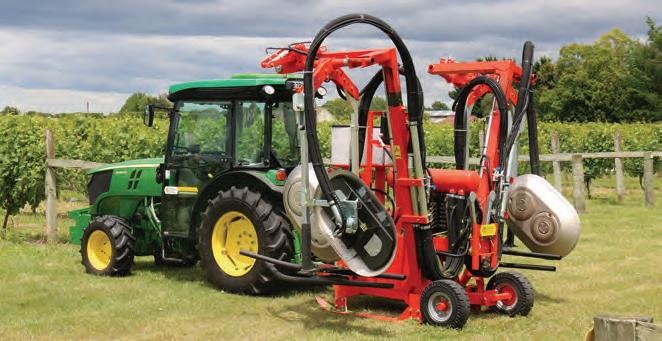


late model Japanese import vehicles. “We call them the RSE cars,” says Tuatagaloa. The performers do a Samoan version of Pokarekare Ana which includes the lines in English: “I love New Zealand. I love Australia.”
Tuatagaloa says the trust inspects to see what’s been done with the money earned. If there’s no new family fale, fishing boat, car, beef cattle or investment in education, then workers stay home. He once suggested to a viticulture conference in Blenheim that workers be limited to three visits; this was strongly resisted by orchardists and grape growers who wanted experienced workers returning.
There’s no shortage of initial recruits in Samoa. Several thousand students finish school each year in an economy with few paying jobs. Tourism – second only to RSE and other remittances in Samoa’s economy – is only just starting to recover.
Last year’s change of Samoan government has seen it initiate its own review of the RSE scheme. What began as a way to get the unemployed into work now also recruits police officers, teachers and other public servants.
Other Pacific nations share concerns about losing skills. With its tourism industry rebuilding, Fiji is struggling to retain hospitality workers, particularly after Australia widened its Pacific mobility scheme to include hospitality and aged care staff. New Zealand is now recruiting 12,000 more Pacific workers for our seafood and meat industries, beyond RSE.
Tuatagaloa, who co-founded Samoa’s prestigious Sinalei Reef Resort and Spa, is losing cooks, kitchenhands, and even his electrician and plumber. He’s agreed to them all going; they are earning between NZ$1.80-$3.60 an hour in Samoa when New Zealand’s minimum wage is $21.20. One RSE visit means his staff can come back to build a house or buy a car. “How can you say no?”
One requirement of his departing staff is a commitment to return to the job after their time away. As well as generally higher wages, Australia now offers threeyear contracts concluding with potential residency. The resort has lost two key staff permanently and Tuatagaloa favours New Zealand’s scheme and its six-month terms. “Our people must come back home.”
The trust works with three companies: Johnny Appleseed and Mr Apple based in Hawkes Bay, and JR Orchards in Wairarapa. Most work is in apple orchards, extending to grape pruning and kiwifruit.
“They look after our people very well.”
He’s aware of the reports of rogue contractors and says there can be issues with the standard of accommodation for some Samoan workers recruited by New Zealand contractors. “But you’ve got to look at the bigger picture. They are so grateful for what they are able to earn under the programme.”
He is much more concerned with the welfare of the trust’s workers who go to Australia, with huge numbers sought to work in often remote locations, including under its version of RSE. “That’s where the real challenges are. They don’t run it as well as the New Zealanders.”
Like much Pacific-sourced labour, the trust applies strict rules for its workers while here or in Australia. No alcohol, kava, or nights away from supplied accommodation. Tuatagaloa accepts this creates a clash of cultures when these can be viewed as basic human rights but says RSE workers are removed for months at a time from the disciplines of their own traditions. “Here we have a culture that maintains law and order in the village.”
Matai (chiefs) like Tuatagaloa have much mana and say the churches remain very strong, and that most Samoans don’t have
much money to indulge themselves. “Then from nothing, you put 1,000 tala ($NZ598) a week in their hands. If you put temptation in their way, they’ll fall for it.”
Tuatagaloa often has to resolve issues when a worker from the trust falls foul of the rules. Resident Samoan families are a mixed blessing, with cultural support to RSE workers sometimes offset by offered temptations that breach the requirements signed by every recruit. “I tell my people, be patient. It is only six months. Think of the benefits.”
Auseuga Uti Lagavale has worked in New Zealand under RSE every year since 2013, mostly in Hawke’s Bay apple orchards. Usually, it’s a six-month stint but Auseuga returned home to Poutasi in June after 18 months away, helping meet New Zealand’s critical labour shortage as RSE and backpacker numbers dwindled.
He will now do one more season, at most, as he says being away can create stresses in families. “Sometimes my wife calls asking me to discipline one of the children.” That’s hard at the best of times but imagine doing this over a video or phone link. “It’s very hard for some of our men to be away from their families for six months,” he says, let alone his year and a half.
The reason he has stuck it out so long is stark. As a trained primary school teacher, he was earning NZ$4,200 a year. In a normal RSE season he can bring home about NZ$20,000 as well as sending money home every fortnight. As a supervisor of 100 men, he earns $4 an hour above the base rate of $22 an hour.
Auseuga’s family now has two cars and has completely rebuilt their basic fale. He’s also opening a new takeaway food business built with his RSE savings.
In New Zealand, his men mostly stay in purpose-built accommodation in Hastings with two men to a room. “It’s really warm and there’s a big space for sports. It’s like living in a village.” They pay $130 a week for their rooms, including power, wi-fi, linen and cleaning.
Auseuga’s workers come from all over Samoa and include carpenters and mechanics, but are mostly young men who have left their families’ taro plantations. He says there’s always some who misbehave and need to be disciplined which can extend to being sent home.
He draws on his teaching background and his role as conductor of Poutasi’s cultural group to remind them of where they come from – and where they will soon return.
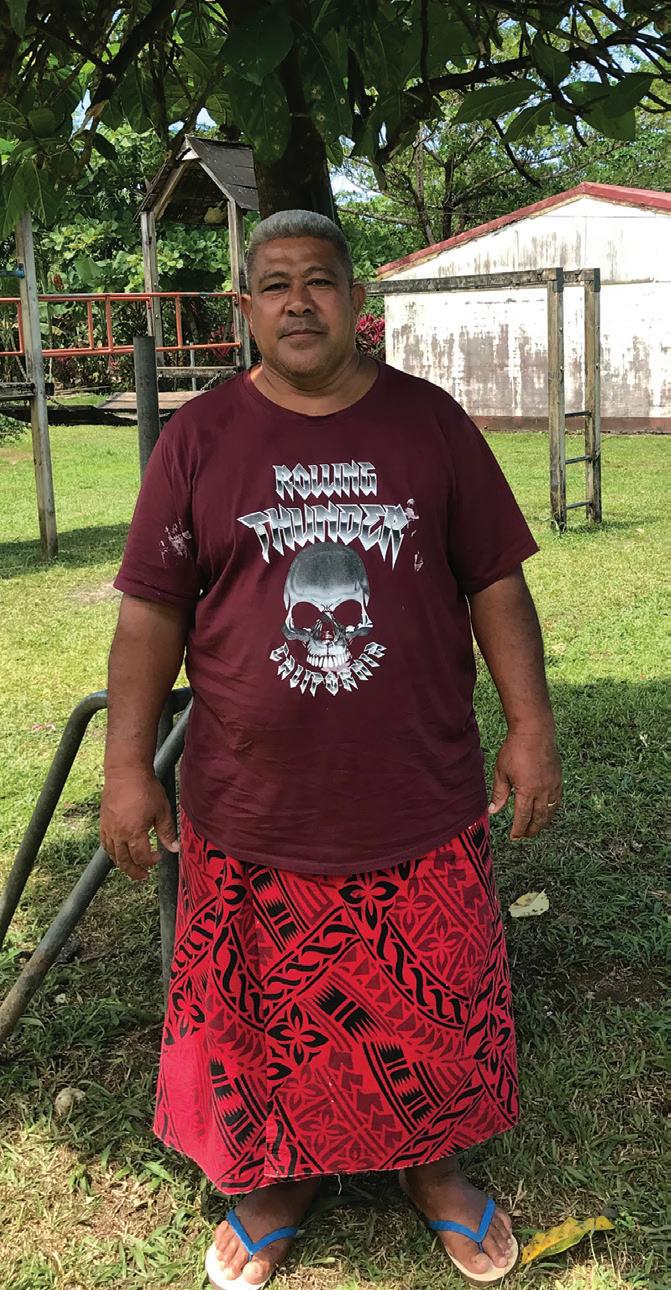
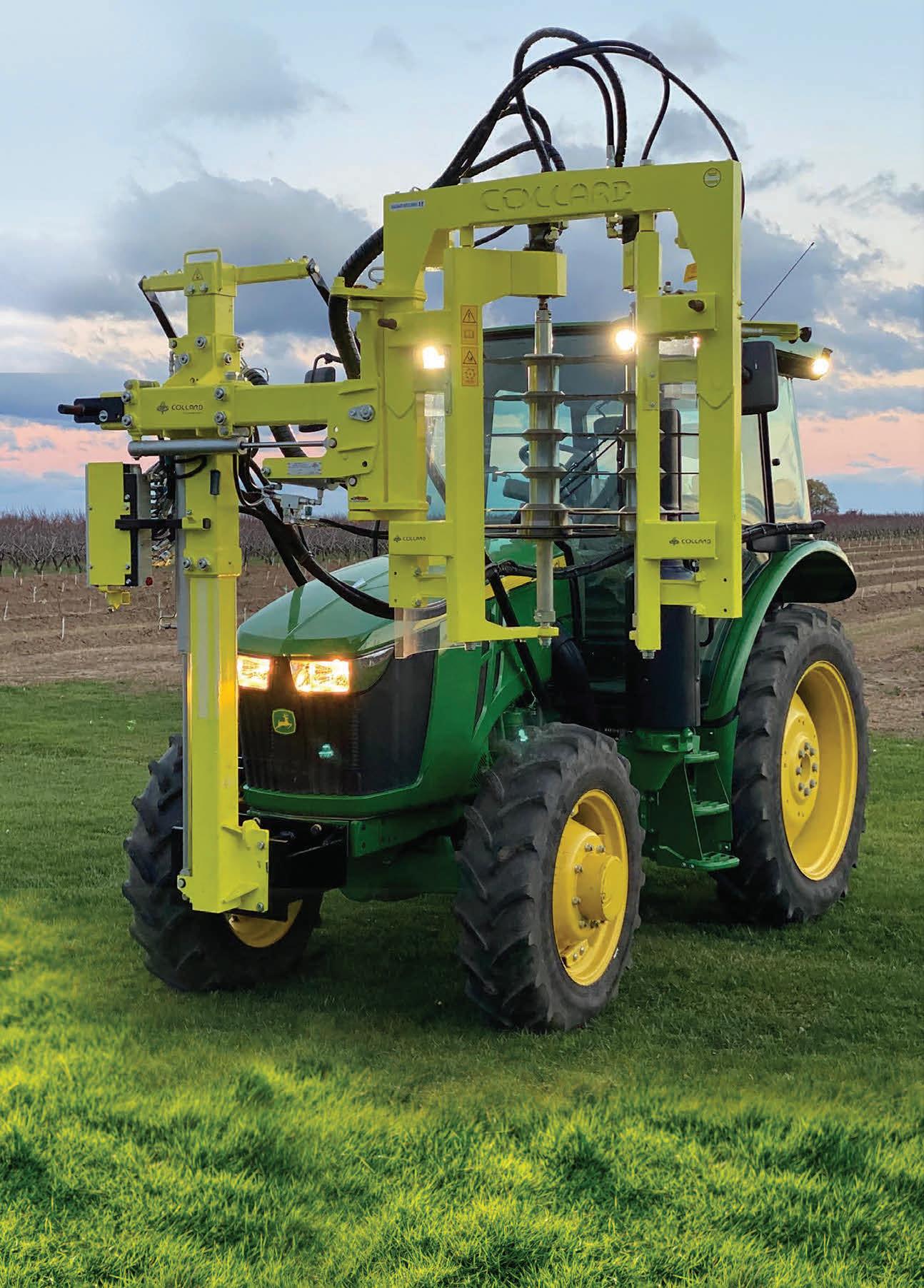

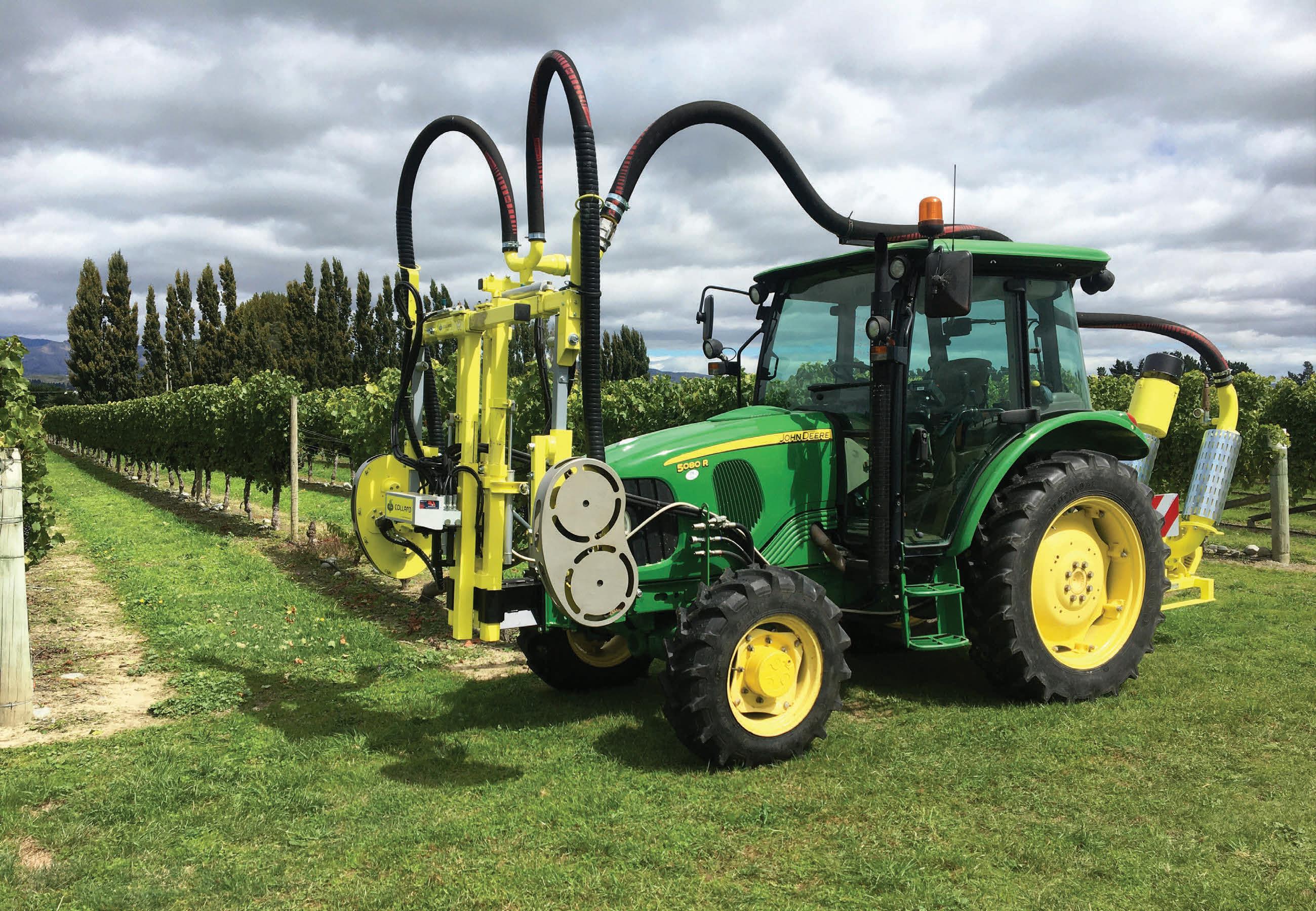
The Recognised Seasonal Employer scheme has been “remarkably successful” in adjusting to challenges over the past 15 years, including those posed by Covid-19, says Professor Richard Bedford.
“Let’s be careful that we don’t forget the really good thinking that underpinned the RSE, that still drives the behaviours of most people in it,” says the migration expert who, with Charlotte Bedford and Heather Nunns, conducted Recognised Seasonal Employer (RSE) scheme Impact
Studies from March 2018 to May 2020, across five of the nine Pacific Island countries involved in the scheme, and six New Zealand host communities.
He was disappointed by recent media coverage of the scheme, and in particular a lack of attention on the impacts of Covid-19, which have seen some RSE workers stranded in New Zealand for nearly three years. “It’s been a huge challenge for some growers and their pastoral care group,” says Richard. That includes finding year-round work for the long-stay employees, and securing their wellbeing. Covid border closures also exacerbated the issue of accommodation, says Richard. “It’s one thing to come and spend three or four months in fairly confined accommodation. It’s a completely different story to spend three years in such accommodation.”
Covid created massive challenges for employers, workers and their families back in the islands. “But the RSE system is always facing competing pressures and challenges and it has been remarkably successful as a system in adjusting to those challenges”, says Richard. He was also disappointed that the coverage did not make any reference to positive initiatives, like establishing Ethical Employers New Zealand “which is a major step forward”. The expert knows more than many about some of the scheme’s shortfalls, including downstream impacts. At a Talanoa Fa’apasifika in Blenheim in June 2021, Richard told attendees there had been some unintended consequences
of the programme, such as the loss of productivity in workers’ home villages, and uneven RSE work opportunities across the islands, meaning “a rebalancing of benefits is required.” The RSE scheme’s focus had been on meeting the demands and expectations of employers, with less attention to workers’ experiences and viewpoints, which poses a risk, “given the scrutiny of international customers on socially sustainable employment practices throughout their supply chains”, said their report on RSE impacts. It recommended a “recalibration of worker conditions”, including that earnings keep pace with increasing living costs and other participation costs.
The report noted that while the RSE has operated in a relatively stable policy environment since it was formed, it is important to ensure it “does not simply remain fit for purpose, but enhances its reputation as a best practice seasonal labour mobility scheme”.
Richard is confident the RSE review currently underway will address the concerns they raised in their report, without losing the strong platform created 15 years ago. The RSE “is definitely not broken,” Richard emphasises. “We have to ensure that coming out of Covid we have a really good adjustment as a result of the review… not a complete reinvention.”
This story ran in the September edition of Winepress and is republished with permission from Wine Marlborough.
Companies applying for Recognised Seasonal Employer (RSE) Status have to submit information that proves they are in a good financial position, have good human resource practices, are committed to training and employing New Zealanders, and have good workplace practices.

“When we are assessing an employer’s application for RSE, we undertake extensive consultation with a range of government agencies, industry training organisations and unions,” says Michael Carley from Immigration New Zealand.
RSE status is valid for two years the first time it is granted, and after two years the employer must apply again and prove they meet the same requirements. If granted again, the status may be granted for a further three years. One employer in the RSE scheme has been taken to the Employment Relations Authority (ERA) whilst they were part of the scheme, and the employer was immediately removed from the scheme, he says. “We are also aware of one employer who was taken to the ERA and then became an RSE employer five years later.” .
New Kusabi® and proven Flute® are powerful fungicide resistance management tools that are all over the threat of powdery mildew.


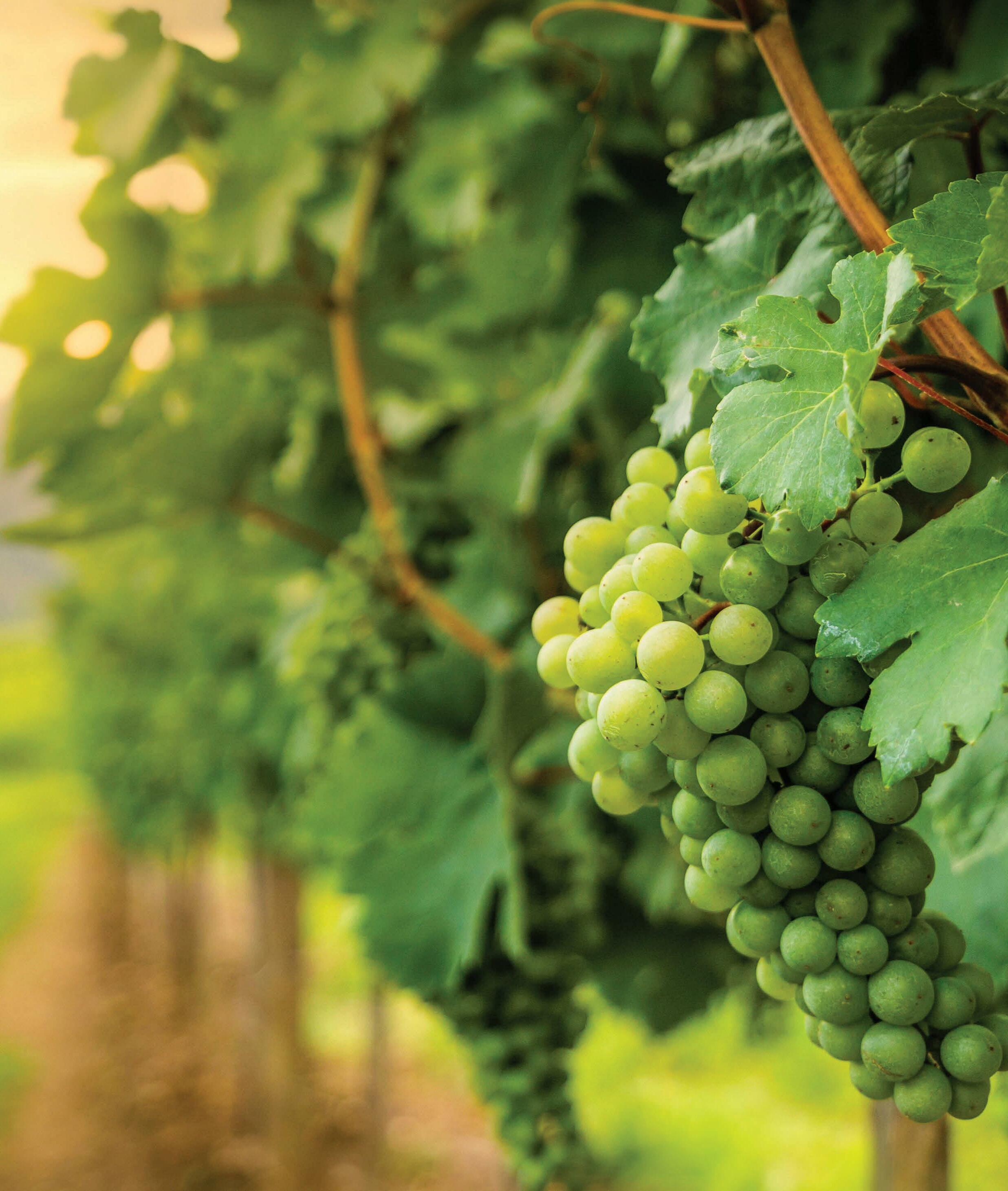
Kusabi and Flute are strong resistance management guardians that enable robust disease management programmes. Flute acts at five critical stages of the powdery mildew lifecycle. UPL’s newest addition to their fungicide toolbox, Kusabi, halts lesion formation and sporulation using strong translaminar and vapour activity for effective distribution within and on the leaf and bunches.
Talk to your local merchant to find out more.
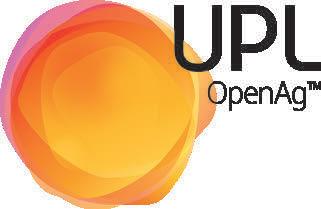

A wine “made with love” will help build the legacy of winemaker Andy Anderson, funding an annual Lincoln University scholarship in his name.
The Pinot Noir, made from grapes sourced from some of Andy’s favourite Central Otago vineyards, has been named ‘Andy’ in honour of the talented winemaker, who died from cancer in 2019, aged 50. “The wine has all been made for love, in the sense that it’s a loving tribute to a legendary winemaker, but also in terms that everything from the grapes to the winemaking, bottling and packaging has been done for free,” says Timbo Deaker, who graduated with Andy from Lincoln University’s Bachelor of Viticulture and Oenology in 1998.
Andy travelled the world and worked vintages abroad before settling in the Waikato and purchasing the Cambridge Fine Wines store with his wife Nikki. He continued working vintages at Invivo & Co, but meeting Takapoto Estate owners Mitch and Kate Plaw, and becoming their winemaker, saw Andy’s dream – of making very good wine, reflective of its terroir – a reality.
Andy entered the first ever vintage of Takapoto Estate 2012 Single Vineyard Pinot Noir, sourced from grapes from the Legends Terrace in Bannockburn, into the International Wine & Spirit Competition (IWSC) held in London in 2017. It won the coveted world Pinot Noir trophy, and Andy
was named New Zealand Wine Producer of the Year on his debut entry. In 2018 he won the Pinot Noir trophy and New Zealand Wine Producer of the Year again, with a Takapoto Estate 2014 Single Vineyard Pinot Noir from grapes he sourced from Gibbston. He also won Silver for a Takapoto Estate 2014 Hawkes Bay Reserve Chardonnay.
The back-to-back wins at what have been described as the Oscars of the wine world were a remarkable feat, says Timbo. “As much as us viticulturists like to think it’s about the vineyard, Andy was able to show with two different wines from two different vintages that the winemaker had a big part to play. His wine was really about texture and structure, and it added a whole new element to Central Otago wine.”
The idea to help foster “other Andys” into bright careers was seeded “over a few wines” and in consultation with the winemaker’s family, says Timbo. All of the proceeds from wine sales will go towards funding a $10,000 scholarship to be offered annually over 10
years from next year for a Third Year Lincoln Student.
Grapes for the wine were grown in the 2020 vintage and came from Matapari, Brennan and Takapoto vineyards in Gibbston. Winemaking was at Brennan and Takapoto and bottling and packaging were donated by Takapoto. Just over 1,500 bottles (125 cases) have been produced.
The plan is to sell 100 cases over two events to be held in Cambridge on Friday November 18, 2022, and Queenstown on November 25, with Andy’s family to purchase the remaining 25 cases.
Applications for the scholarship will be invited soon. “The person who is awarded the scholarship will need to know the Central Otago wine whanau and appellation very well, because Andy would have wanted that,” says Timbo.
For further information about the events and the scholarship, or how to support it through purchasing some wine go to wineforandy.nz

JEAN GRIERSON
In memory of a ‘legendary’ winemaker
“His wine was really about texture and structure, and it added a whole new element to Central Otago wine.” Timbo Deaker
Andy Anderson



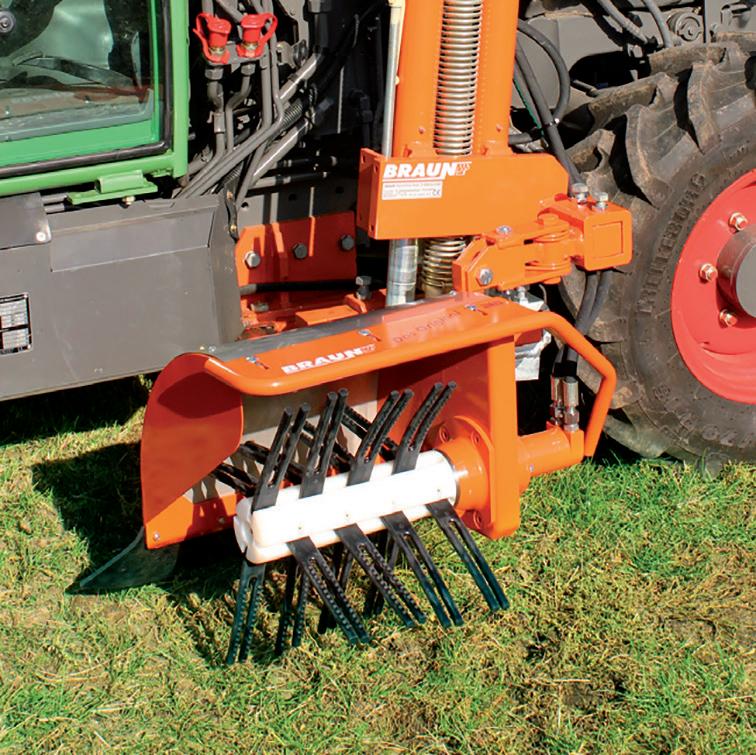

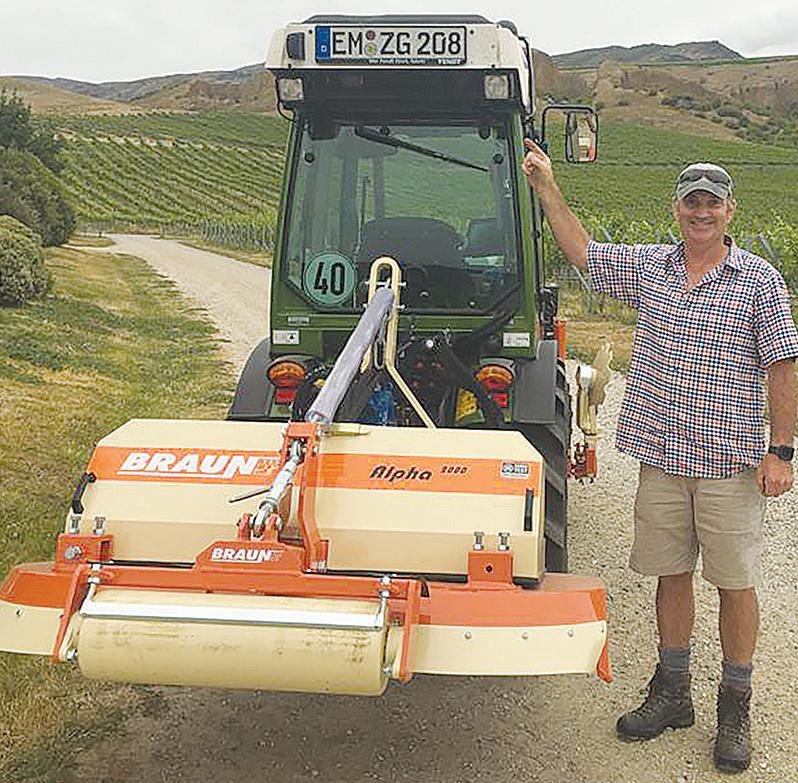



If you dislike Brussels sprouts, grapefruit juice and broccoli, and are a fussy eater when it comes to fruit and vegetables generally, you may be a supertaster. Research in the US has revealed that around 25% of the population are supertasters, 50% are average tasters and 25% are non-tasters.
The jury is still out on whether super-tasters have the power to impress at wine tasting competitions, but research suggests that they are hypersensitive to tastes such as bitterness. Women are more likely to be supertasters than men, perhaps because bitter foods may potentially harm the foetus during pregnancy.
Super-taster status is an inherited trait. Super-tasters have different tongues to the rest of us (I am assuming that my love of Brussels sprouts indicates that I am not a super-taster). Compared to regular tasters and non-tasters, super-tasters have more round structures on the tongue called fungiform papillae,
so named because they resemble button mushrooms. Fungiform papillae contain the taste buds, which send perceptions of flavour to the brain. You can perform a simple but slightly messy test to determine your tasting status. Using a standard paper punch to punch a hole in a piece of plastic. Rinse your mouth with a full-bodied red wine and place the penetrated plastic near the tip of your tongue. Now get a piece of porous paper – blotting paper is perfect – and take an imprint of the hole. With the help of a magnifying glass, count the larger dots on the imprint. Super-tasters will have more than 30 dots, average tasters 15-30 and nontasters less than 15 dots.
A simpler method of assessing your super-taster skill level is to base it on your love or loathing for Brussels sprouts. Super-tasters physically cringe at the mere mention of sprouts, average tasters are likely to feel ambivalent, while non-tasters may ask for a second helping.
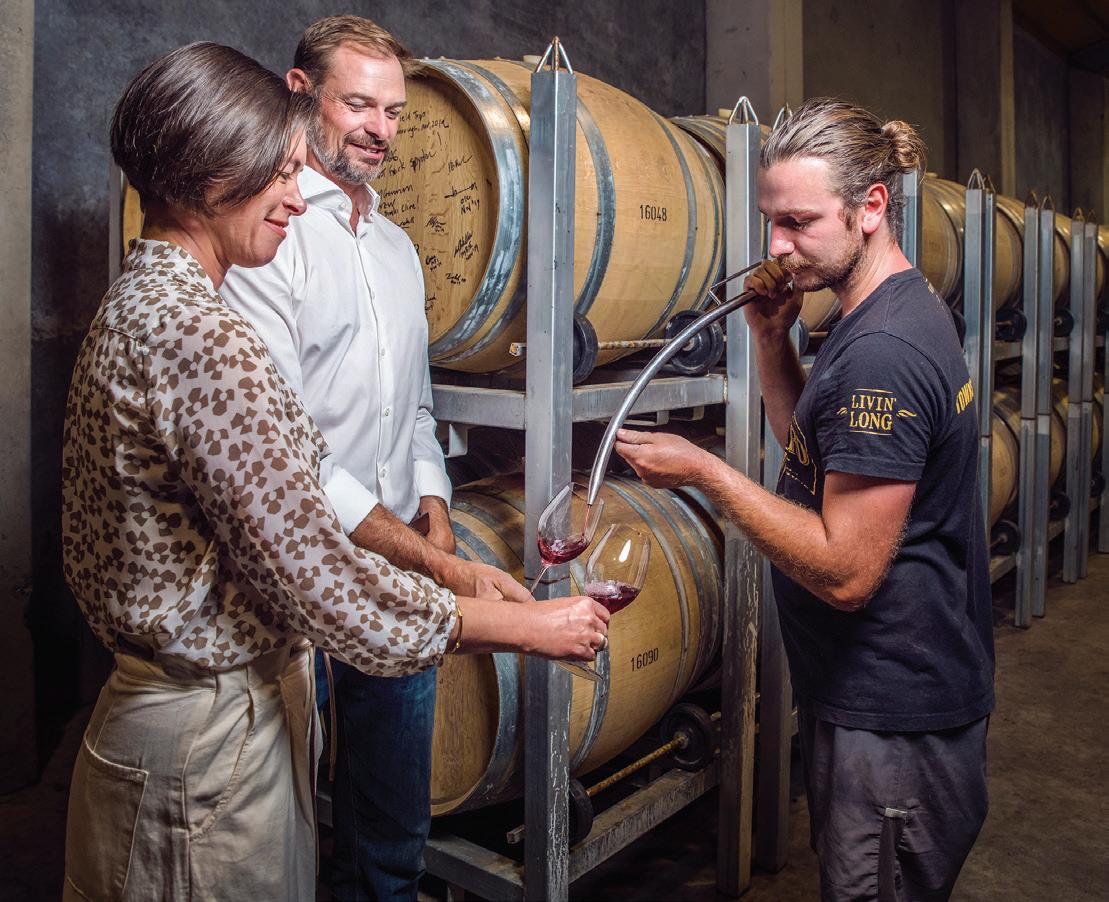
It was 1973. I had recently accepted a position as an accountant for a wine company and had joined a wine club. I knew my Merlot from my Muller-Thurgau. It was time to start a wine cellar. I still remember the first three bottles I bought to keep rather than quaff. Two different vintages of Hardy’s Shiraz and a long-forgotten Chateauneuf-du-Pape were safely tucked up in a cool spot under my Mt Eden villa. One week later some friends dropped by unexpectedly. I didn’t have a drop of wine in the house, except… Next day I surveyed the three empty bottles that I had intended to keep for years. Lessons learned: Always have a few bottles on stand-by in case friends drop around; and don’t make the cellar too accessible.
I bought three robust reds as replacements and stashed them at my parents’ house 20 km away from my own. To build the cellar up I would only allow myself to take out a single bottle if I replaced it with two bottles. To run the cellar down I would take out two bottles for every one added. Lesson learned: Avoid stagnant cellar disease. The more wine you have, the more likely it is that you will keep bottles beyond their ‘best by’ dates. Use cellar software or a simple spreadsheet to keep track of your wine and drink, sell or swap wines before start to decline. An example of a free cellar software programme is cellartracker.com with a large database of wines with ‘drink by’ dates included.
While doing extensive renovations to the basement of my house I had the opportunity to build a 2,000-bottle wine cellar. My initial design was not temperature-controlled because three-quarters of the cellar was underground, and I reasoned that thermal mass would keep the cellar cool. After consulting with experts, however, I went for temperaturecontrol and set the temperature at 14C. Lessons learned: It is expensive to build a dedicated, temperature-controlled wine cellar; and it is expensive to run what is, after all, a large and inefficient fridge. My cellar was less than half full when first built but filled in no time and added to the overall cost, I was very proud of my walk-in cellar.
Eventually I moved house and needed somewhere to store my now depleted stash of wines which had been deliberately reduced to make it more manageable. I purchased two large Transtherm wine cabinets, using a partially underground storage room for the overflow wines. Lessons learned: The cabinets in my basement office are quiet and extremely efficient. It is important to keep cellar records to monitor your wine stocks which can otherwise be difficult to access.
A temperature-controlled wine cellar greatly expands the drinking window of all wines but particularly wines sealed with a cork because they are more vulnerable to fluctuating temperatures. If your wine storage is not temperaturecontrolled, I suggest you buy a maximum/minimum thermometer and monitor cellar temperature. My partially underground, overflow wine storage area appears to be cool in the heat of summer. It is currently 14C but in the past year has dropped to a low of 12C and reached a high of 26C. In my book that is marginal storage conditions.
Against botrytis,

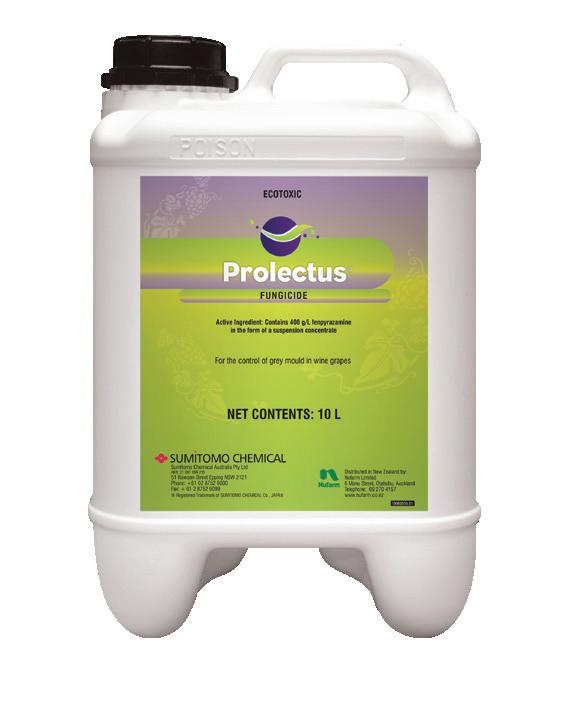
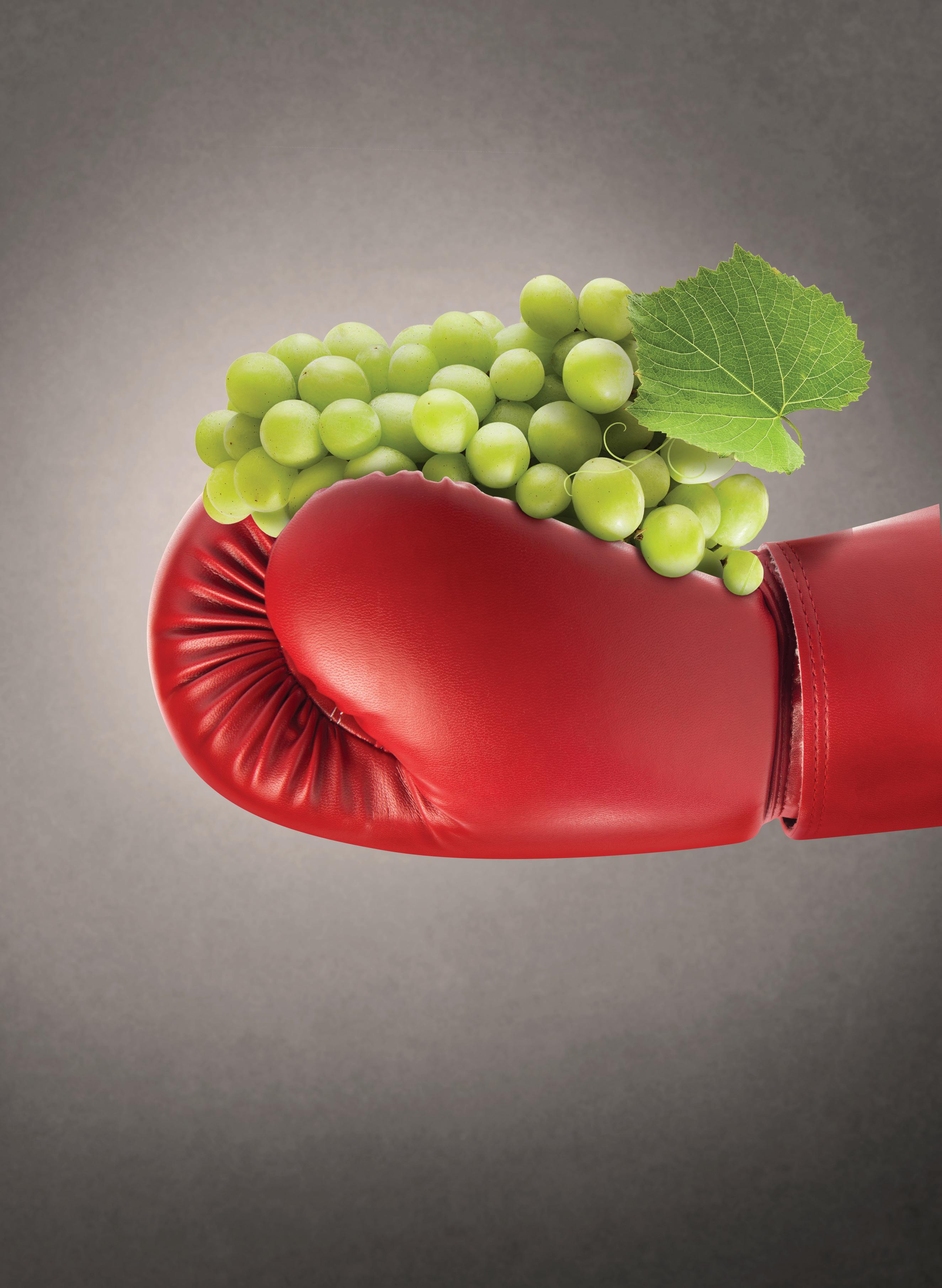
offers
while
takes
now
Contact
local
and
As I write this late afternoon on the last Sunday of August, the village is waking up around me after a post-family luncheon siesta. Our 200-year-old stone house is set in a very narrow pedestrian-only street, in a small village at the base of the Cévennes mountains. The man across the street is practising his violin, dog walkers are stretching their legs, voices are calling to each other between the houses and very soon, when it is a bit cooler, the villagers will start making their evening promenades to catch up with each other.
Our village is surrounded by vines contained by rocky stone walls and the native scrubland called garrigue – a mixture of green oak, juniper bushes, broom, gorse, herbs and wild irises in the spring. While out walking last weekend, I gorged on perfectly ripened blackberries and sweet figs while gathering bay, thyme and rosemary for the lamb roast, and lateseason lavender to hang in the house. The sloes this year have been decimated by the heatwave so the sloe gin will have to wait until next season!
The scents of the garrigue are haunting and once you have discovered them, hard to forget – heady scents of flinty hot rock, volatile oils of the herbs, a freshness from wild mint, prickly juniper, and sometimes overlaid by the musky scent of the wild boars passing through. I am hoping the rains will come after harvest so we can
gather the local girolle mushrooms that spread through the forest at the back of our domain.
I am entering my fifth year in southern France and at the end of this year, my husband Glen and I will be celebrating four years as half of the team that is Terre des 2 Sources in Montoulieu.
The history of this property is as rich as the soil it sits on, with fruit production dating back to Roman times. The lower level of the winery is of Roman origin, as are the wells. Under one well there are three perfectly formed arches, supporting an aqueduct that supplies the well with the underground spring water, called a ‘source’ in French. Our domaine’s name is based on having two underground springs that supply the winery and vines, as well as two sources of inspiration from the Old World and the New World – a nice jeu de mot!
We have about 33 hectares planted and 16 different grape varieties, which are a joy to play with in the winery. When we took over the vineyard, it was typical of many in the south, with lots of missing vines, minimal trellising, unruly canopies, overcultivated inter-rows and with little OM or soil life. It is a slow and expensive journey to bring these vineyards back to life, all while battling historical methods and dogma which often baffle us. I vividly remember when we arrived, the elderly locals in their casquettes muttering about
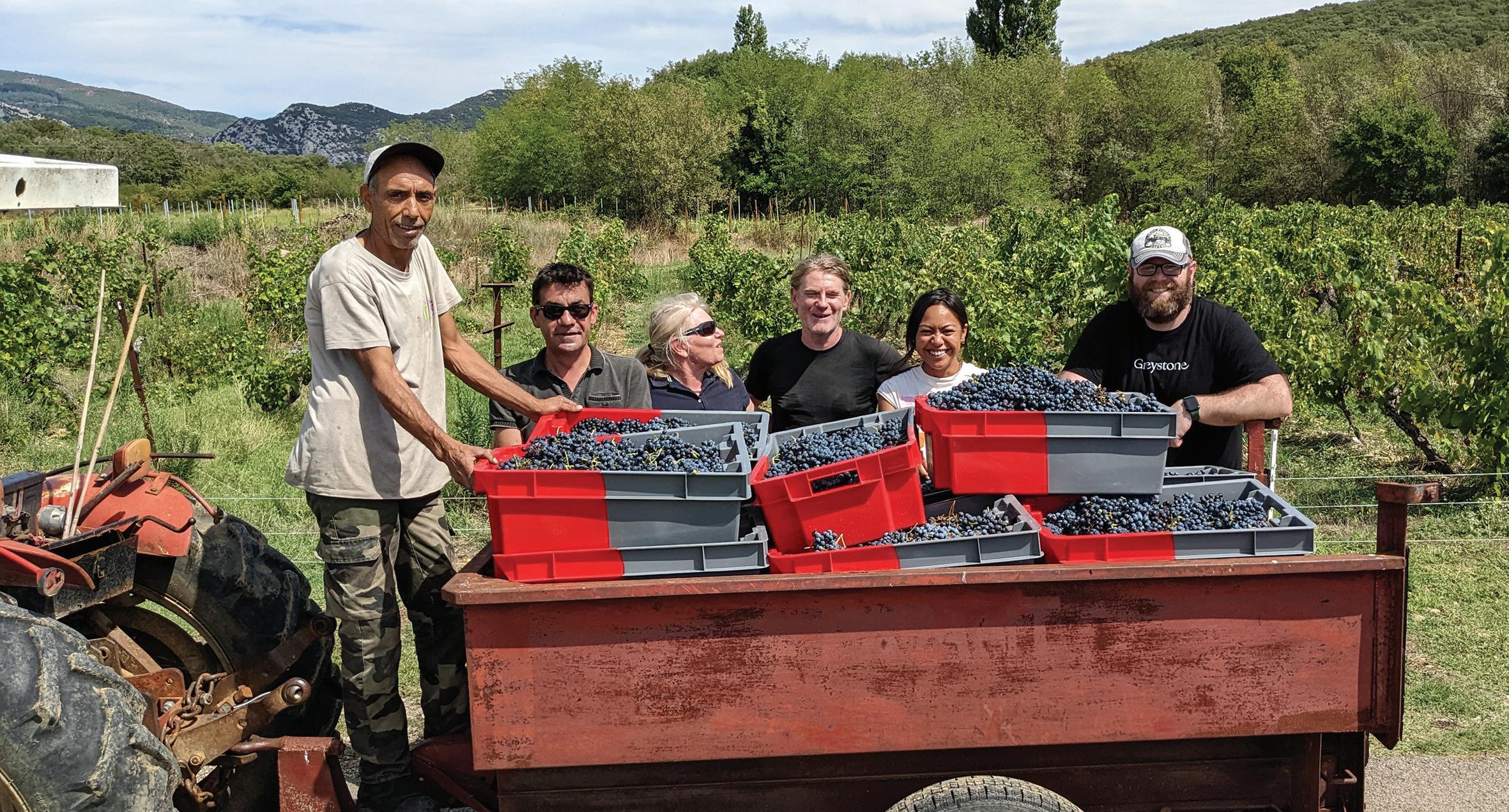
foreign ways with hand-rolled cigarettes dangling from their lips. As is the way, they quickly found something else to talk about and we have stopped turning heads for the wrong reasons!
The differences between the winery here and New Zealand are even starker than in the vineyard. Coming from an industry full of passion, hard workers and professionalism, to an industry where working in the winery is just a job, was a jolt to us. Working for only six months of the year is preferable, the understanding of wine production is minimal for cellar workers, and many of the staff do not drink alcohol for religious reasons. Many wineries employ an oenologist linked to a testing laboratory who will guide the winery through the winemaking process.
The advantages of this are that they do not need to have a technical winemaker, but the disadvantages are numerous –most obviously the lack of education for the winery cellar masters. There were lots of comments when we started sampling leading up to harvest, as wineries generally will wait for a specific date to start harvesting or for their oenologist to tell them when to start. Having said all that, the population here is relaxed, they love to laugh and chat, look incredibly youthful, live in the season and do not chase a materialistic lifestyle. Food for thought, I think.
We love having visitors to our domaine and one of our goals is to provide an environment where local students or new graduates from around the world can come together and learn about winegrowing and wine business, and where we can swap ideas. So far, we have had several French students, some Americans and an English intern. This year, we have someone of Kiwi/ Irish descent – Greystone Wines’ Fergus Winters, who graduated from the Lincoln University graduate diploma programme last year and arrived at the domaine two weeks ago. He has been working at the North Canterbury vineyard and winery for the past five years, mainly in a hospitality/ management role with some stints in the winery.
On 10 September our clients, friends and family are coming for an event to hand harvest some Carignan, which will be foot stomped and fermented in an open-top fermenter in the vineyard. This method is used for one of Greystone’s top wines –the Vineyard Ferment – and I am looking forward to swapping ideas and trying it in situ ourselves.
We’re often asked if we would do it all over – take over an ailing vineyard and


bring it to life. If we had known the world would fall into Covid chaos, that a war and the financial impact of the pandemic would so deeply affect the world economy, that the effects of a changing climate would wipe out 95% of last year’s crop due to frost, and unprecedented heat waves would heavily impact us in 2022, I think we would be crazy to do this.
However, we would have missed out on a life-changing adventure, learning the beauty
that is the French language and living surrounded by such history and culture. I would never pass up the opportunity to work the same land that hundreds of years ago, farmers lived the same seasons, ploughed the same fields and talked, laughed and loved in the same magic that is southern France.
Early start tomorrow to harvest some Viognier, Syrah and Merlot.
Santé!!
Research is important for keeping the wine industry moving forward, driving innovation, improving sustainable industry practice, and minimising the impact of wine production on the environment.
Therefore, I am delighted that Eastern Institute of Technology (EIT)’s School of Viticulture and Wine Science was recently able to host a second successful wine research symposium Advancing Viticulture and Wine Related Research.
Last year we identified an opportunity to bring together academics and industry players from across the sector and held an inaugural symposium, even with our Auckland colleagues still in lockdown. It was such a success, and proved to be a good platform to showcase the talented young emerging researchers and students from across New Zealand, that we decided to make it an annual event.
Organisers aimed to provide a platform for University, Polytechnic and Crown Research Institute researchers working on diverse wine-related research themes. Research communities can be siloed as everyone is beavering away on their own projects. These events bring researchers together and provide them an opportunity to present in a formal setting and gain feedback from each other, as well as wine industry professionals. It introduces young talent, cross pollinates ideas and fosters potential collaboration.
We were keen to make sure our event met the criteria for a recognised research symposium. Researchers interested in being involved were required to submit an abstract for review. The abstract review panel was chaired and organised by Dr Rory Hill, EIT Postgraduate Coordinator for Wine Business and Innovation, and made up of experts from New Zealand and overseas. Because the abstracts had to be peer reviewed to be accepted for the symposium, the researchers achieved a scientific output for the presentation, thereby assisting with future research funding allocations, academic expectations and their career path.
The programme for this year’s symposium was diverse, and researchers from the sector’s key research institutions – University
of Auckland, Lincoln University, Plant & Food Research, Otago Polytechnic and EIT – all presented or had posters on display. The symposium was also available online for those unable to make it to Hawke’s Bay.
Professor Paul Kilmartin, from University of Auckland, was one of two keynote speakers. He presented on pre-fermentation additives that enhance varietal thiols in Pinot Gris, Chardonnay and Sauvignon Blanc wines. His work centred on New Zealand Sauvignon Blanc and how what happens during harvest can change the style of wine.
Professor Hirini Matunga, from Lincoln University, gave the second keynote address and spoke on ‘Whenua – Terroir by another name?’ This was a thought-provoking presentation considering ‘sense of place’ within the context of Aotearoa, encouraging the audience to view wine production and the history of the land used through a cultural-political lens that has up until now been absent.
Discussions during breaks were fruitful and lively and I think the consensus of those who attended was that there is value in repeating this kind of gathering in the future. New Zealand is a small country with limited resources and relatively few research organisations. Working together across the institutions to hold an ongoing event (potentially alternating between the North and South Island) will be beneficial. Having it in a wine-producing area will be crucial for industry feedback, and because groups like HBVine are integral to enabling industry integrated research.
However, any future events will be under a new logo. From 31 October, EIT will join Te Pūkenga – The New Zealand Institute of Skills and Technology, uniting 16 Institutes of Technology and Polytechnics plus nine Industry Training Organisations (ITOs).
The aims of this new organisation are excellent. The focus is on easier collaboration between polytechnics and ITOs that was previously stymied by an outdated funding model that will be overhauled for 2023. There are strong aspirations for student experience, with inclusive learning and equality of access to education, and strengthening industry voice
Sue Blackmoreto ensure appropriacy of training, with a strong push towards on-job education to minimise disruption and maximise impact. These aims are vital for effective education – matching industry needs to appropriate education and having student needs to the forefront.
I am also pleased research has been part of future-focused discussions, particularly with the formation of Te Ohu Whakahaere Rangahau Māori, Research and Postgraduate, a sub-committee of Te Poari Akoranga (the Academic Board of Te Pūkenga).
The progress towards setting up the operating structure of Te Pūkenga has not been smooth, with ongoing issues featuring regularly in media reports. However, progress is happening and I’m confident the new organisation will bring significant benefit in the long term.
The challenges to the New Zealand education sector are multiple, with the absence of international students impacting all areas of the sector financially, and also reducing the interest and diversity students from overseas bring. A nationwide labour shortage also means that domestic students who flooded to education in 2021 may have been able to move straight into employment. All have impacted the bottom line of the 25-member organisations and therefore Te Pūkenga.
So, the outcomes for 2023 in this space are not yet clear. Whilst the details of Te Pūkenga are still being worked out, we can say that its aspirations are things we can all get behind and there is passion to give great practically based, equitable education to New Zealanders.
I encourage the industry to see this as a new era to be involved with to ensure the quality and practicality of education from Level 3 right through to Postgraduate level.
Sue Blackmore is Head of School of EIT’s School of Viticulture and Wine Science.
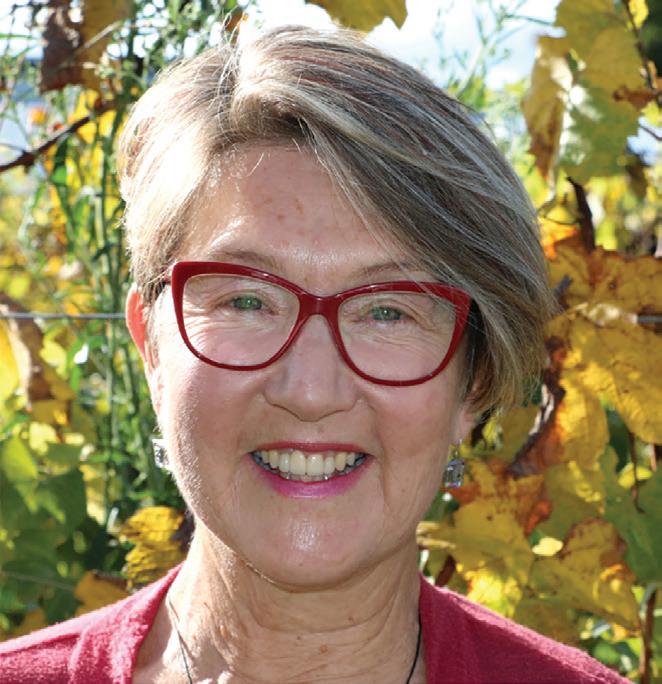


 JAMES MORRISON
JAMES MORRISON
La Niña has been confirmed for this summer for the third consecutive year. We should be well used to the effects of a La Niña summer by now. Sea surface temperatures have remained above average around New Zealand during winter and the warm seas should contribute to milder temperatures through spring and summer. Temperatures are running above average, but the decline in westerlies has seen fewer hot days in the east.
The Southern Annular Mode (SAM) is another big driver of westerlies. When the SAM is in positive mode the westerlies are pulled back towards Antarctica and this has been the case recently. There are a few signs that the SAM may return to a more neutral
position in late October. This could see the westerlies return for a time in November and a few hot days along the east coast of both islands may result.
Why climate change doesn’t necessarily mean less frost News stories about extreme weather events are hitting the headlines almost every day. Our awareness of climate change and how it changes our day-to-day weather is being painfully felt in many places. From heat domes over Canada and heatwaves lasting for weeks in China, to incredible flooding in Pakistan and at times across our corner of the world.
Much study has been undertaken about

how changes in climate will affect our long-term climate drivers and some of the weather we have been used to for the past few decades may become less frequent and weather patterns that previously were irregular may become the new normal.
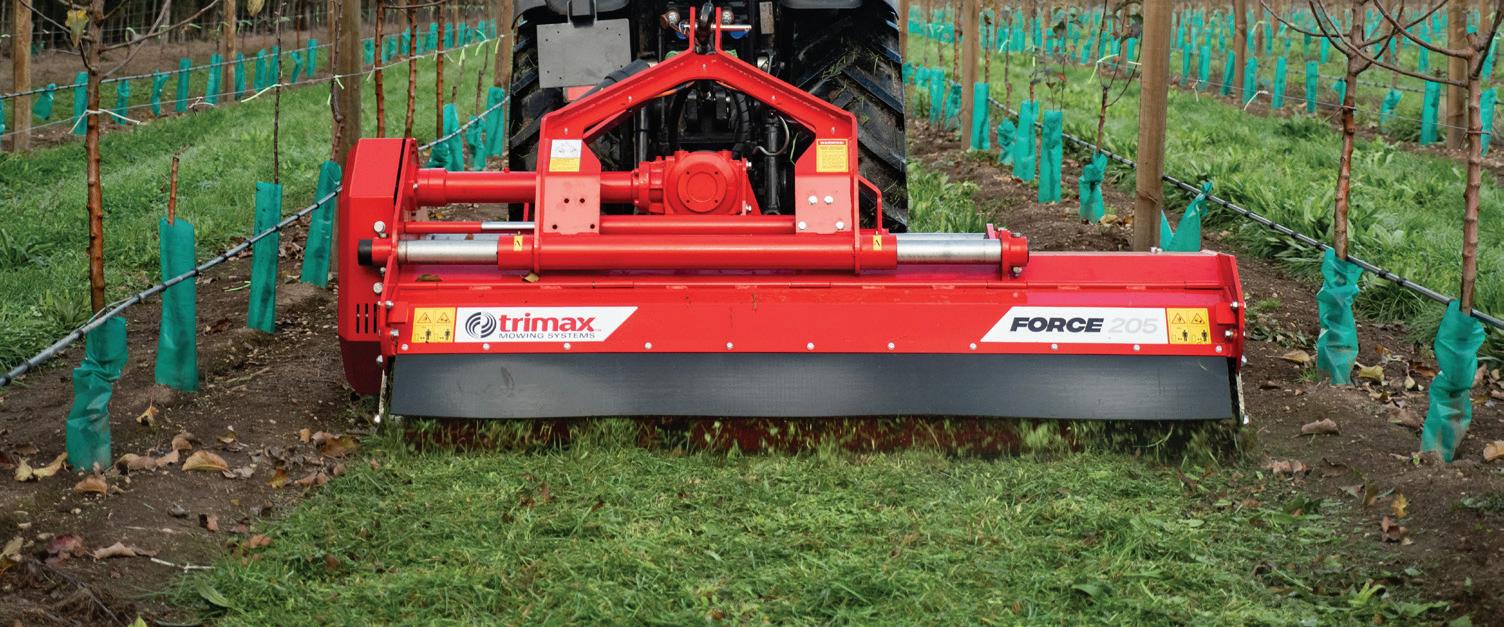
There is a lot of commentary regarding several climate drivers that affect Aotearoa. The Southern Oscillation Index, El Niño, La Niña, Madden-Julian Oscillation, SAM and more recently the Indian Ocean Dipole will be terms that are familiar to many.
La Niña has been getting all the talk for the past couple of years and now it is shaping up to be with us for a third. Previous long periods of La Niña conditions happened in the early 1970s and also in
the late 1990s to early 2000s. More La Niña events are one outcome of climate change that climatologists have been advising will happen.
With an increase in La Niña, we see a reduction in the traditional westerlies that pummel our shores during spring, and we get an increase in northeasterlies. These winds usually pick up in strength from mid-September until early November and are associated with fast moving fronts and strong winds. The air can often be cold enough for a frost, but the ridge of high pressure that moves in behind a front can be fast moving as well, so when forecasting frost, timing of a ridge becomes a critical factor. When the westerlies are supressed, high pressure can last longer and with that comes an increased likelihood of clear, calm conditions. When this is coupled with extra radiational cooling due to the longer nights of early spring, and earlier budburst due to a milder climate, frost risk can increase in many regions.
Outlook for October and November
Gisborne/Hawke’s Bay
It is a bit of a repeat cycle for these east
coast regions. Mean temperatures are expected to remain above average and night-time minimums should lift steadily through late-October and into November. Fewer northwesterlies and an increase in northeasterlies mean there may be fewer extremely warm days. There is a chance that rainfall totals will remain near or above average and warm sea temperatures increase the chance of sub tropical low pressure systems bringing rain. Humidity may be elevated at times also as summer approaches.
Warmer than average temperatures are expected for Wairarapa, and the light northeast flow should continue for some time. There are indications that the SAM may weaken, and this could see northwest winds return at times during November. This could make for a few windy periods across the region during November. Rainfall is likely to remain close to average with a slightly elevated risk of a rain event from the east.
Nelson
Warmer than average temperatures are
likely to continue for Nelson. Night-time temperatures should lift above average with a more persistent northerly airstream. Rainfall totals could be a bit mixed with dry periods broken by moderate rain events. Overall, rainfall should remain close to average for late spring.
Marlborough/North Canterbury

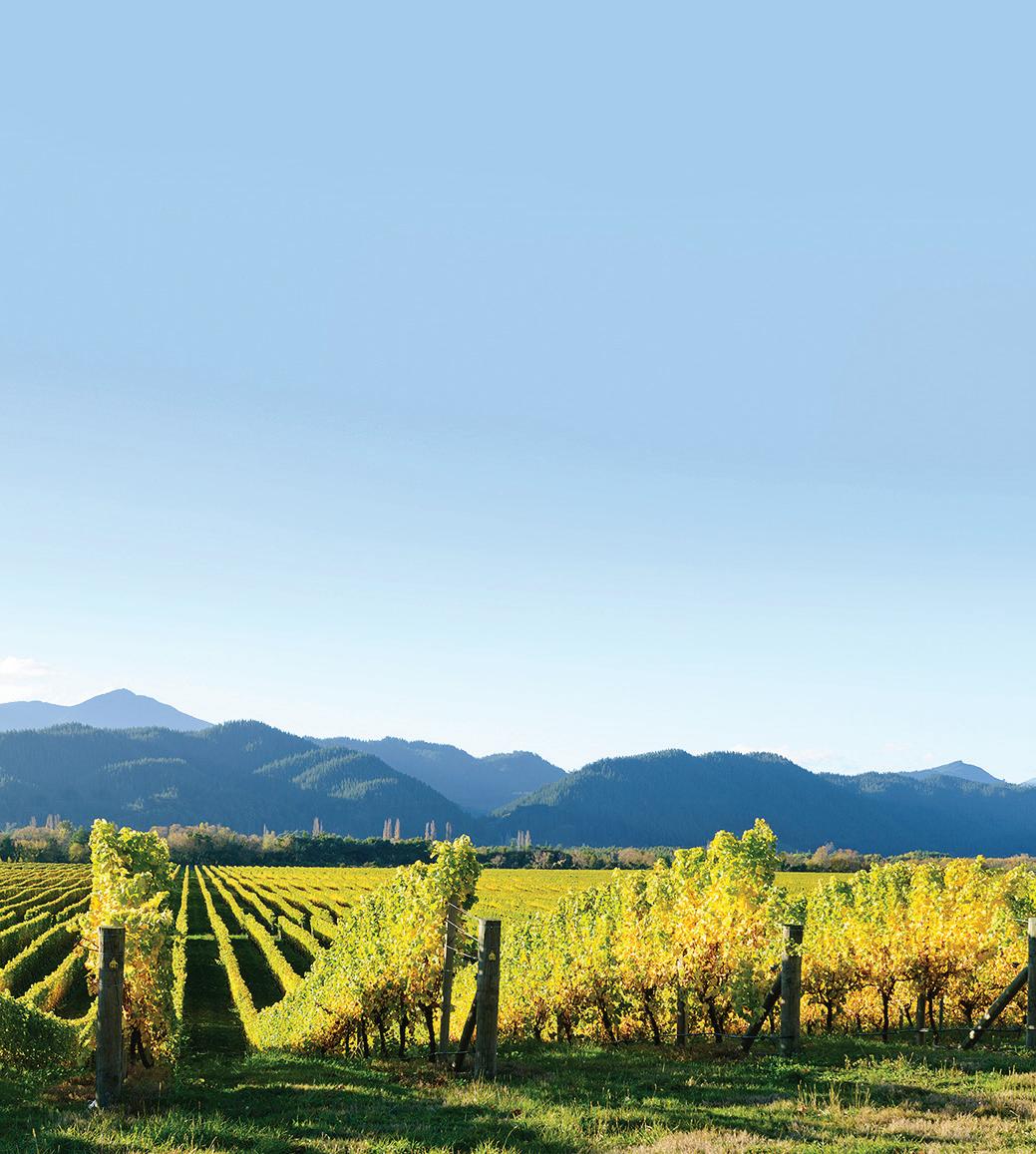
Mean temperatures should continue the national trend and run above average for the remainder of spring. Conditions may become a little unsettled in November if the north westerlies do return late, and there is always a risk of a moderate rain event from the east. Rainfall totals are likely to run close to average for the remainder of spring.
High pressure can bring settled conditions during La Niña for Central Otago, this may be tempered by spring westerlies returning at times from late October and into November. Temperatures are likely to remain above average, but there is a chance that rainfall totals will fall a little below average for the remainder of spring.
James Morrison runs Weatherstation Frost Forecasting Ltd – weatherstation.net.nz
If
South
Methode)
In early 2019, New Zealand wineries offered more than 400 wine tourism experiences across the country. A year later, as Covid-19 caused worldwide chaos and borders shut in response, a focus on supermarket, online sales, and domestic wine tourists emerged instead. Now the borders are opening again, and we are welcoming international tourists back into the country with open arms. However, with tourism and increased border traffic comes increased biosecurity risk.
New Zealand’s wine industry is vulnerable to the introduction of new pests and diseases which tourists can unwittingly bring with them from other countries, yet wine tourism is an integral part of our business. So what are the risks posed by wine tourists, and what can New Zealand wine tourism operators put in place to help mitigate them while still encouraging tourists to visit?
According to the International Visitor Survey (2019), those most likely to visit a winery while visiting New Zealand come from the United Kingdom, the United States, Australia and China. It’s likely
they’ll have some awareness of biosecurity (particularly those from Australia where a very similar biosecurity system is in place). They will have viewed a biosecurity video on the airplane, and passed through risk assessment, x-ray and inspections at the
Pre-Covid, wine tourism had become a significant part of New Zealand’s international tourism offering and was core business for many wineries. International wine tourists visited more regions, spent more money, and stayed longer than average holidaymakers. Close to 800,000 wine tourists visited New Zealand in the 2018-2019 year, spending more than $3 billion. Wine tourism activities offered by New Zealand businesses include cellar door tastings, restaurants, winery and vineyard tours, accommodation, and events such as food and wine festivals, concerts, and fun runs.
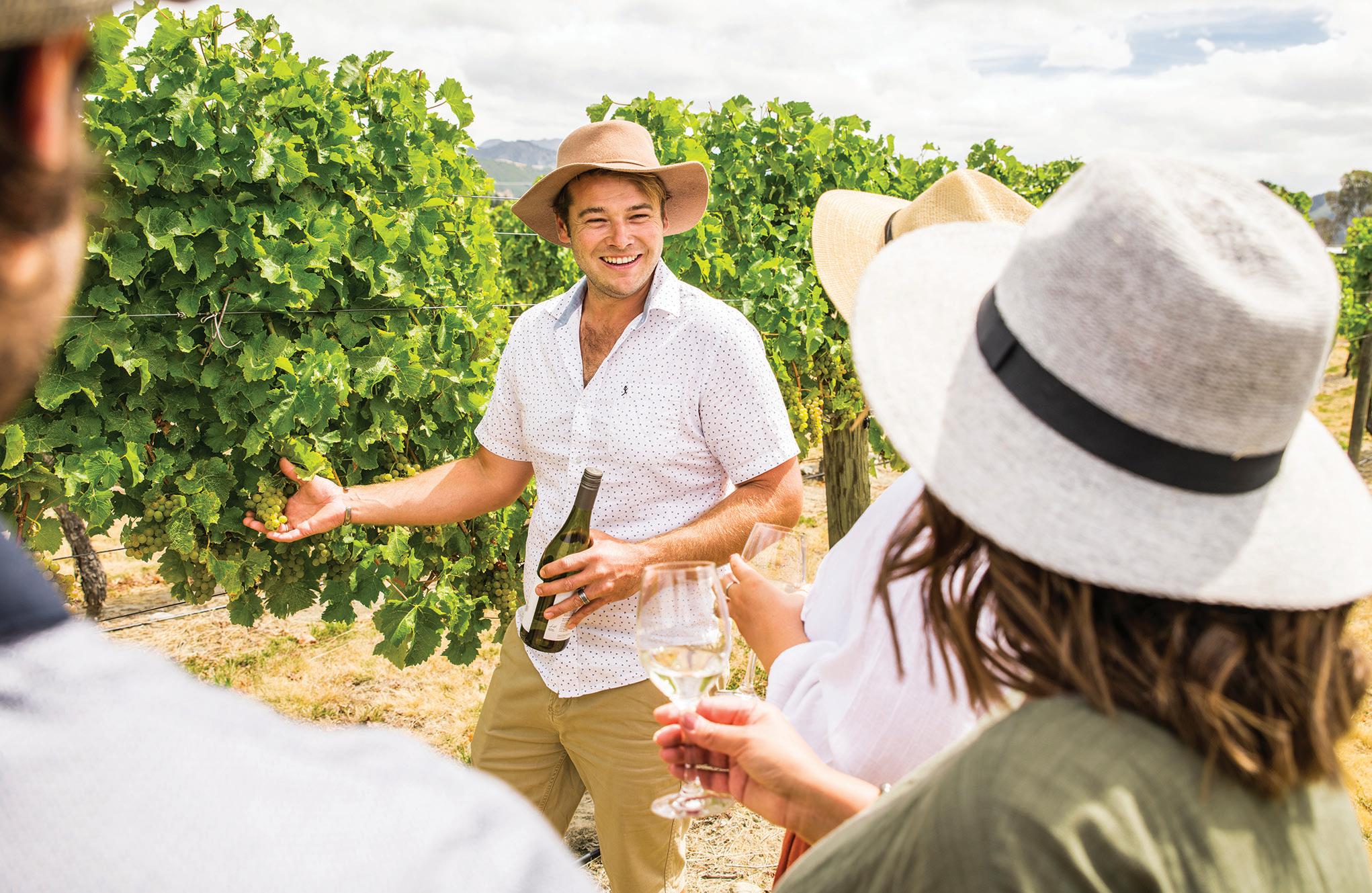
border upon arrival. While the border does a great job at minimising risk, it cannot catch everything, and there’s a chance that hitchhiking pests or diseased seeds or plant material could accompany tourists as they visit wineries and vineyards. It is essential that businesses with a wine or viticulture tourism element know the risks and how to mitigate them. Knowing what to do if a potential biosecurity threat emerges is also important.
Insects such as brown marmorated stink bug (BMSB) can be good hitchhikers, stowing away in people’s clothing, luggage and equipment. BMSB has been intercepted on international passengers and their gear entering New Zealand in many instances –in suitcases, gifts, clothing, and equipment such as tents and children’s strollers. It has even been found in airports, hotel rooms and rental vehicles used by recent arrivals.
Seeds, Soil and Plant Material Seeds and small pieces of plant material are
hard to detect at the border, with some seeds having so little odour even detector dogs struggle to sniff them out. Seeds and viable infected plant material can carry exotic diseases which could damage New Zealand’s horticultural industries, or pose a risk to native biodiversity. Seeds of pest weeds are also easily carried by people’s footwear and clothing, particularly where they’ve used it in rural settings working, tramping or hiking before arriving in New Zealand. Even small amounts of soil contamination can also carry diseasecausing micro-organisms.
While it’s unlikely that vehicles bringing tourists to a vineyard or winery site would carry exotic pests or disease, vehicles can be a key source of spread of existing biosecurity issues between properties and regions.

New Zealand Winegrowers (NZW) recommends all wine tourism operators consider the potential biosecurity risks to their businesses and implement appropriate strategies to help mitigate them. Some basic steps that can be taken are outlined here, but wine tourism operators should also think about the kinds of disruption a significant biosecurity incursion could mean for their business, and develop contingency plans.
If your vineyard allows tourists onsite or hosts events, consider providing designated areas for photos and picnics away from the vine rows (or set aside a specific row where you are happy for this to occur). If you allow access to the vine rows, ask guests to clean their footwear before and after entering the vineyard. Providing facilities for this purpose, along with signage, can help with voluntary compliance. Visitor and tourist operators’ vehicles should also have a designated parking area away from the vine rows.
If you are hosting tour groups, try to ensure they stay together as much as possible and use signage to indicate areas you do not want them to access. Ask visitors not to remove any grapes, soil or vine material from the vineyard while visiting.


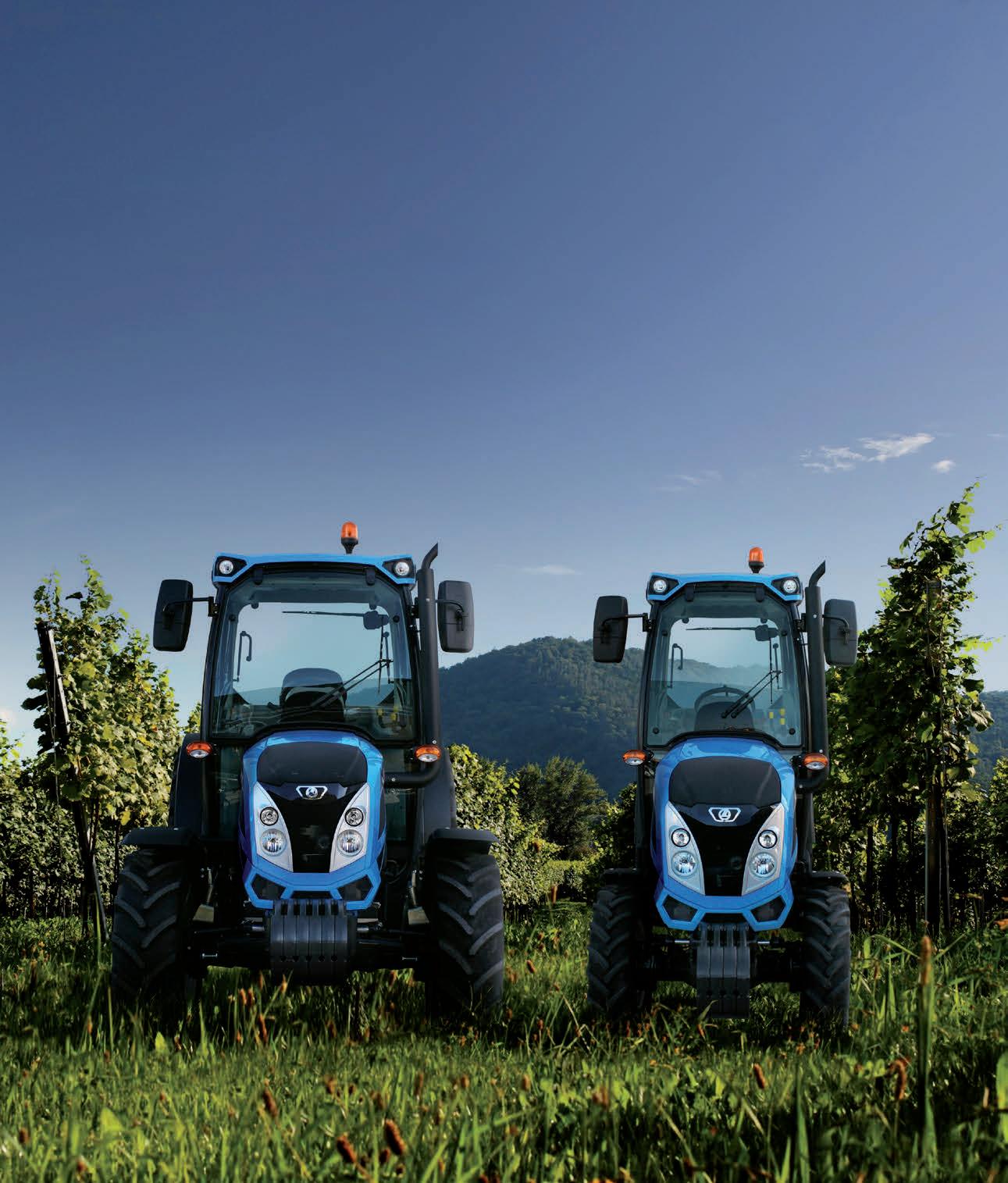

The Rex 4 series specialist tractor range gets a revamp. There
If your cellar door is in a vineyard setting, ensure staff are aware of key biosecurity threats and what to do if something unusual is found. Keep the Biosecurity NZ hotline number (0800 80 99 66) somewhere easily accessible to cellar door staff. Ask them to help protect your vines by ensuring guests remain in designated areas and don’t walk the vineyard rows unsupervised.
If you provide on-vineyard accommodation for tourists, include a brief biosecurity induction as part of your welcome (alongside health and safety). Thank them for helping to protect New Zealand’s industry by following any biosecurity guidelines or protocols you have in place. Outline any rules regarding footwear, walking in the vineyard, and what to do if they find something unusual. If your guests are international travellers, it’s a good idea to ensure the Biosecurity NZ hotline number (0800 80 99 66) is displayed somewhere in all rooms, particularly if they are coming from countries where pests like brown marmorated stink bug are present.
For more information or assistance with biosecurity at your site, get in touch with the NZW biosecurity team on biosecurity@ nzwine.com, and check out the biosecurity resources available for members at nzwine.com/members/sustainability/biosecurity/.
now four 2WD and 4WD versions and up to
The Rex 4 series specialist tractor range


different engine ratings per version. The ideal
and 4WD versions, 4 model ranges.
fuel efficient 70 to
HP engines.
Overall width as narrow as 1.0M.
a wide variety of jobs and maximum productivity in vineyards and orchards. New 70 to 111 HP engines, new transmission with mechanical or hydraulic reverse shuttle, new axles and suspensions,
The Rex 4 series specialist tractor range gets a revamp. There are now four 2WD and 4WD versions and up to 6 different engine ratings per version. The ideal configuration for a wide variety of jobs and maximum productivity in vineyards and orchards. New 70 to 111 HP engines, new transmission with mechanical or hydraulic reverse shuttle, new axles and suspensions, unbeatable ease of handling. Bonnet and cab have been completely redesigned to provide the highest standards of comfort, ergonomics and safety.
leading new flat floor cabin.
options
renowned strength & reliability.
ease of handling. Bonnet and cab have
completely redesigned to provide the highest
comfort, ergonomics and safety.
us
more information
nearest dealer.
by
Spring has officially sprung, and with it the beginning of a new cycle: a new year’s growth, and a new year’s work too. This makes it the perfect time to revisit your health and safety planning and remind workers about how to work safely on all their tasks. This doesn’t need to be a daunting prospect – you can create safe outcomes for your business by planning ahead, keeping your processes up to date and ensuring clear and ongoing communication to all.
Identify where the risks of harm or illness are, consider whether your risk and hazard identification register needs a refresh, and think about how you can best manage the risks and/or hazards identified before the work begins. Covid-19 has illustrated that new risks or hazards can arise at any time, so it helps to have up-to-date systems and processes in place so you can respond to the unexpected.
If you’re looking for a ‘quick win’, you may want to consider that by far the most common injuries suffered by workers in our industry are caused by lifting/carrying/ straining, representing 23% of all injuries. According to ACC data (analysing all winegrowing injuries reported during the five years to 31 March 2022), the prevalence of these injuries was the same for both wineries and vineyards. So, consider your operations and whether you and your workers are consistently following best practice guidance.
Other common causes of injury (for both wineries and vineyards) in this timeframe include:
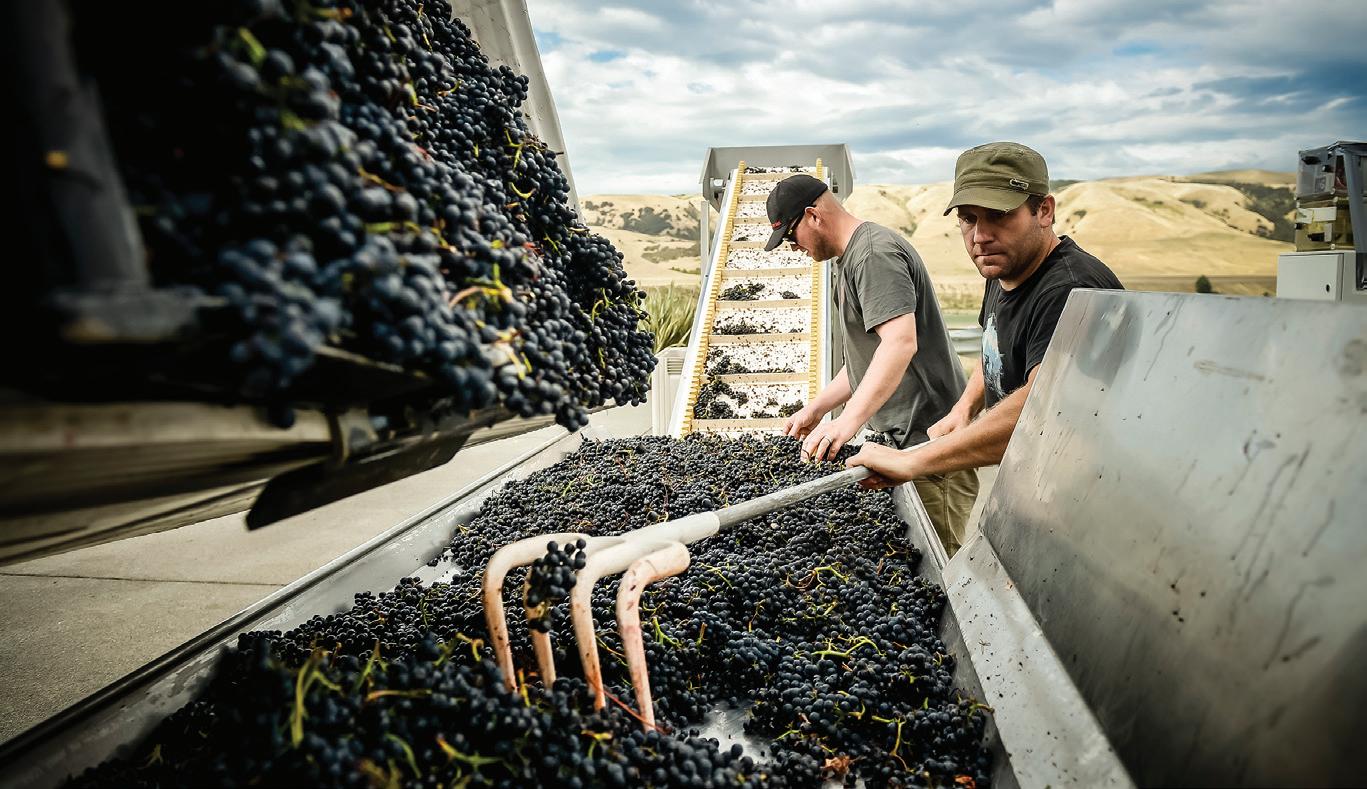
• Loss of balance/person control: 13%
• Gradual process injuries or exposure at work eg, to insecticides: 12%
• Twisting movement: 9%
• Puncture: 8%
• Pushed/pulled: 6%
• Object coming loose/shifting: 6%
• Slipping/skidding on foot: 5%
• Collision/knocked over by object: 3%
• Other: 11%
While the situation will be different for each business, there are some general tips to help prevent injuries from lifting or carrying heavy objects.
• Assess what heavy items in your workplace need to be lifted or carried. How much do they weigh? Are there any specific characteristics about the items that make them difficult to move?
• Train your workers in proper techniques for lifting heavy objects. Consider which items might require more than one person to lift or move them, and create processes for this.
• Use mechanical lifting aids where possible.
• Store items in a way that will make it easier to lift or move them. The most frequently used items should be stored at waist height if possible.
• WorkSafe has more information at worksafe.govt.nz/topic-and-industry/ manual-handling
Health and safety in the workplace includes mental wellbeing as well as physical wellbeing. We also know that physical injury and mental health are closely linked – workers that are under stress at work or have mental health issues are more likely to get injured. So, looking after your workers’ mental wellbeing and including good mental health practices in your planning is critical to ensuring safe outcomes for your business.
A good place to start is to make sure you are regularly checking in with your workers about their wellbeing. This also includes any workers that may be off work due to an injury. ACC research shows that helping an injured worker stay connected to their workplace is good for their physical and mental recovery. It encourages social interaction, routine, and a sense of purpose, which all contribute to a better recovery. ACC has some useful resources to help businesses understand their role in
recovery at work at acc.co.nz/for-business/ supporting-your-injured-employee-torecover-at-work/.
WorkSafe identifies three key concepts to help businesses understand mental health in the workplace:
• Work design: Consider how you design work to reduce or remove the potential for mental harm. Make sure your workers have a clear understanding of their role, with an opportunity for input. If you have workers that often work alone or remotely, think about opportunities to connect with others in the workplace.
• Work environment: Think about the nature of your work environment – how dangerous are the tasks being carried out? Are there other factors such as high levels of noise or extreme temperatures (high or low) that have the potential to cause mental harm? Think about ways to mitigate such factors. For example, ensure all your machinery maintenance is upto-date, schedule tasks outside the hottest part of the day (where possible) and provide appropriate protective clothing and equipment.
• Relationships: Relationships are about the culture of your business as a whole and can influence the mental wellbeing of staff. Some ways to promote a positive workplace culture include ensuring business leaders model the right behaviours, having clear and realistic expectations and communicating these to your workers; promoting work/ life balance and encouraging people to speak up if they are struggling (either to a trusted colleague or an independent service).
See page 8 for more NZW health and safety initiatives
• Find further information and resources on health and safety in the workplace on the NZW member website: nzwine.com/ members/advocacy/health-safety/
• WorkSafe’s website is www.worksafe.govt.nz
• Any questions can be directed to advocacy@nzwine.com
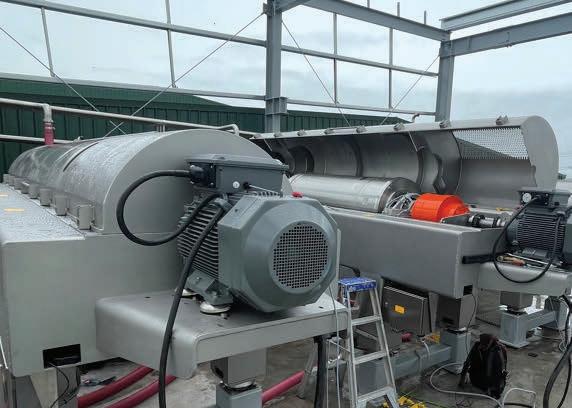

Discover why NZ wineries are moving away from soft presses
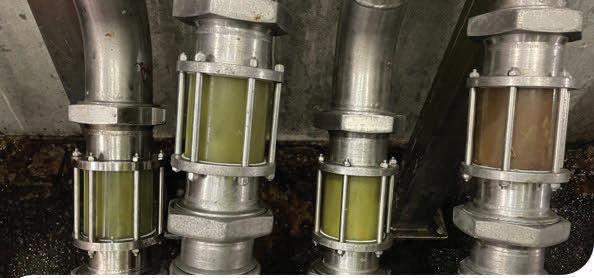
Read the interview with Duncan Shouler, Chief Winemaker, Giesen Group Limited, about the importance of innovation and how Giesen Group’s latest investment in decanter technology is paying off.
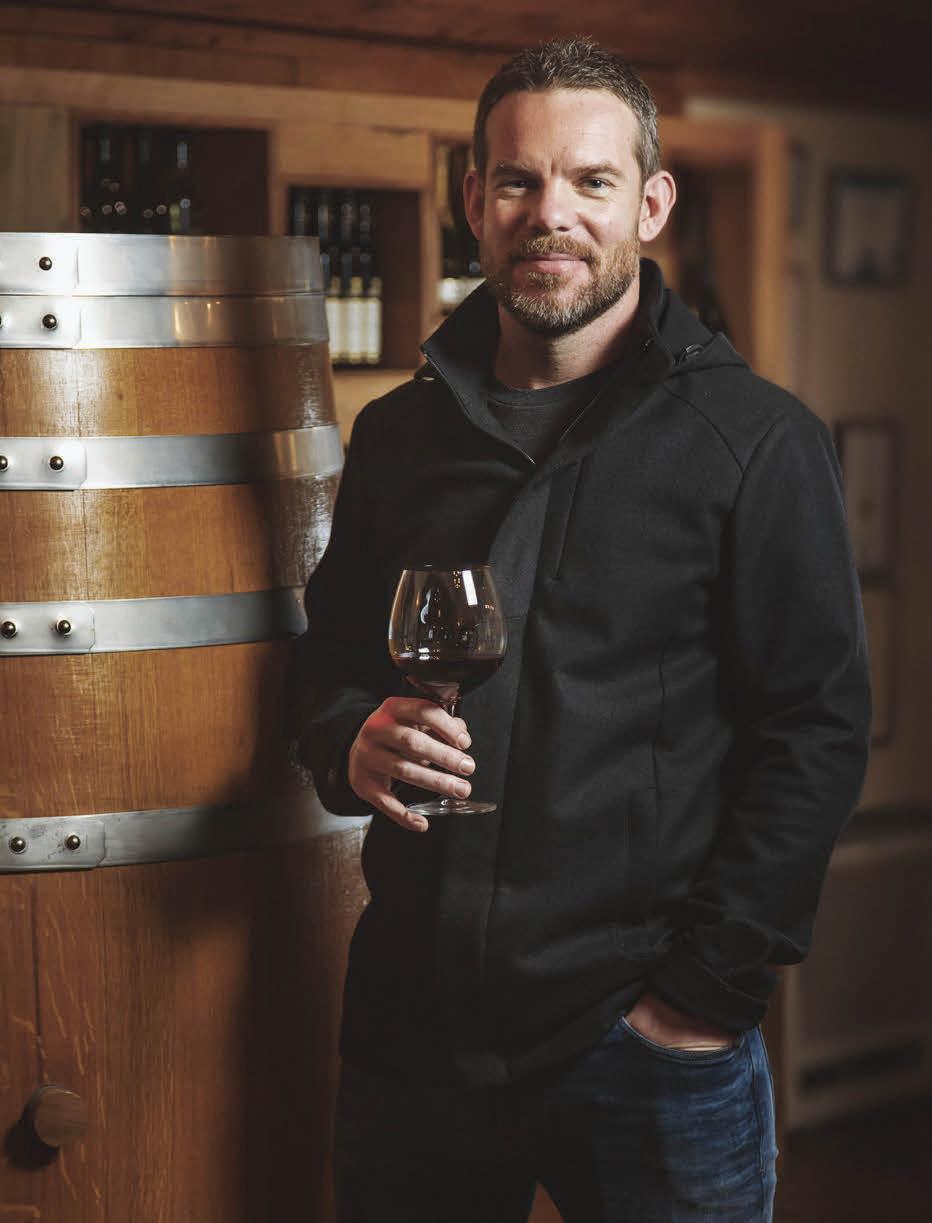

Balancing sustainability with profitability, quality and high yield, the Alfa Laval Foodec decanter offers a more effective way to extract must for wine production.
www.alfalaval.co.nz/giesen


New Holland Agriculture has announced plans to extend its XPower family of electric weeding solutions, showcasing the new XPN concept for narrow vineyards, integrated into the New Holland Braud 9000N carrier.

The new solution builds on the experience gained with the XPS for wide vines during the past two years.
Building on the experience already gained developing the XPS version, aimed at wider spaced vineyards over the last two years, the XPN concept features a generator drive powered by the load-sensing hydraulic circuit of the carrier. Incorporating a new applicator, the machine is said to be specifically suited to the requirements of the narrow vineyards in terms of weeding width and adaptability to the types of vines
encountered, for example in the Champagne region.
Consistent with New Holland’s multipurpose approach, the XPN will be integrated into the existing carrier, comprising two pairs of applicators on the machine’s original tool holders, overseen by the NH IntelliView IV interface.
The use of XPower technology, said to be respectful of the soil and the vine, means the carbon footprint of the XPN makes the system a true alternative to chemical herbicides and tillage for weed control. Developed jointly by AgXtend, New Holland Braud and Zasso, the combined teams have worked together on the project, combining their know-how and expertise to overcome technical challenges, with the aim of a
market launch for the 2023 season.


In other New Holland news, a Stradde Tractor concept, designed by the Italian Pininfarina, design studio, famous for classic automobiles, has offered a window into the future by revealing a machine designed to meet the requirements of the narrow vineyards typical of the premium wine growing regions such as Champagne, Médoc and Burgundy.
Centred around producing high-quality, high-value wines from grapes grown in rows less than 1.5m wide that are often on steep slopes or small areas, traditionally, these grapes are picked by hand, with vine maintenance carried out by a tractor travelling over the rows.
To develop the Straddle Tractor concept
New Holland partnered with Pininfarina, who delivered a futuristic design focussed on high-comfort, high-safety cab, and ready for an electric drive train, in line with New Holland’s Clean Energy Leader strategy.
Inspired by the shape of a champagne flute – tall, wide at the top and tapering down at the bottom – it references the premium wine growers that are its main customer base. The shape, featuring wraparound glass, is said to provide operators with expansive visibility over the vines and surroundings. The interior, accessible via a large single door, incorporates a rotating seat, while wooden trim detailing gives a nod to the industry’s use of wood for wine barrels.


Mini Sigma
Advanced automatic self-cleaning filter. Lightweight and durable with maximum installation flexibility



Innovative oval flow path for accurate flow control and pressure regulation

Italian headquartered Same Deutz-Fahr has taken a majority stake in vineyard robotics start-up company, VitiBot. Situated in the heart of the Champagne region at Reims, the French company makes a 100% electric and autonomous straddle tractor named the Bakus.

While at first sight it might appear to be a strange investment for SDF, the company also owns grape harvester and sprayer maker Grégoire. It is understood that VitiBot will operate like this French subsidiary, remaining independent within the SDF Group.
Described by SDF as an innovation accelerator, the move will allow VitiBot to ramp up its commercial development in vineyard equipment, while together with its parent, both companies will develop a new range of precision farming solutions for a market that rapidly evolving and expected to see huge growth in the future.
SDF CEO Lodovico Bussolati says, “after a thorough search of available technologies, we realised that VitiBot was the best solution for vineyards, while also allowing us to enrich our tractor offer with self-driving and zero-emission electric vehicles”.
VitiBot was founded in 2016 by French wine grower Dominique Bache and his son Cedric, a robotics engineer. Taking five years to develop, the 2.4tonne Bakus tool carrier is available in two versions; the Model S, for straddling 1.75m high x 60cm wide vines, and the Model L, designed for 2.20m high x 80cm wide crops.
The Bakus can be equipped with a range of electric and non-electric tools, including mowers, sprayers and mechanical weeders. Currently, more than 50 machines are already working in vineyards around the world.
Web-based
A long-term, safe and non-leaching solution
reduce


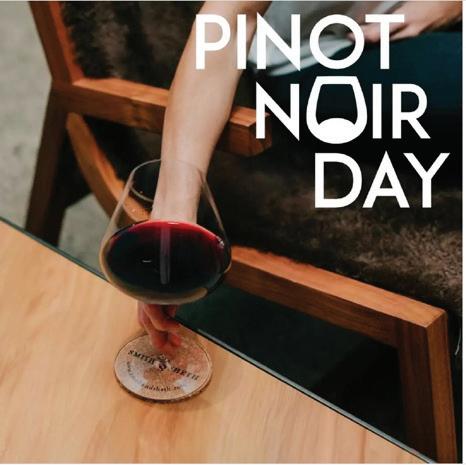
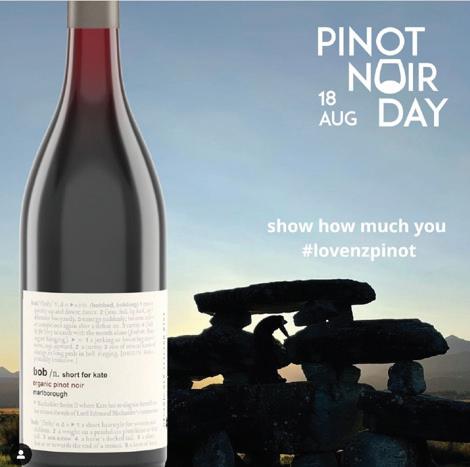


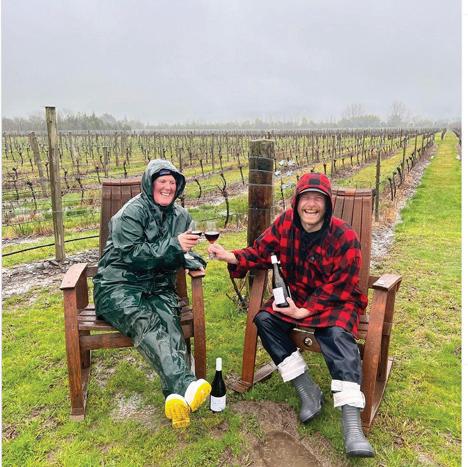
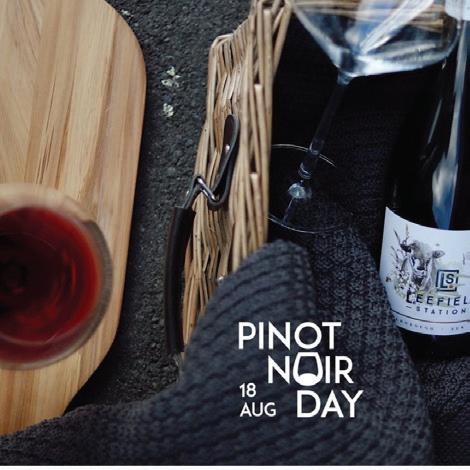

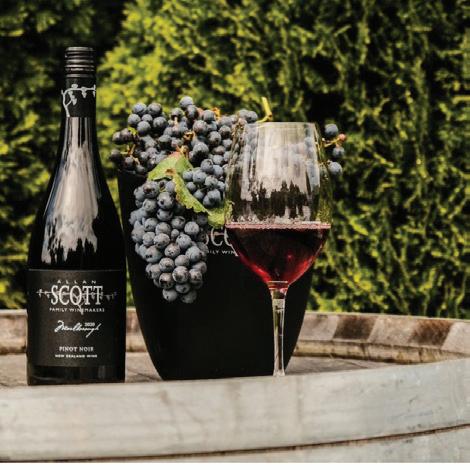

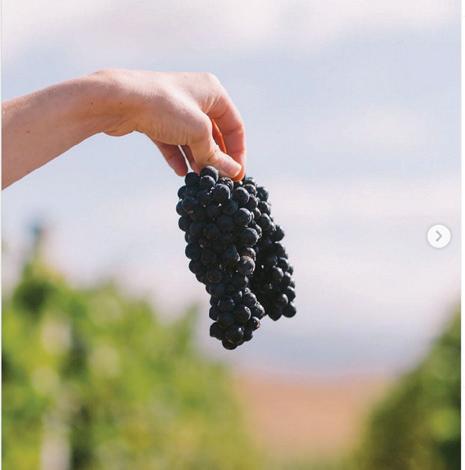
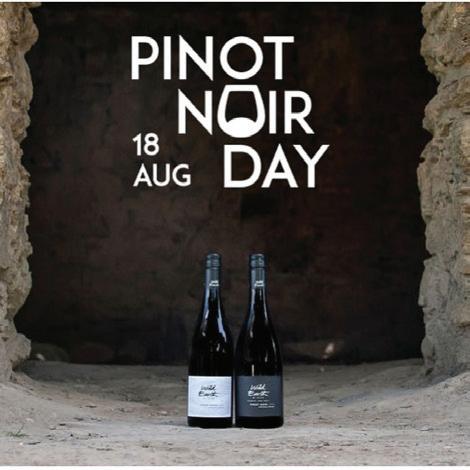

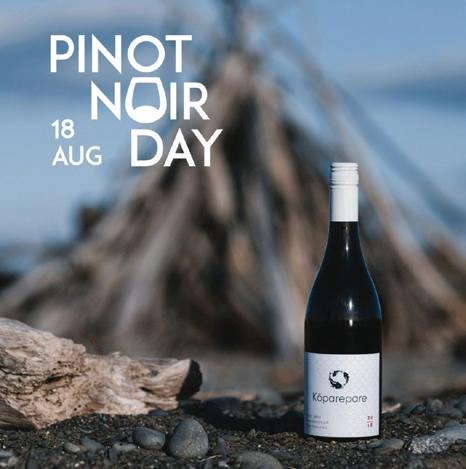

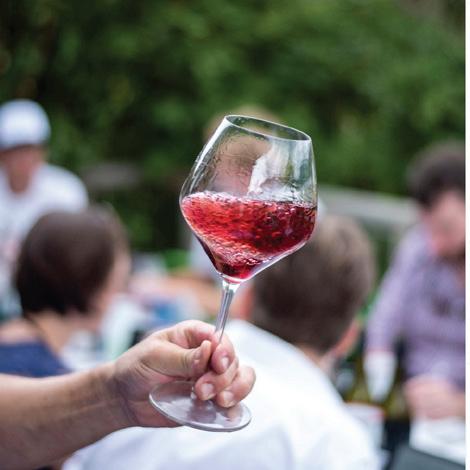




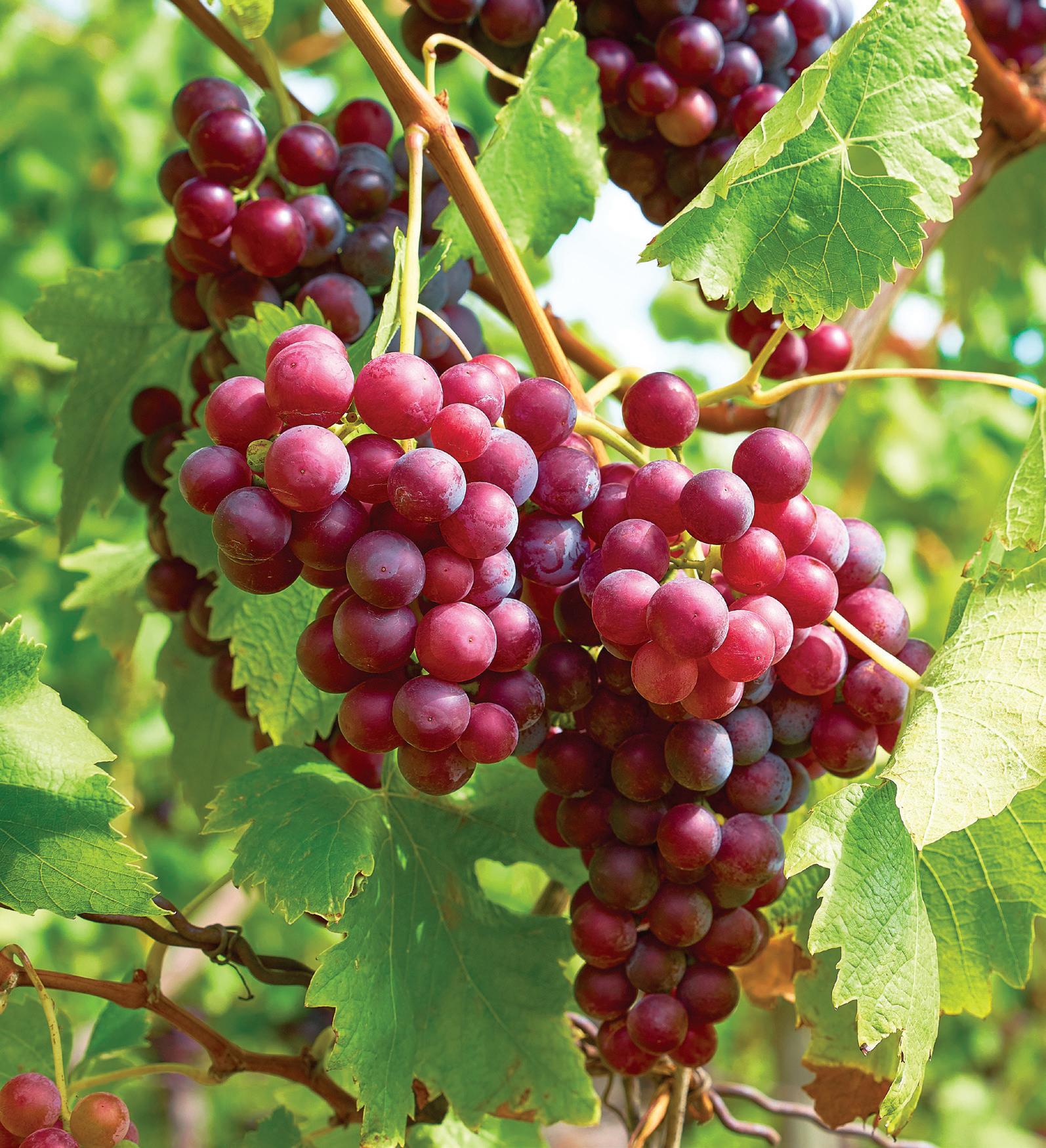
A regular feature to inform industry about research projects being undertaken for their benefit. Newly approved projects (when available) are briefly summarised and longer reports will describe what has been achieved so far. When completed, each project will be reported in full detail with references on nzwine.com
Information and updates on Bragato Research Institute research programmes.
Quality Wine Styles for Existing and Developing Markets
Breaking the quality-productivity see-saw in wine grape production (Pinot Noir Programme)
University of Auckland, Plant and Food Research and Lincoln University (Various) jointly funded by NZW and MBIE
Prevention of quercetin instability in bottled wine
Villa Maria Wines Limited (O Powrie)
The effect of winemaking decisions on polysaccharide content in wine University of Auckland (B Fedrizzi)
Understanding green character in Pinot noir wine Lincoln University (D Torrico)
Exploring reductive aromas in Pinot noir
University of Auckland (B Fedrizzi)
Precipitation of calcium tartrate and other compounds in wine University of Canterbury (K Morison)
Effect of bentonite addition prior to cold soaking on Pinot noir wine colour, tannin and aroma profile Lincoln University (B Tian)
National Vine Collection Virus Eradication Bragato Research Institute (D Lizamore)
Pests and Disease
Improving remedial surgery practices for control of grapevine trunk disease to increase vineyard longevity Linnaeus (E van Zijll de Jong)
Improving the outcomes of mealybug insecticide use in vineyards

Plant & Food Research (V Bell)
Weevils in New Zealand vineyards Bragato Research Institute (L Ibbotson)
Long spur pruning as an alternative to cane pruning for Sauvignon blanc in Marlborough Bragato Research Institute (C Vasconcelos)
Vineyard Ecosystems Programme University of Auckland and Plant & Food Research (Various) Jointly funded by NZW and MBIE
The effect of herbicide, buffered herbicide and under-vine weeding on soil biological communities and other measures of soil health. Bragato Research Institute (M Barry)
Development of an anaerobic chainelongation bioprocess for grape marc valorisation University of Auckland (S Yi)
Evaluating ecologically sustainable ways to disrupt the Hemiandrus bilobatus-vine association Plant & Food Research (J Vereijssen)
Weather and Climate
Sauvignon Blanc Grapevine Improvement Programme Bragato Research Institute (D Lizamore)
Microbial community and vine responses to increasing temperatures in the New Zealand context University of Auckland (S Knight)
Assessing foliar fertiliser for grapevine frost recovery Bragato Research Institute (L Ibbotson)
Hail events are often unforeseen and due to their random and somewhat rare occurrence, hail protection or prevention systems are not normally justified in New Zealand vineyards. The impact of hail damage to a vineyard can range from minor shoot and crop damage to total crop loss and may carry over into the subsequent season.
Significant yield losses in grapevines are a common consequence of severe abiotic stress caused by frost and hail, and the resulting low crops can be linked to a combination of the loss of primary shoots, physical damage or the complete removal of fruit and disruption to plant growth causing sub-optimal conditions for shoot development, flowering and
fruit set (2–8). The intensity of the hail event and the growth stage timing when it occurs will determine the impact on vine yield and fruit quality. Variables such as windspeed and direction, hailstone velocity, hailstone size and the duration of hail all differ between events leading to varying levels of damage to grapevines and other plants (3,5,9).
Early spring hail in Hawke’s Bay (HB), which struck when Chardonnay vines had 2-8 leaves on shoots (EL-9 to EL-15), significantly reduced yields to 20-40% of the long-term average (LTA) (Figure 1). Merlot and Syrah were less affected, achieving 66-85% of the LTA. In North Canterbury (NC), hail which occurred just prior to flowering (EL-16-19) in the same season appeared to have minimal impact on the yields of Chardonnay
This article has been produced as a supplement to the full report of a study carried out by Bragato Research Institute (BRI), which documented the impact and outcomes of two different hail events in New Zealand during spring 2019 (1).
The Australian Wine Research Institute released an updated Factsheet in 2021, which offers an excellent summary of considerations for growers managing grapevines after hail and should be reviewed alongside this document (2).
and Pinot noir vines, despite causing severe leaf and shoot damage to some vines (Figure 2).
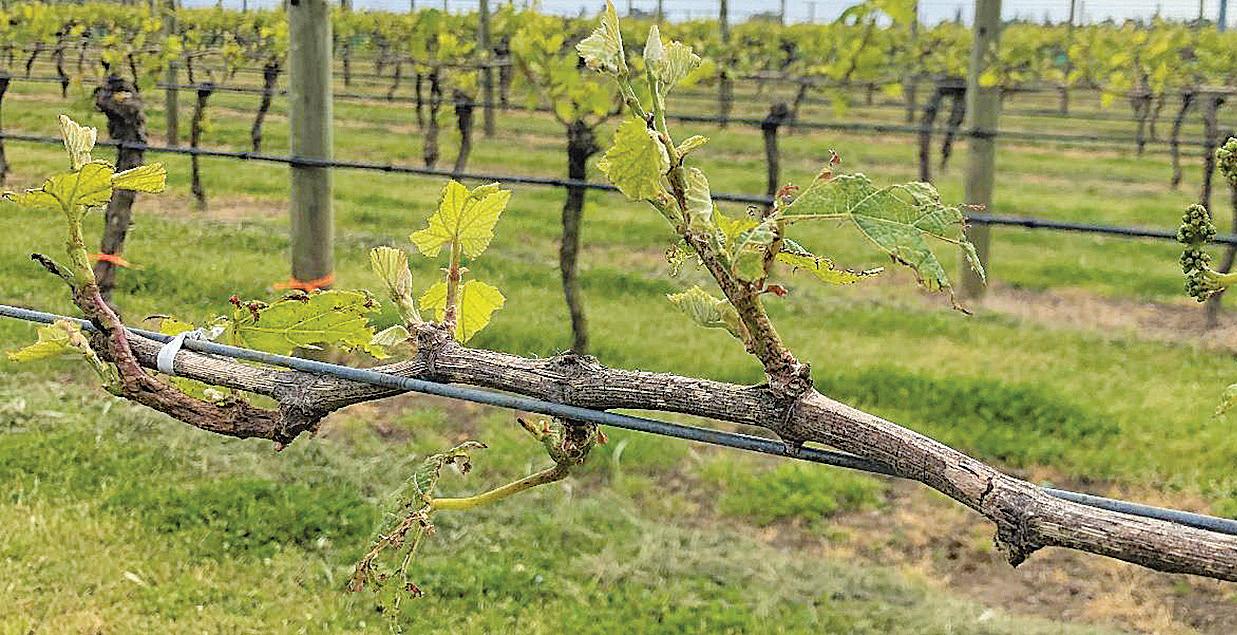
Hail can reduce wine grape quality in several ways including by causing direct damage to inflorescences or bunches, increasing the risk of secondary pest or disease outbreaks, and by introducing a high level of variability in bunch size and maturity. The extent of the impact on quality will also depend on the timing and intensity of the hail event.

Variability in bunch maturity after early spring hail led to fruit being downgraded in all but one of the monitored vineyards in HB. Late spring hail in NC appeared to have much less of an impact on quality, despite significant damage to shoots and leaves on the southern side of the canopy. In NC, direct crop damage was limited to exposed inflorescences on one side of the canopy and almost no primary shoots were lost. Conditions during flowering and the remainder of the season were conducive to the
production of a healthy, ripe and disease-free crop.
Depending on the timing, it may be difficult to assess the potential quality impact immediately after hail. Be prepared to increase the frequency of visits to recovering vines, monitoring for canopy and bunch development, disease, and fruit maturity.
Impact on pruning wood Spring frost and hail events can negatively impact the availability of pruning wood in the following winter, possibly reducing yield potential for the following season (2,6–12). Negative effects of hail or frost damage on pruning wood availability include a lack of suitably positioned canes in the head or at spur positions, forced selection of less productive lateral or water shoots, physical damage and deformities to canes, and insufficient lignification of shoots.
Following the 2019 HB and NC events, pruning outcomes were better than expected, with shoots damaged by hail in early or late spring hail mostly able to be retained as canes in the following winter and target bud numbers normally achieved. There was no evidence that structural damage to canes led to widespread abnormal or poor shoot growth, and even the most severely damaged canes produced fruitful shoots beyond the zone of damage (Figure 3).
The initial impression of growers examining a hail damaged vineyard will not always be aligned with the eventual outcomes at harvest and pruning. Therefore, a careful and thorough objective evaluation immediately after hail is important to inform next steps, including a careful assessment of the size and condition of the remaining crop.
While damage to leaves and shoots may appear extreme, grapevines can recover quickly in terms of vegetative growth. To properly evaluate the impact of the event, it is important to carefully assess the number of shoots and bunches remaining, the proportion of shoot tips missing, and potential impact on next year’s fruiting wood.
The BRI Hail damage assessment scorecard (available in the nzwinegrowers.com/members research library) creates a detailed record of the type and severity of damage, capturing critical
information to inform an initial management response (13). The assessment results also provide a reference point against which to consider future outcomes and evaluate the management response. For the assessment, separate the vineyard into different sampling zones according to the following factors, all of which could influence damage severity and recovery:
• Variety and growth stage
• Row orientation
• Row spacing
• Aspect and slope
• Soil type and vine vigour
• Proximity to shelterbelts or other natural features
Conducting an initial assessment is important but depending on the vine growth stage, the full impact of damage may not be immediately apparent. Regular monitoring of the block during the season will continue to be important, as will close observation during pruning the following winter.
Following the damage assessment and prior to any action, growers must consider the economic viability of the remaining crop, vine nutritional requirements, and whether any immediate intervention is required such as removing damaged tissues or fungicide sprays. The initial impact of hail and seasonal outcomes can be very different even between blocks immediately adjacent to each other. In some cases, vines may recover with only minor implications for crop and vine health.
If there is a viable crop, carefully consider whether any inputs that will incur an additional cost will improve profitability. This aspect of post-hail management was discussed in detail during Grape Days.
Viticultural and climate differences such as vine vigour, pruning type, length of growing season, and business factors such as the value of the fruit and the ability to utilize a secondary crop, can all influence what decisions a grower may make in response to hail damage.
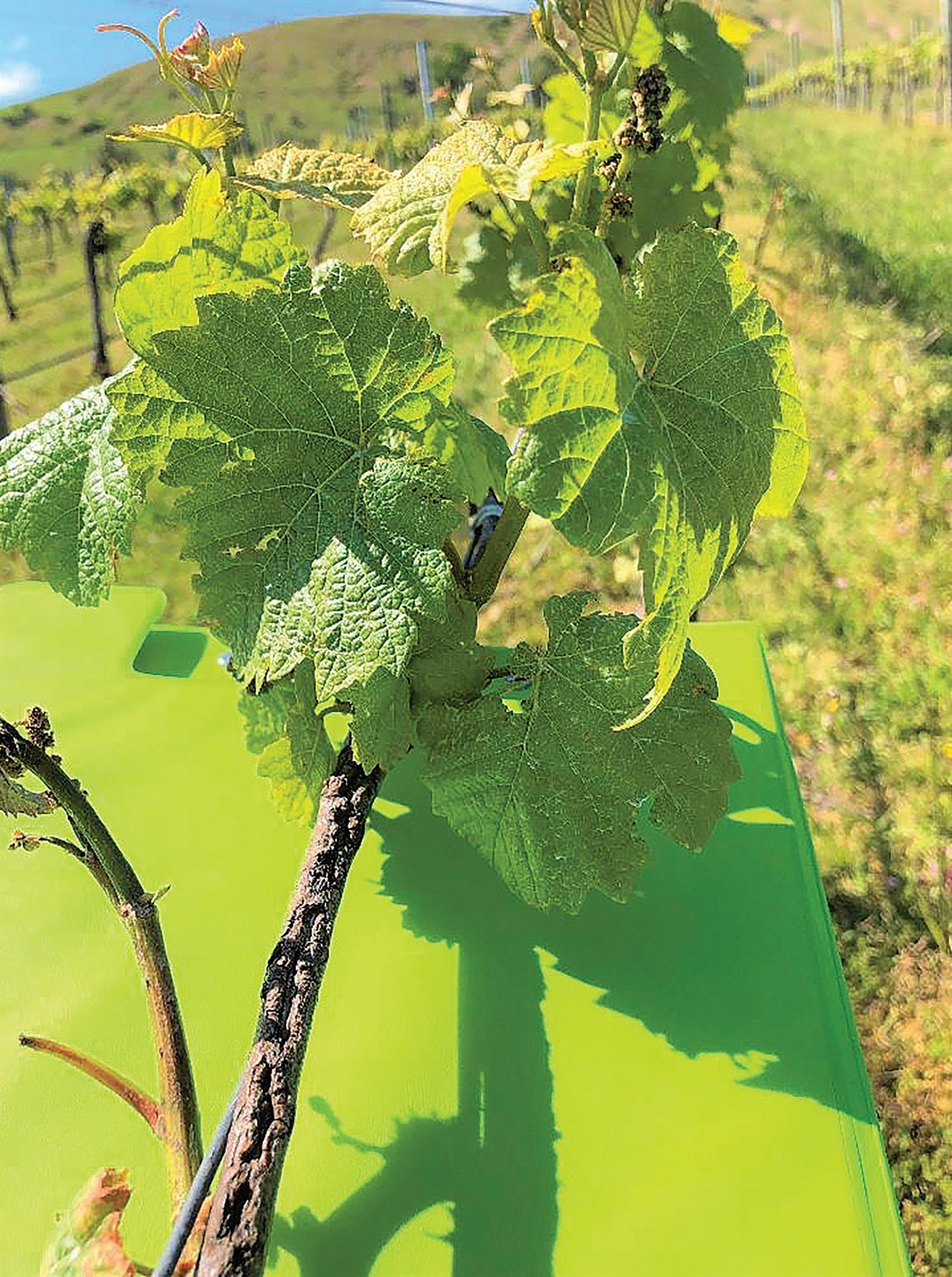
Immediate considerations include:
• Is there enough fruit left to justify cropping in the current season or should the vineyard be mothballed for the summer?
• Is any immediate management intervention required?
• Is there a heightened disease risk?
Should damaged shoots be removed?
• Are damaged shoots going to be suitable for pruning?
• Has next season’s pruning wood been compromised?
• Will there be any need to make changes to irrigation, fertiliser or pesticide programmes?
The rationale for removing damaged primary shoots after early season frost or hail can be to stimulate the production of secondary shoots, reduce lateral growth, improve the quality of fruiting wood, reduce crop and canopy variability, and reduce the risk of a carryover effect to the next season (2,6,7,12,14). There are only a small number of published studies on this subject and the benefit of shoot removal after frost and hail has not always been clear (6,12,15). There is a risk of unjustified cost and removing viable crop, particularly if a blanket approach is taken to a block where variability exists (6,12,15). Some researchers have commented on the high level of uncertainty associated with pursuing a secondary crop in grapevines due to the variability in fruitfulness and unreliability of fruit set, even in varieties known to have more fruitful secondary shoots (6,15).
The following points summarise key findings relating to shoot removal after the HB hail event in early spring 2019. Shoot removal was not considered to be a viable management option after the late spring event in NC.
• There was no clear benefit to shoot removal in mature Chardonnay vines – shoot removal added cost and there was an insufficient yield or quality advantage
• Shoot removal in mature 2-cane pruned vines did not result in increased buds being retained at pruning or a difference in yield in subsequent season
• Shoot removal resulted in hail affected blocks producing fruit that was less ripe, had less disease and lower juice yeast-available nitrogen compared to vines that did not have shoots removed after hail
• Cutting shoots was more expensive compared to breaking shoots, but cut vines had more yield compared to breaking when shoots were removed immediately after hail. There was no advantage to cutting if shoot removal was delayed by 3-4 weeks after hail
• Shoot removal did not appear to reduce variability associated with canopy architecture or fruit maturity
• If removing shoots, it was better to do it early in spring and immediately after hail. Delaying shoot removal by 3-4 weeks after hail resulted in an increased yield and fruit maturity penalty compared to non-shoot removal vines or vines that had shoots removed immediately after hail.
Perhaps the key lessons from this study relating to shoot removal are that vine capacity, crop expectations and the severity and timing of damage are likely to be very different between blocks and hail events. If a decision is made to intervene and remove shoots, this should be done early to maximise any potential benefit, increasing the potential maturity of the block and avoiding wasting vine reserves by producing lateral and secondary shoots prior to removal.
A major challenge for growers managing vines after a hail event relates to the change in vegetative structure after damage. Hail damage can lead to increased lateral growth and a highly variable canopy with shoots of many different growth stages, causing changes in canopy density, variability in crop yield and maturity, and a reduction in pruning wood quality (2,5,9,11).
Normal strategies for wire lifting and leaf removal may not be as effective at maintaining canopy shape or reducing leaf density in the fruiting zone, leading to increased disease risk. The variability in shoot type, bunch development and ripeness that occurs after early season frost or hail events in vineyards may also lead to increased disease risk at harvest. Riper bunches on primary shoots become increasingly susceptible to botrytis, while harvest is delayed waiting for the secondary portion of the crop to ripen adequately (12).
In HB, disease was not reported to be a major issue after hail, helped in part by dry conditions in the approach to harvest, except for one study block where powdery mildew became widespread, reportedly due to challenges managing a highly
variable canopy. In the NC study blocks, growers chose to make no significant change to their management programmes after the hail event. Conditions in the days immediately after hail were warm and dry, meaning disease risk was relatively low. Dry conditions continued for the remainder of the season and, except for some powdery mildew in the upper part of the canopy in localised areas, disease pressure was low.
Nutrition and irrigation Every situation will warrant a different response by the grower depending on the timing of the event, the extent of damage, vine vigour, and whether the vineyard is being cropped. After an early season event, such as the 2019 HB hailstorm, vines must draw on significant reserves to produce replacement shoots and fruit (2). The capacity of vines to recover will vary depending on vine age, soil type, pruning type and vine size, including the root system, trunk, and cordon.
Arguably, there may be little to no benefit to apply fertiliser immediately after the event, during which time the vine may not be able to access or utilise additional nutrients (2). However, the loss of shoots and leaves early in the season may mean that any remaining primary crop is at risk of poor flowering and fruit set (2,5). Nutrient and water deficiencies could lead to reduced production in the following season due to poor latent bud initiation, carbohydrate reserves not being adequately replenished prior to dormancy or poor-quality pruning wood. Conversely, there is a risk of overwatering and applying unnecessary fertiliser. An immediate reduction in crop size and vegetative mass due to hail damage may considerably reduce vine demand for water and nutrients (11). Excessive fertiliser or watering may simply promote the production of poor-quality fruiting wood from lateral shoots and undesirable second set. A resulting increase in canopy density could improve conditions for disease and low light conditions may reduce the fruitfulness of latent compound buds affecting the subsequent season’s
crop (2,8,9).
There are very few published studies examining the effect of fertiliser or water in response to hail or frost damage. In Romania, after a hail event that occurred at a similar growth stage to the HB event, researchers found that while an amino acid based foliar fertiliser improved vine fertility, vine recovery was more influenced by grape cultivar than fertiliser (4). A complex mix of various foliar fertilisers applied to a heavily frosted vineyard in New Zealand appeared to improve yield, but not enough for the vineyard to reach an economic cropping level (16).
In the NC and HB studies, shoots that were damaged by hail in either early or late spring healed, lignified and were able to be wrapped as canes during pruning the next winter with seemingly minimal negative impact on the subsequent season’s crop. A conversion to spur pruning could reduce yield potential in the subsequent season, particularly where the existing cane length may limit the number of spurs and buds that can be retained. For this reason, a conversion to spur pruning should only be considered after hail if canes are so badly damaged, they are unable to be wrapped. This should be assessed on a vine to vine, rather than a whole block, basis.
This study would not have been possible without the full co-operation, access to vineyards and professional insights of all growers involved in the study. Danielle McMillan (Thoughtful Viticulture) was instrumental in enabling the data collection, monitoring and photography of vines in the Hawke’s Bay study sites. The Fruition Horticulture team also supported the harvest of Hawke’s Bay trial vines. Several BRI staff also supported the project; Dr Fang Gou for statistical analysis, Dr Darrell Lizamore and Yuichi Ando for the harvest of North Canterbury trial vines.
1. Ibbotson L. Climate Case Study : Managing hail damaged vineyards (Hawke’s Bay and North Canterbury, Spring 2019) [Internet]. 2022. Available from: m/media/22492/nzw-19-109-hail-final-report-v4-final2jul22.pdf
2. The Australian Wine Research Institute. Managing grapevines after hail damage [Internet]. 2021. Available from: wri.com.au/wp-content/ uploads/2014/12/fact-sheet- hail-damage.pdf
3. Bal SK, Saha S, Fand BB, Singh NP, Rane J, Minhas PS. Hailstorms: Causes, Damage and Post- hail Management in Agriculture. Vol. 5, NIASM Technical Bulletin. 2014.
4. Baniţă S, Baniţă S, Sestraș A, Olteanu I, Călugăr A, Bunea CI. The Influence of Hail and Treatments With Amino-Acids on the Fertility and Biologic Balance of Grapevines. Rom J Hortic. 2020;1(1):111–8.
5. Gourieroux A, Fahey D, Englefield A. Grapevine management guide 2014-15 [Internet]. 2014. Available from: dpi.nsw.gov.au/ data/assets/ pdf_file/0004/1158313/Hail- and-severe-storms.pdf
6. Jones JE, Wilson SJ, Lee G, Smith AM. Effect of frost damage and pruning on current crop and return crop of Pinot Noir. New Zealand Journal of Crop and Horticultural Science. 2010;38(3):209–16.
7. Krstic M, Essling M, Singh L. After the hail hits: best-practice recovery. Australian and New Zealand Grapegrower and Winemaker. 2017;(636):26–7.
8. Trought M, Howell G, Cherry N. Practical Considerations for Reducing Frost Damage in Vineyards [Internet]. 1999. Available from: nzwine. com/members/research- library/literature-review-98-001-reducingfrost-damage/
9. Petoumenou D, Biniari K, Xyrafis E, Mavronasios D, Daskalakis I, Palliotti A. Effects of Natural Hail on the Growth , Physiological Characteristics , Yield , and Quality of Vitis vinifera L . Agronomy. 2019;9(197):1–15.
10. Andrew R, Pecchenino D. Frost control in New Zealand vineyards [Internet]. New Zealand Winegrowers. 2015. Available from: nzwine. com/media/3459/frost-control- low-res.pdf
11. Krstic M, Essling M, Singh L. Managing grapevines post hail damage [Internet]. 2015. p. 2–4. Available from: mvwi.com.au/fact-sheetcategories/hail/
12. McArtney S, Chatterton D, Good M. Dealing with Frost : Describing vine response to frost damage and the impact of post-frost management on vine performance. 2003.
13. Bragato Research Institute. Hail damage assessment scorecard. 2022. p. 1–2.
14. Friend AP, Trought M, Stushnoff C, Wells G. Effect of delaying budburst on shoot development and yield of Vitis vinifera L. Chardonnay “Mendoza” after a spring freeze event. Aust J Grape Wine Res. 2011;17:378–82.
15. Kasimatis AN, Kissler JJ. Responses of Grapevines To Shoot BreakOut Following Injury By Spring Frost. Am J Enol Vitic [Internet]. 1974;25(1):17–20. Available from: ajevonline.org/content/25/1/17.articleinfo
16. Ibbotson L, Ando Y, Gou F. Assessing foliar fertiliser for grapevine frost recovery 2020-2021 Annual Report [Internet]. 2021. Available from nzwine.com/members/research-library/annual-report-20-117-postfrost- fertiliser
The perception of wine quality by consumers is determined by numerous factors, with aspects that are inherent to the wine, such as appearance, nose, and palate playing a leading role. Such intrinsic cues are determined by the physicochemical composition of the wine itself, with the aroma profile and the concentration of different phenolic compounds being principal factors in determining wine quality.

High-quality Pinot noir wines should have distinctive and ripe aromas of red fruits, floral notes and savoury aromas, with well-integrated tannins providing structure, and balanced acidity providing freshness. Pinot noir wine aroma is a function of multiple volatile aroma compounds working together, with the matrix of the wine influencing the perception of these volatiles.
Even though there are many styles of Pinot noir, the best examples exhibit complexity, harmony and varietal typicity. However, expertise is required in order to evaluate wine varietal typicity, so although this parameter is intertwined with wine quality, consumers tend to rate wine quality in terms of enjoyment, meaning the wines providing the most pleasure (with higher scores for liking) receive higher quality ratings. Figure 1 provides an overview of the dimensions of Pinot noir wine quality.
In this study, we employed univariate
Figure 1. Simplistic depiction of the dimensions of quality in Pinot noir wine.
and multivariate analyses of consumer sensory data, featuring 150 panellists, with chemical analyses on phenolics and aroma compounds, for two sets (B and C) of Marlborough Pinot noir wines from the 2019 vintage.
The aim was to discover chemical markers contributing to the perception of Pinot noir quality for New Zealand wine consumers.
To investigate the effect of vine yield, set B was composed of six
research wines generated from the Pinot Noir Programme’s vine ideotype study, produced from grapevines with differences in initial yield, plus one commercial barrel sample. To investigate the effect of different phenolics, set C featured six commercial wines, each with different phenolic profiles.
Pearson correlation coefficients between the sensory attributes measured by consumers showed that all were significantly positively
correlated to each other (‘Colour Liking’, ‘Aroma Liking’, ‘Overall Flavour Liking’, ‘Full-Bodied Flavour’, ‘Silky Texture’, ‘Aftertaste Liking’, ‘Overall Liking’, and ‘Quality Rating’). ‘Colour Liking’ had the weakest correlation with the other attributes. This observation agrees with evidence in the scientific literature that consumers rate wine quality based on hedonic aspects of overall liking and pleasure. Comparisons between the wines in each set for the consumer ratings of quality showed that there were no significant differences based on the initial yields for the set B research wines, even though there was a slight trend between higher quality and lower initial yield.
The commercial barrel sample had significantly lower quality than the other wines. Therefore, chemical markers linked to quality in set B would only tentatively be able to determine any chemical links to differences in initial yields. Significant differences in ‘Quality Rating’ were found within the six set C commercial wines, with higher phenolic profiles correlating with lower quality.
Pearson correlation coefficients between chemical markers in set B and set C identified a subset of compounds that were positively or negatively correlated to ‘Quality Rating’ by consumers. In addition to this first univariate analysis, using analysis of variance (ANOVA), ‘Quality Rating’ was also modelled against chemical compounds using the multivariate partial least squares regression (PLSR) analysis. Two statistical techniques were used to ensure that any markers found were conserved when different techniques are employed.
A subset of explanatory variables associated with quality were identified in both statistical analyses. In set B, ‘Silky Texture’, the phenolics trans-caftaric acid and transcoutaric acid, and ethyl ester ethyl 2-hydroxy-4-methylpentanoate were positive explanatory variables for ‘Quality Rating’, while the C6 alcohol 1-hexanol was a negative explanatory variable.
Higher concentrations of transcaftaric and trans-coutaric acid may indicate the presence of fewer volatile phenol off-odours in higher quality wines, or reduced browning, while ethyl 2-hydroxy4-methylpentanoate has been associated with imparting a blackberry aroma in red wines. 1-Hexanol may be implicated in the perception of negative green herbaceous aromas in lower quality wines.

Fewer chemical markers were significantly associated with ‘Quality Rating’ for the set C commercial wines. In set C, 1-hexanol demonstrated a positive association to ‘Quality Rating’, indicating that the wine matrix and concentration of certain volatiles can influence whether consumers positively or negatively perceive them. 1-Hexanol can impart positive grain or nutty notes, or it can be associated with positive herbaceousness with the inclusion of whole cluster fermentation in higher quality commercial wines. The flavonol kaempferol was identified as a negative explanatory variable for the set C commercial wines in both statistical analyses. Kaempferol is known to have a strong and
unpleasant bitter taste. The greater concentration of kaempferol in lower quality wines agrees with the initial choice of these wines for their higher phenolic profiles. Consumers have been shown to associate bitterness and astringency with lower quality red wines. PLSR enabled more relationships to be shown between quality and chemical compounds when the set B and set C datasets were analysed separately, rather than together. Therefore, studies involving research wines should keep in mind that research wines are not always representative of commercial wines, and any chemical markers identified may not be applicable in terms of quality.
Future work could include a larger set of wines to confirm the relationships between chemical markers and quality, as well as studies on experts to determine whether the same chemical markers are linked to quality as for consumers. It would be beneficial to include a greater diversity of chemical compound families, including the volatile sulfur compounds (VSCs), varietal thiols and methoxypyrazines, which also have a role in Pinot noir aroma. Studies investigating synergistic, masking, and additive effects of different volatile and non-volatile compounds (and modelling these relationships), would also be important to investigate in future research. Lastly, studies involving mouthfeel perceptions should include lipids, proteins, and polysaccharides in addition to phenolic compounds, based on the known role of these key chemical components on body and smoothness.
The Pinot Noir Programme is a multi-year partnership between New Zealand Winegrowers and the Ministry for Business, Innovation and Employment that is managed by Bragato Research Institute. The programme aims to grow returns through disassociating quality from yield in New Zealand Pinot noir production.
Investigation into the production of Syrah in Hawke’s Bay has highlighted specific problems faced by producers in terms of ripening and quality. The cultivar’s own physiology forms part of the issue.
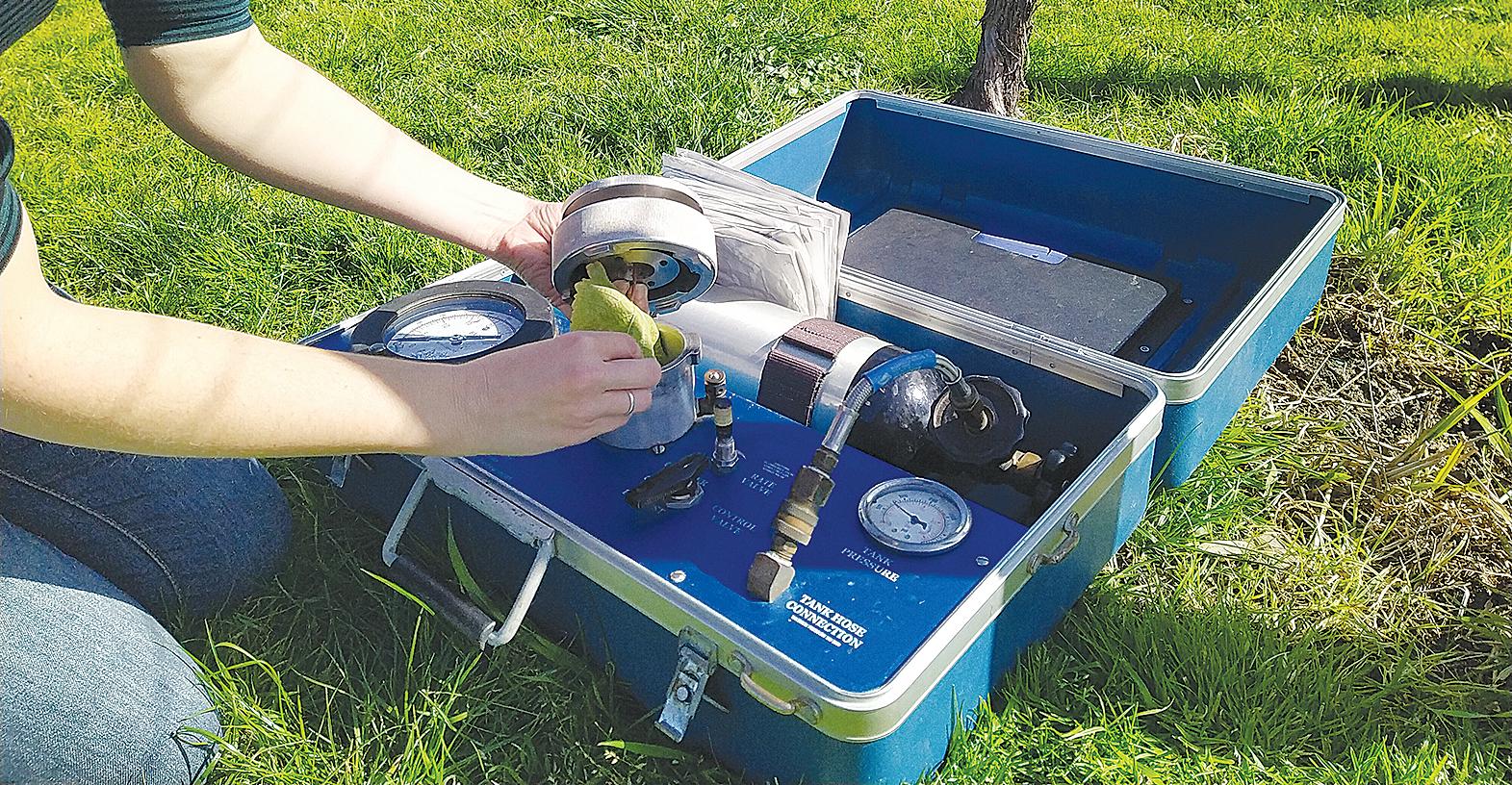
Syrah is naturally very vigorous, which contributes to a poor microclimate in the canopy and around the bunches. This in turn increases the disease pressure, making Syrah prone to Botrytis infections. Its propensity for infection forces producers to harvest before the berries are optimally mature. The shaded and dense canopies also negatively affect colour and flavour development in the grape berries. In addition, Syrah has a tendency to ripen to a point and then stall.
To address these problems, it was
proposed that either the ripening be sped up or the berry be equipped to better stave off infection. To improve ripening, both a deficit irrigation and root pruning treatment were proposed. Induced stress in the vineyard has been shown to decrease vegetative growth and encourage berry development while improving composition. Additionally, a calcium foliar spray was trialled to increase skin toughness and thereby reduce Botrytis infection.
The association between water stress and grapevine growth has been extensively studied in previous years. In general, studies have shown that a moderate amount of stress can contribute positively to berry quality (Chaves et al., 2010 and references therein). Despite these positive
results, the role of water stress in berry growth and development is not completely conclusive. Variation in site, cultivar, rootstock, season and experimental design have produced variable results.
Furthermore, Syrah vines are classified as anisohydric, meaning that they do not readily close their stomata on experiencing soil drying (Coupel-Ledru et al., 2014; Schultz, 2003; Soar et al., 2006). This “optimistic” strategy means that Syrah vines maintain a high level of photosynthetic activity (and water loss) even under relatively dry soil conditions. The ABA-induced stress response which triggers a closure of stomata will only occur once the plant starts experiencing more severe water shortages. This makes deficit irrigation management
Figure 2. A summary of the analytical data from berries sampled in the TA block over the 2020 and 2021 vintages. The arrows indicate an increase or decrease, while the rectangles indicate no difference. The TA 2020 block was pulled out prior to the second vintage and a second block nearby was found, namely the TA 2021 block.
more challenging as a fine line exists between moderate stress, which elicits positive fruit attributes, and severe stress, which leads to defoliation and a reduction in photosynthesis.
To investigate the viability of manipulating vine water stress as a tool to improve Syrah quality in Hawke’s Bay, controlled deficit irrigation in two vineyards was trialled over two vintages. Both vineyards were set up as a split plot, with different irrigation regimes applied to each half separately. One regime was the grower’s standard irrigation regime, informed by soil probes. The other half of the vineyard was not irrigated until the average stem water potential (SWP)
reached a specific target. The target in the 2020 vintage was -1.6 MPa and the target in the 2021 vintage was -1.3 MPa. In each vineyard half, six sampling locations were used for SWP measurements, yield assessments and berry composition analysis.
In the first vintage, a controlled deficit irrigation was shown to elicit changes in Syrah berries, however the blocks (IS & TA) responded differently to the treatment. The TA block did not respond significantly to the deficit irrigation (Figure 2), while the IS block showed what can be taken as a negative response. The increase in water stress led to a decrease in berry weight, a reduction in the accumulation of soluble solids
during ripening, a lower final sugar content at harvest, and a decrease in certain phenolic compounds (Figure 3). This indicated a severe stress response, and the target stem water potential (SWP) measurement was therefore decreased from -1.6 MPa to -1.3 MPa in the second vintage. The following vintage displayed different results. In the TA block, the deficit irrigation did not elicit any significant changes in average berry weight, titratable acidity or pH. A higher Brix level was however measured in the control berries (average difference of 1.17°B). Furthermore, most of the phenolic compounds measured were reduced in the treatment plots, including the flavanols, flavonoids and total phenolics. The anthocyanins remained unaffected (Figure 2).
In the IS block, it was observed that sugar concentration was not affected by the deficit irrigation, however the acids were significantly higher in the deficit irrigation plots resulting in a higher titratable acidity (average difference of 0.64g/L) and lower pH (average difference of 0.06) at harvest. All of the measured phenolic compounds were also significantly increased with a deficit irrigation treatment (Figure 3).
The variability in results is quite telling in that it highlights not only the intricacies involved with conducting this type of trial on different soil types, but also emphasises the challenges of
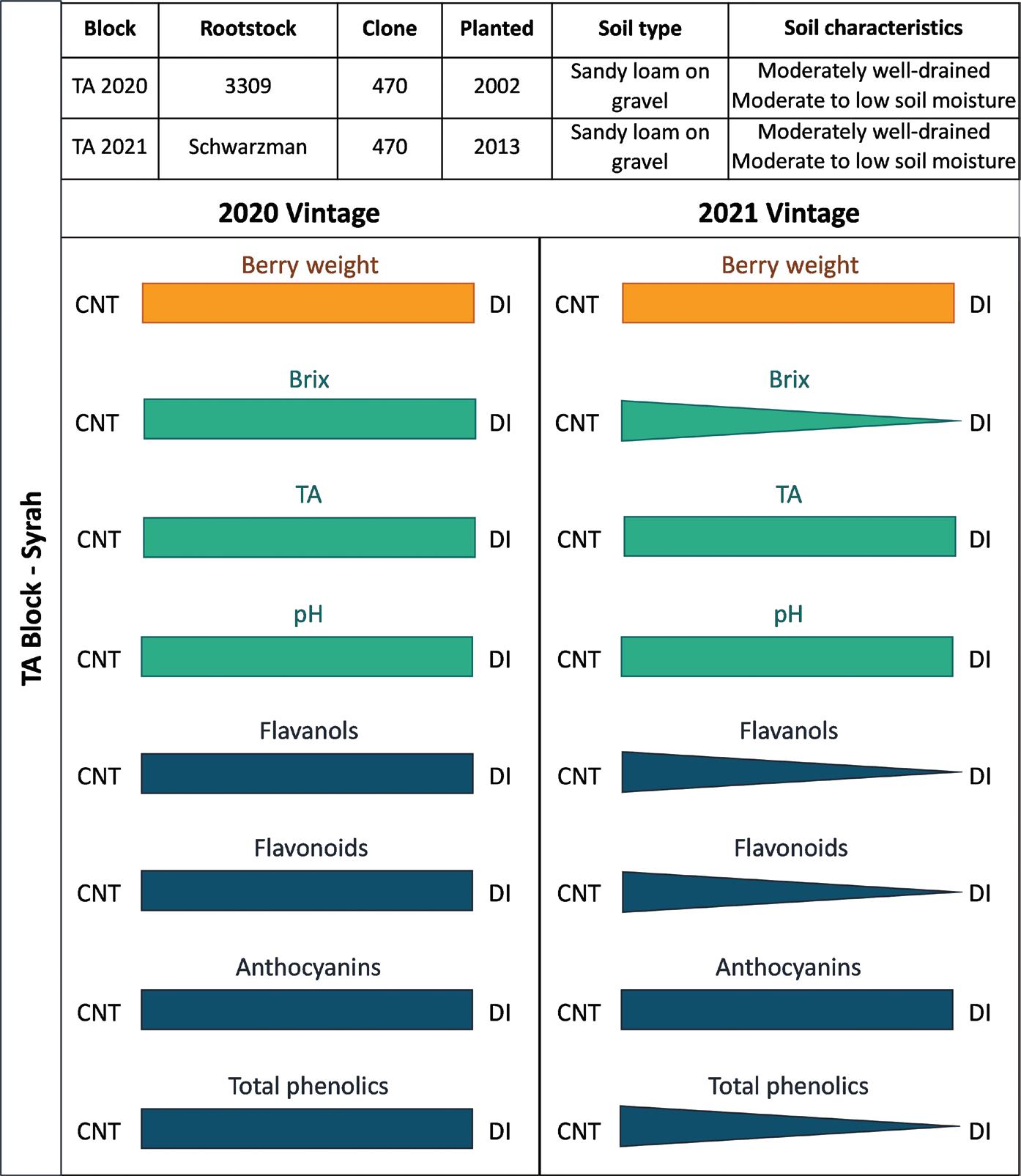
“Despite its success as a method of improving berry composition, there is a risk associated with using deficit irrigation in Syrah vineyards and relying on one output from a single tool to inform decisions on when to irrigate.”
working with certain cultivars in different environments. Imposing a water stress during berry ripening has become a routine strategy for the modulation of grape berry composition and wine characteristics, however responses of Syrah to deficit irrigation have been variable. Despite its success as a method of improving berry composition, there is a risk associated with using deficit irrigation in Syrah vineyards and relying on one output from a single tool to inform decisions on when to irrigate. This deficit irrigation trial highlighted the difficulty in assessing the appropriate stress point for anisohydric cultivars, but also provided further insights into using deficit irrigation as a tool for improving quality parameters in Syrah in Hawke’s Bay.
A further point of interest which has been highlighted by this trial is the potential impact of the rootstock. Different rootstocks are known to impart various characteristics on the scion including a tolerance to drought (Serra, Strever, Myburgh, & Deloire, 2014). Further investigation into how different rootstocks may be utilised in conjunction with water deficit would provide added insights into their potential use and impacts on grapevine physiology and berry development.
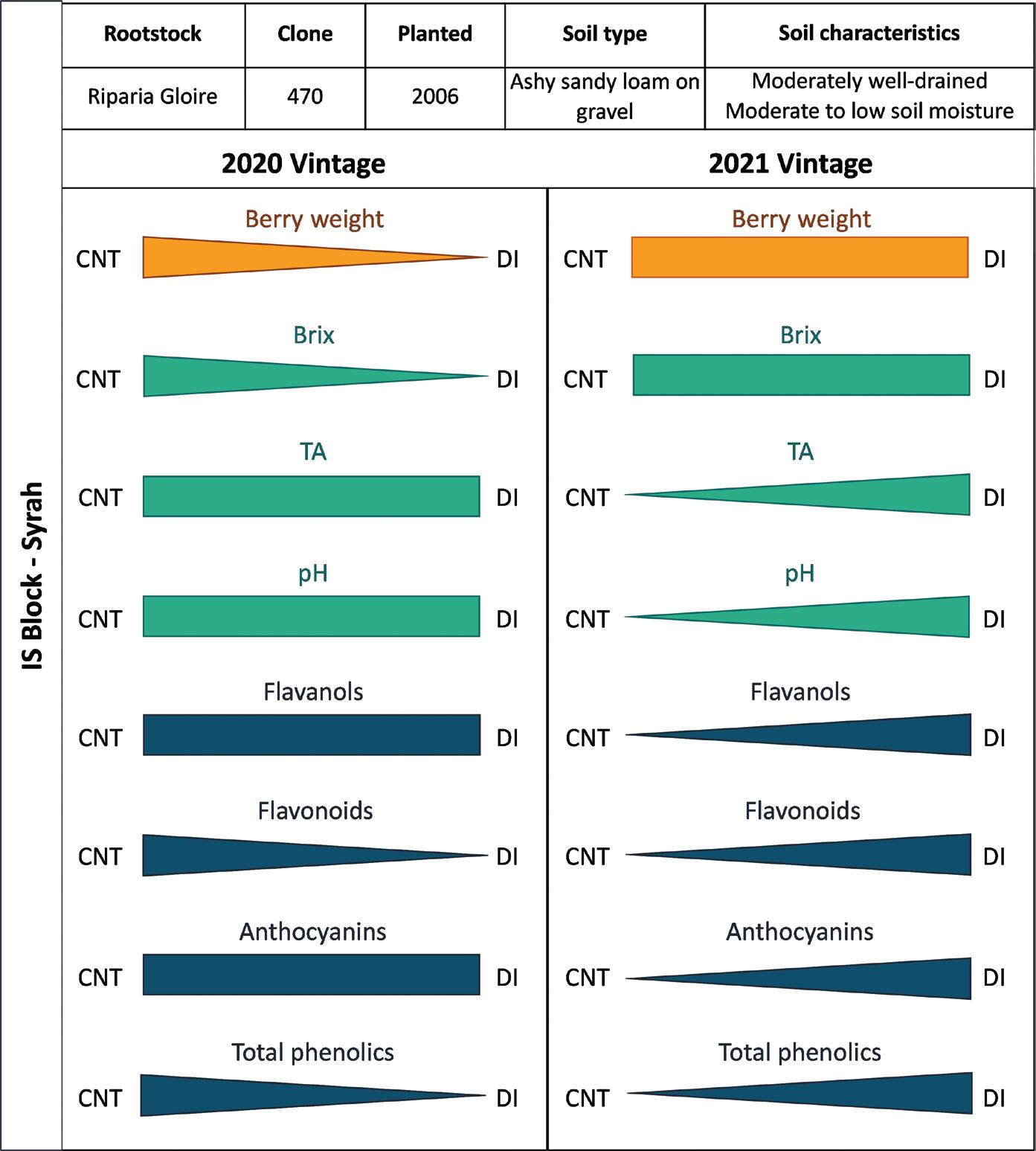
Root pruning has been used as a tool to limit vine growth, reduce vigour and thereby improve the bunch microclimate. This practice carried out at budburst aims to limit growth through reducing the available resources for new shoot growth (Winkler, 1965) as well as by reducing the effective surface area for absorption of water and nutrients (Dry & Loveys, 1998).
The success of root pruning however has been shown to be variable based on time of pruning, the biomass of roots removed (Geisler & Ferree, 1984), soil type and grapevine morphology (Centinari, Vanden Heuvel, Goebel, Smith, & Bauerle, 2016; Giese, Velasco-Cruz, Roberts, Heitman, & Wolf, 2014)
Figure 3. A summary of the analytical data from berries sampled in the IS block over the 2020 and 2021 vintages. The arrows indicate an increase or decrease, while the rectangles indicate no difference.
To investigate the use of root pruning as a tool to improve Syrah quality in Hawke’s Bay, root pruning down to at least 500 mm was performed prior to budburst in four rows on both sides of the vine in two Syrah blocks.
Shoot growth and vine vigour were measured from budburst through to the first trim to assess the impacts of root pruning on vine growth.
At harvest, berry samples were analysed for Brix, TA, pH and phenolic compound composition to determine whether root pruning elicited any changes in berry composition. On observation of the data, it was apparent that both blocks did not show any significant response to the root pruning treatment. Although this technique
has been shown to reduce vine growth rate (Giese, Wolf, VelascoCruz, Roberts, & Heitman, 2015), there is little consensus on the effectiveness of root pruning as a tool to limit grapevine vigour and improve berry and wine quality. It seems that it is a technique to be assessed on a case-by-case basis as it is dependent on a multitude of factors.
Calcium is an important mineral nutrient for the integrity of plant tissues, particularly those of the epidermis, which form a barrier protecting the plant cell from invading pathogens. Calcium ions form the cross-links between
pectins in the plant cell wall, thereby reinforcing their structure and increasing skin toughness consequently reducing the fruit’s susceptibility to bunch rots (Decreux & Messiaen, 2005; Hocking, Tyerman, Burton, & Gilliham, 2016; Martins, Billet, Garcia, Lanoue, & Gerós, 2020). Calcium sprays can therefore potentially be used as a tool to allow extended hang-time of Syrah grapes, thereby allowing for full flavour development.
To investigate its efficacy in Hawke’s Bay Syrah vineyards, select rows in four individual blocks were sprayed with calcium chloride (Stopit) at 5 L/ha two weeks after véraison and twice more at approximately two week intervals. The berries were sampled at harvest and analysed for Brix, TA, pH and phenolic compound composition. A rot assessment was also done and the berry skin toughness assessed.
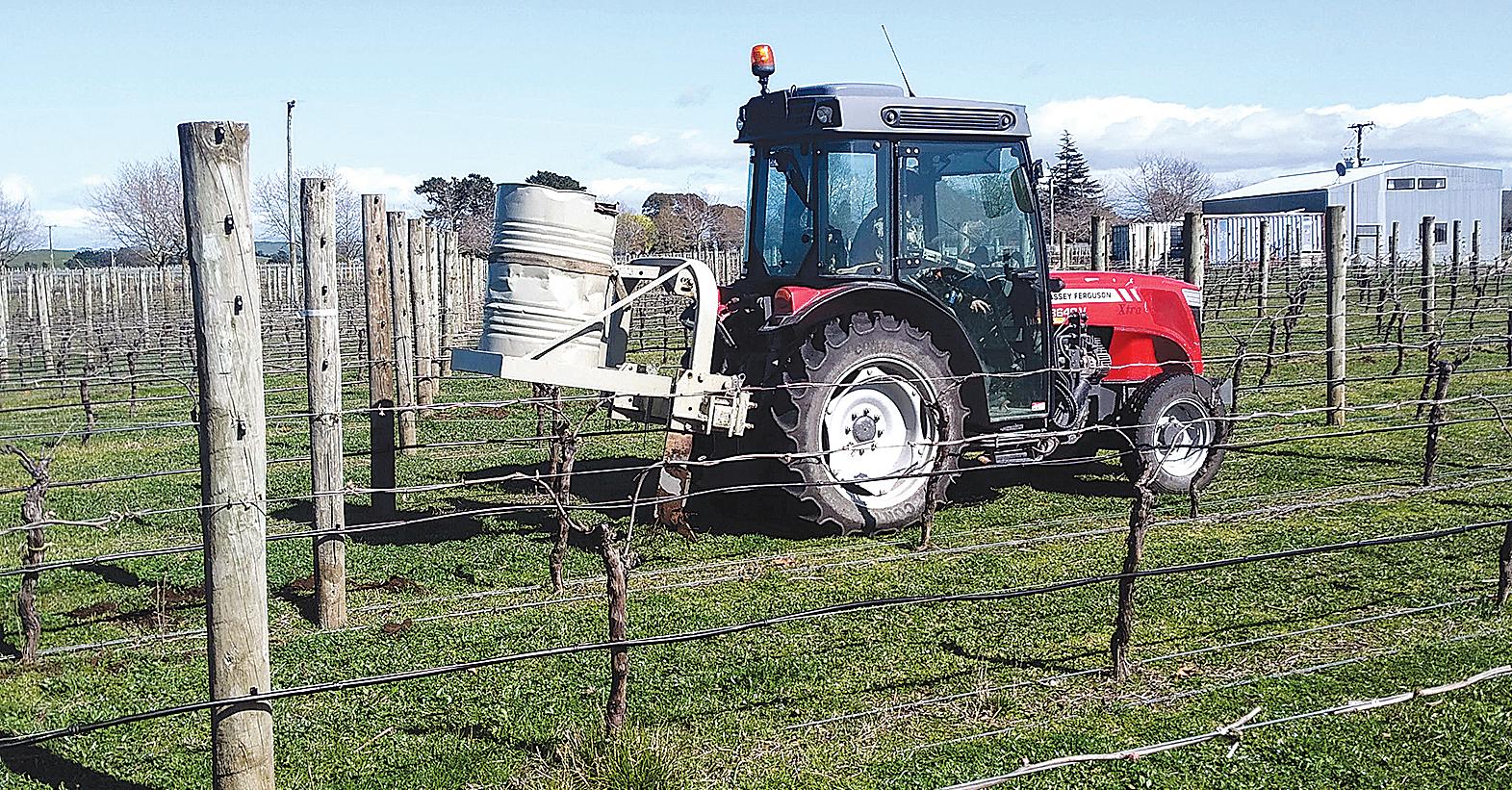

The results from this study indicated that a bunch-line calcium spray applied during ripening increased the skin toughness of the Syrah grape berries without significantly affecting berry composition (Figure 6).
Similar results were reported by Martins et al. (2018 & 2020) who proposed a number of different hypotheses including a greater deposition of pectin-like material in the cell wall of the berry skins,
a greater aggregation of hydrated Ca-linked gel structures and a consequent increase in cell wall stiffness and a downregulation of the genes responsible for the loosening and expansion of plant cell walls.
The application of calcium did not however result in a difference in botrytis incidence, although the disease pressure was very low due to the hot dry weather in both years of the study.
The application of a bunch-line calcium spray certainly showed some promise in improving berry skin toughness. Future work could include a fine-tuning of timing of application to ascertain when the most benefit will be gained.
To read the full report go to nzwine. com/syrah-quality-2021
Figure
Centinari, M., Vanden Heuvel, J. E., Goebel, M., Smith, M. S., & Bauerle, T. L. (2016). Root-zone management practices impact above and belowground growth in Cabernet Franc grapevines. Australian Journal of Grape and Wine Research, 22(1), 137–148. https://doi.org/10.1111/ajgw.12162
Chaves, M. M., Zarrouk, O., Francisco, R., Costa, J. M., Santos, T., Regalado, A. P., … Lopes, C. M. (2010). Grapevine under deficit irrigation: hints from physiological and molecular data. Annals of Botany, Vol. 105, pp. 661–676. https://doi.org/10.1093/aob/mcq030
Coupel-Ledru, A., Lebon, É., Christophe, A., Doligez, A., Cabrera-Bosquet, L., Péchier, P., … Simonneau, T. (2014). Genetic variation in a grapevine progeny (Vitis vinifera L. cvs Grenache×Syrah) reveals inconsistencies between maintenance of daytime leaf water potential and response of transpiration rate under drought. Journal of Experimental Botany, 65(21), 6205–6218. https://doi.org/10.1093/jxb/eru228
Decreux, A., & Messiaen, J. (2005). Wall-associated Kinase WAK1 Interacts with Cell Wall Pectins in a Calciuminduced Conformation. Plant and Cell Physiology, 46(2), 268–278. https://doi.org/10.1093/pcp/pci026
Dry, P. R., & Loveys, B. R. (1998). Factors influencing grapevine vigour and the potential for control with partial rootzone drying. Australian Journal of Grape and Wine Research, 4(3), 140–148. https://doi.org/10.1111/j.1755-0238.1998.tb00143.x
Geisler, D., & Ferree, D. (1984). The influence of root pruning on water relations, net photosynthesis, and growth of young Golden Delicious apple trees. Journal of the American Society for Horticultural Science, 109(6), 827–831. Retrieved from https://agris.fao.org/agris-search/search.do?recordID=US19850058657
Giese, G., Velasco-Cruz, C., Roberts, L., Heitman, J., & Wolf, T. K. (2014). Complete vineyard floor cover crops favorably limit grapevine vegetative growth. Scientia Horticulturae, 170, 256–266. https://doi.org/10.1016/j. scienta.2014.03.011
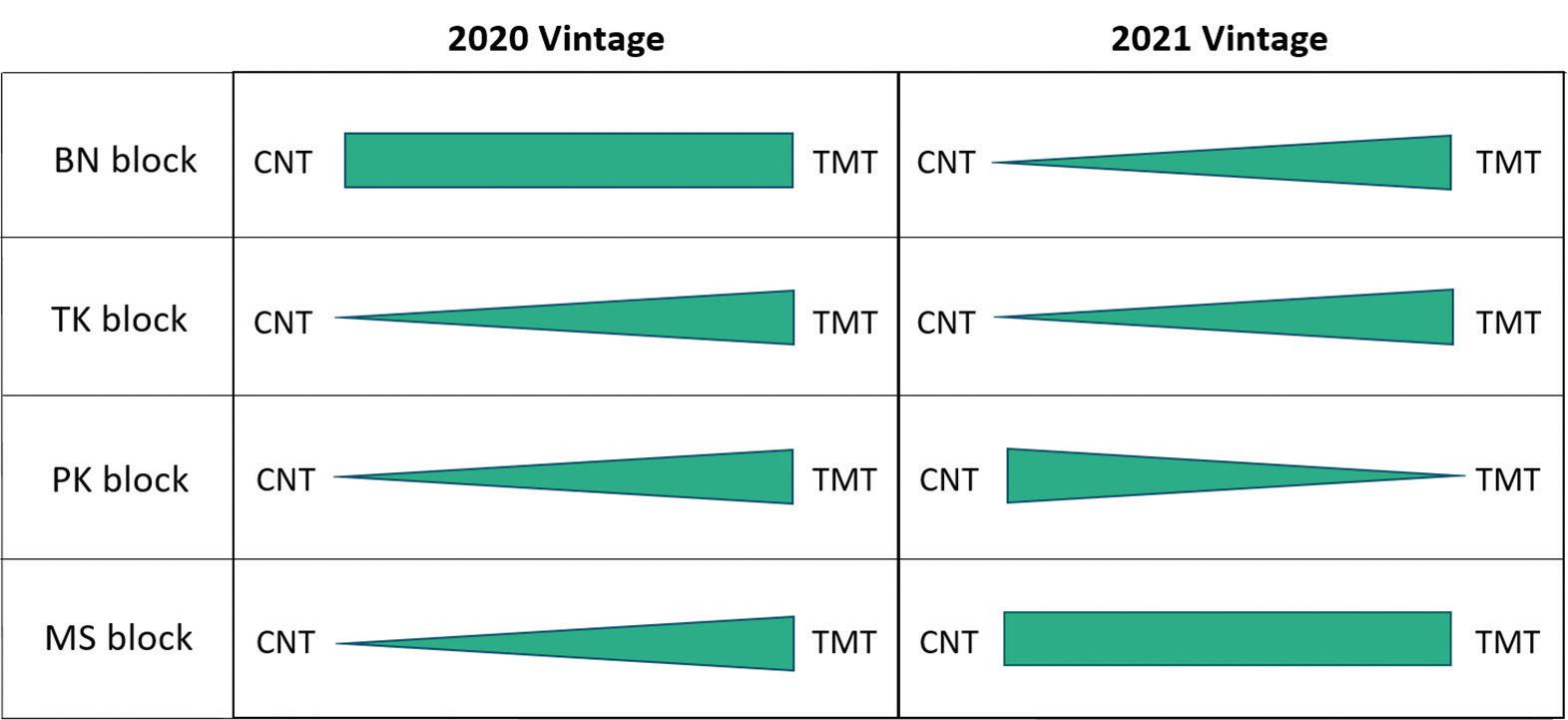
Giese, G., Wolf, T. K., Velasco-Cruz, C., Roberts, L., & Heitman, J. (2015). Cover crop and root pruning impacts on vegetative growth, crop yield components, and grape composition of cabernet sauvignon. American Journal of Enology and Viticulture, 66(2), 212–226. https://doi.org/10.5344/ajev.2014.14100
Hocking, B., Tyerman, S. D., Burton, R. A., & Gilliham, M. (2016, April 29). Fruit calcium: Transport and physiology. Frontiers in Plant Science, Vol. 7. https://doi.org/10.3389/fpls.2016.00569
Martins, V., Garcia, A., Costa, C., Sottomayor, M., & Gerós, H. (2018). Calcium-and hormone-driven regulation of secondary metabolism and cell wall enzymes in grape berry cells. Journal of plant physiology, 231, 57 - 67. doi. org/10.1016/j.jplph.2018.08.011
Schultz, H. R. (2003). Differences in hydraulic architecture account for near-isohydric and anisohydric behaviour of two field-grown Vitis vinifera L. cultivars during drought. Plant, Cell and Environment, 26(8), 1393–1405. https://doi.org/10.1046/j.1365-3040.2003.01064.x
Serra, I., Strever, A., Myburgh, P. A., & Deloire, A. (2014). Review: the interaction between rootstocks and cultivars (Vitis vinifera L.) to enhance drought tolerance in grapevine. Australian Journal of Grape and Wine Research, 20(1), 1–14. https://doi.org/10.1111/AJGW.12054
Soar, C. J., Speirs, J., Maffei, S. M., Penrose, A. B., McCarthy, M.


